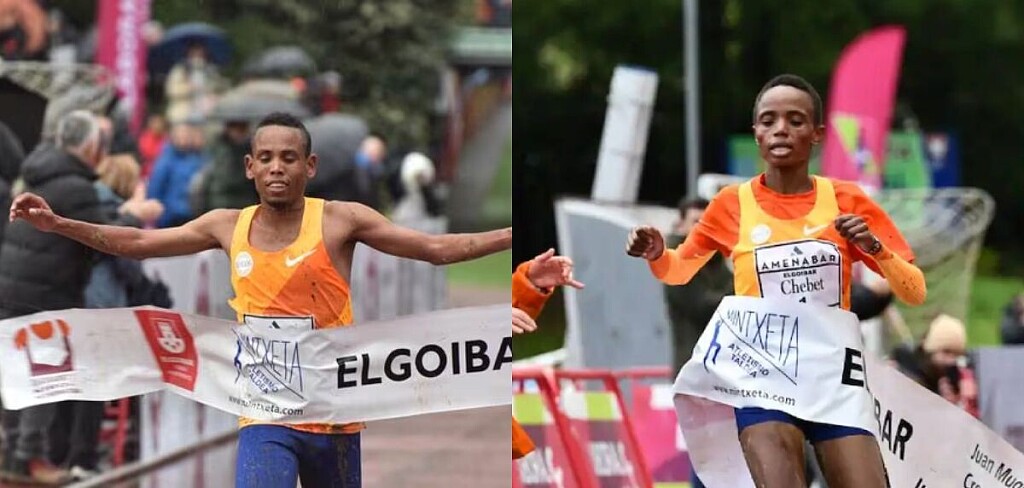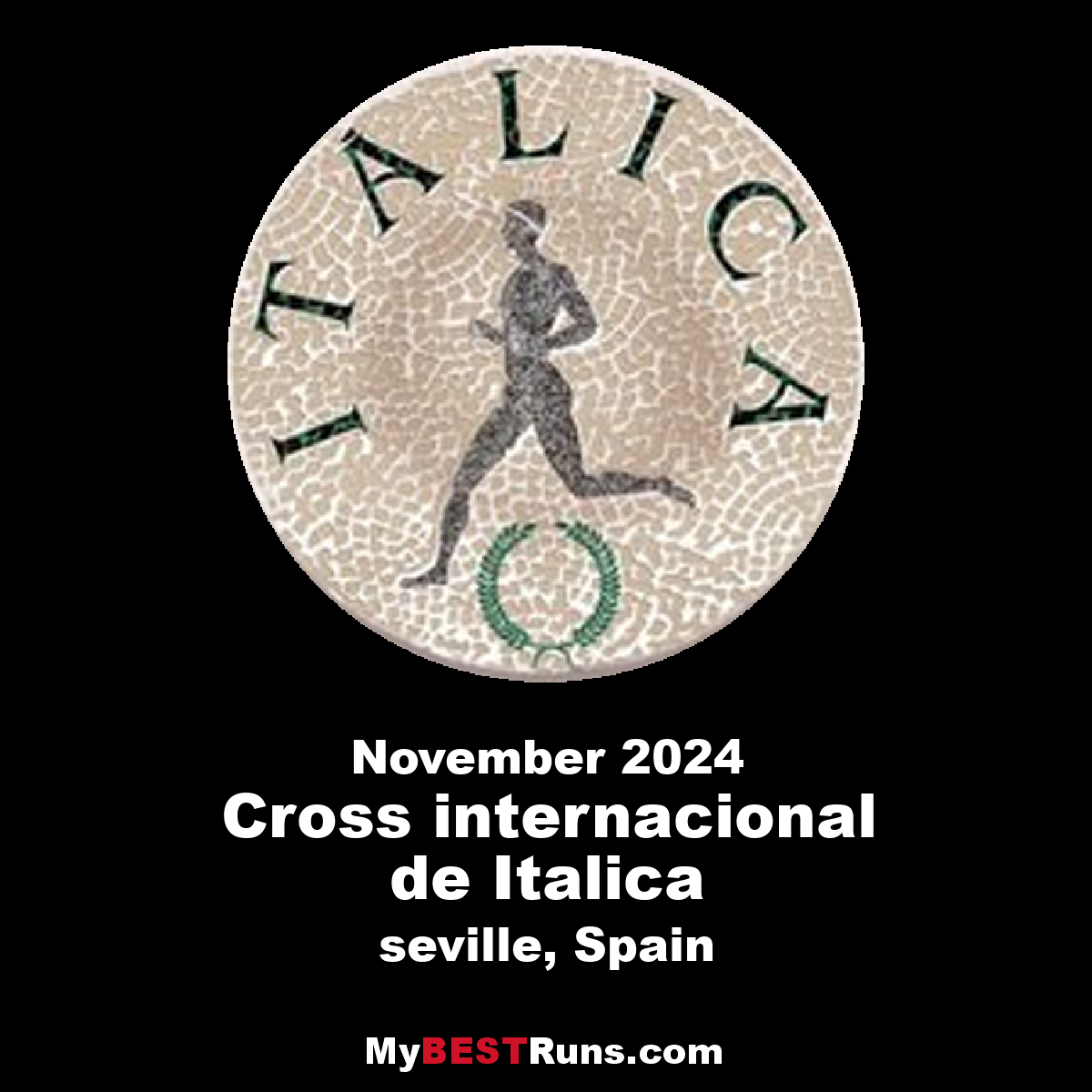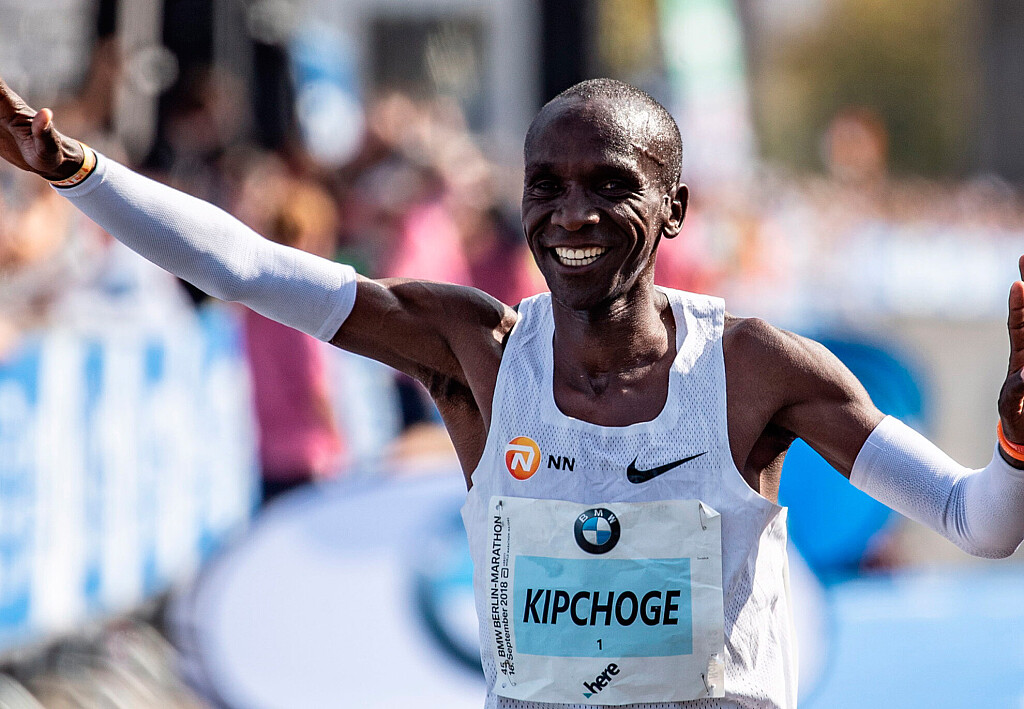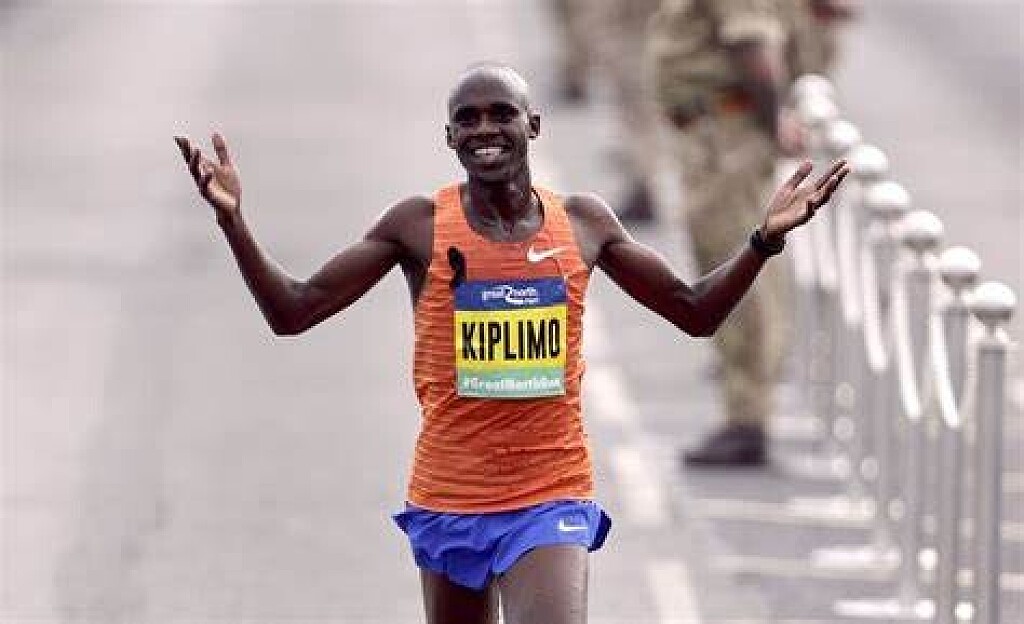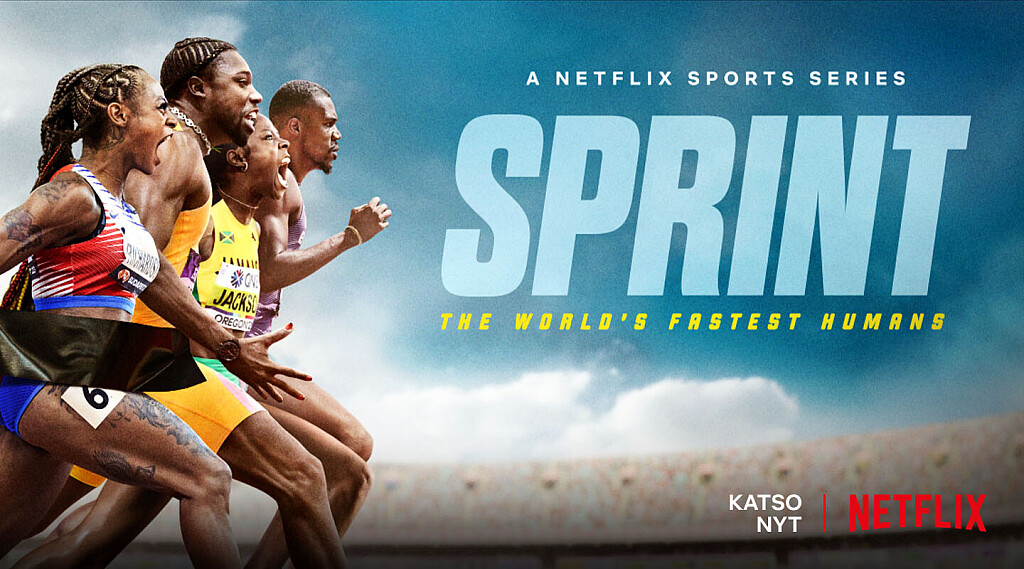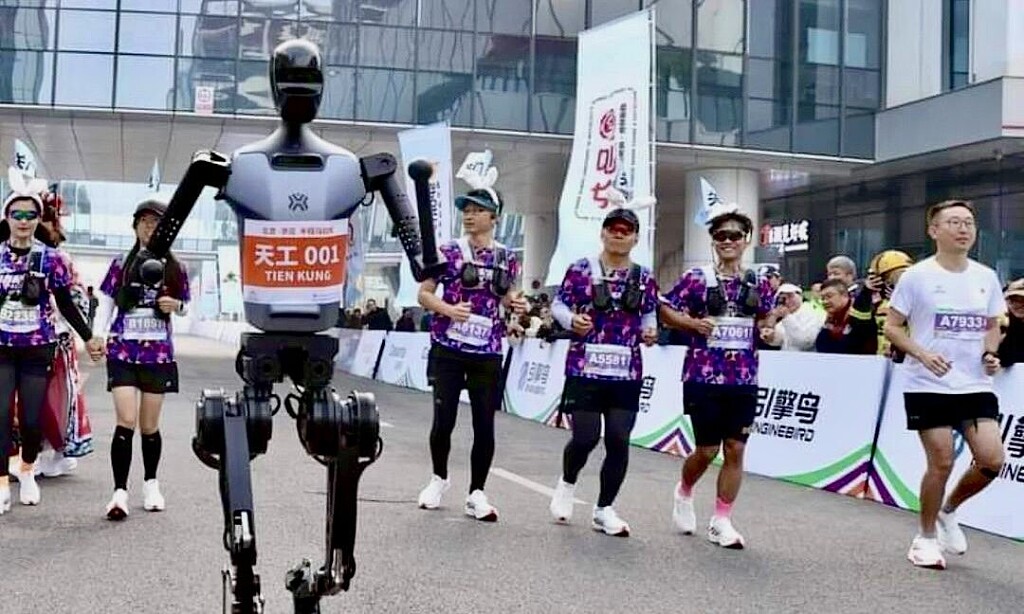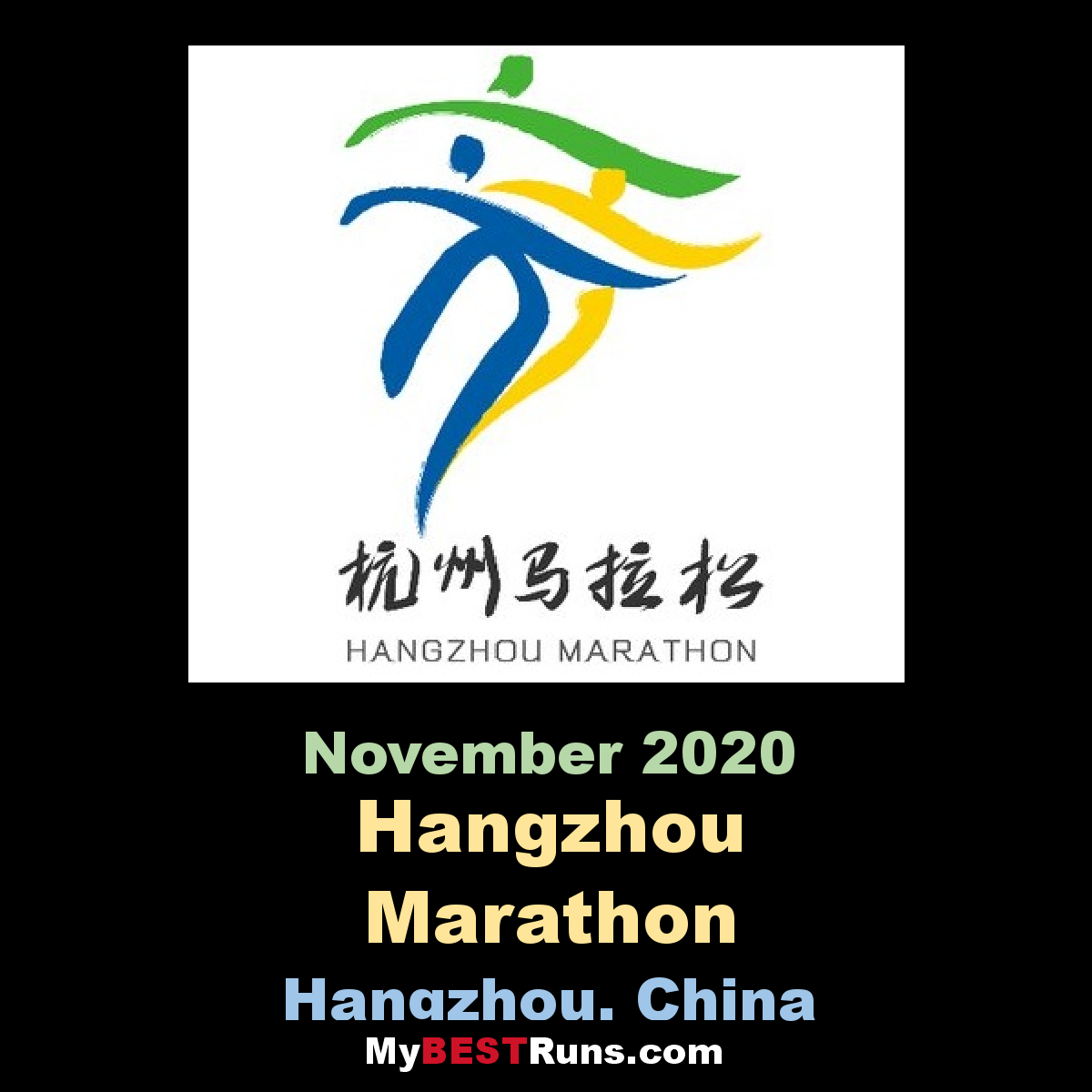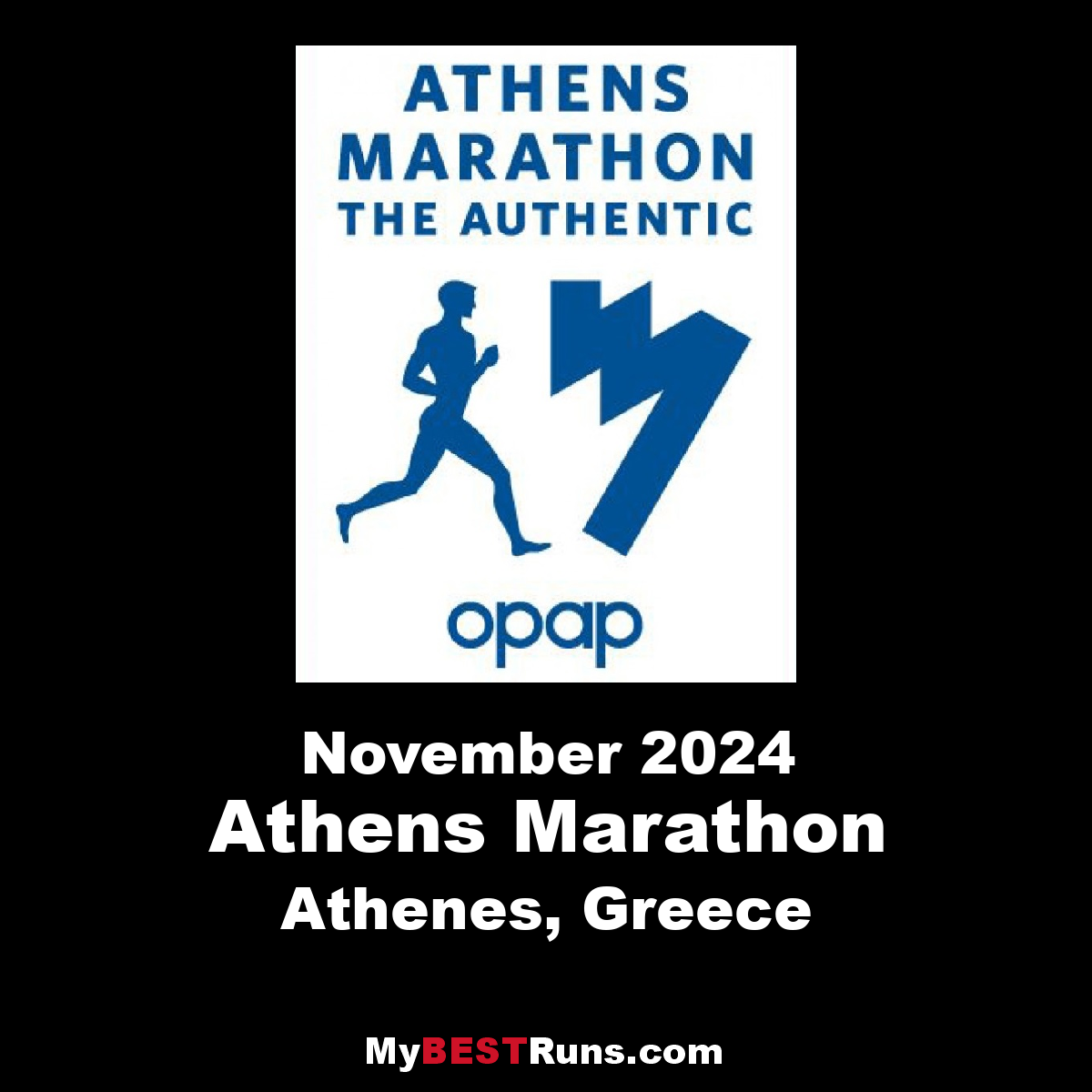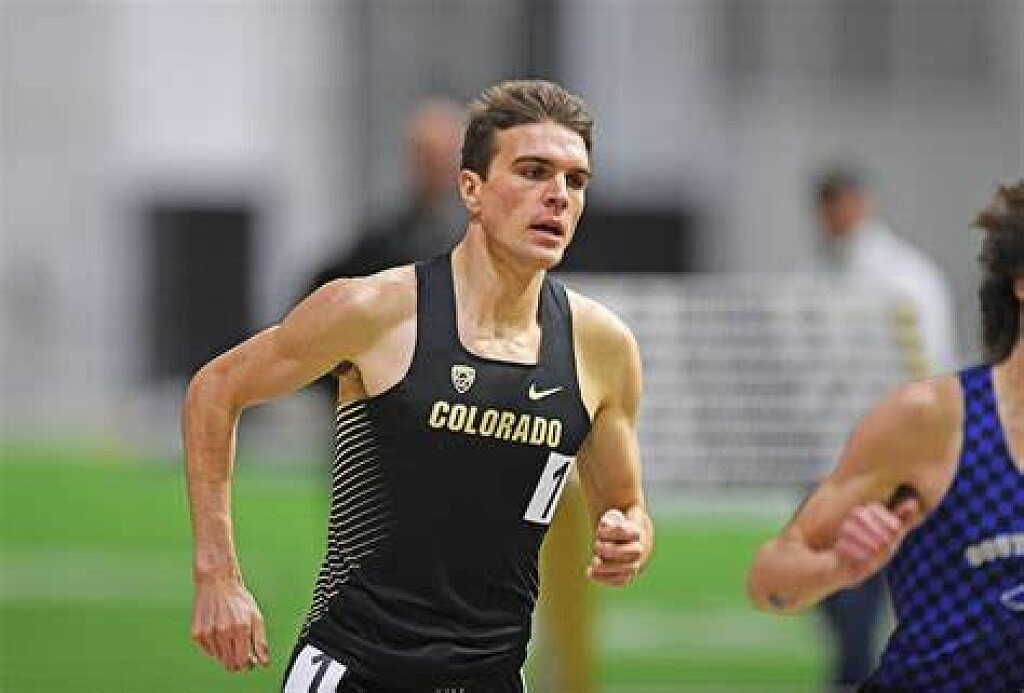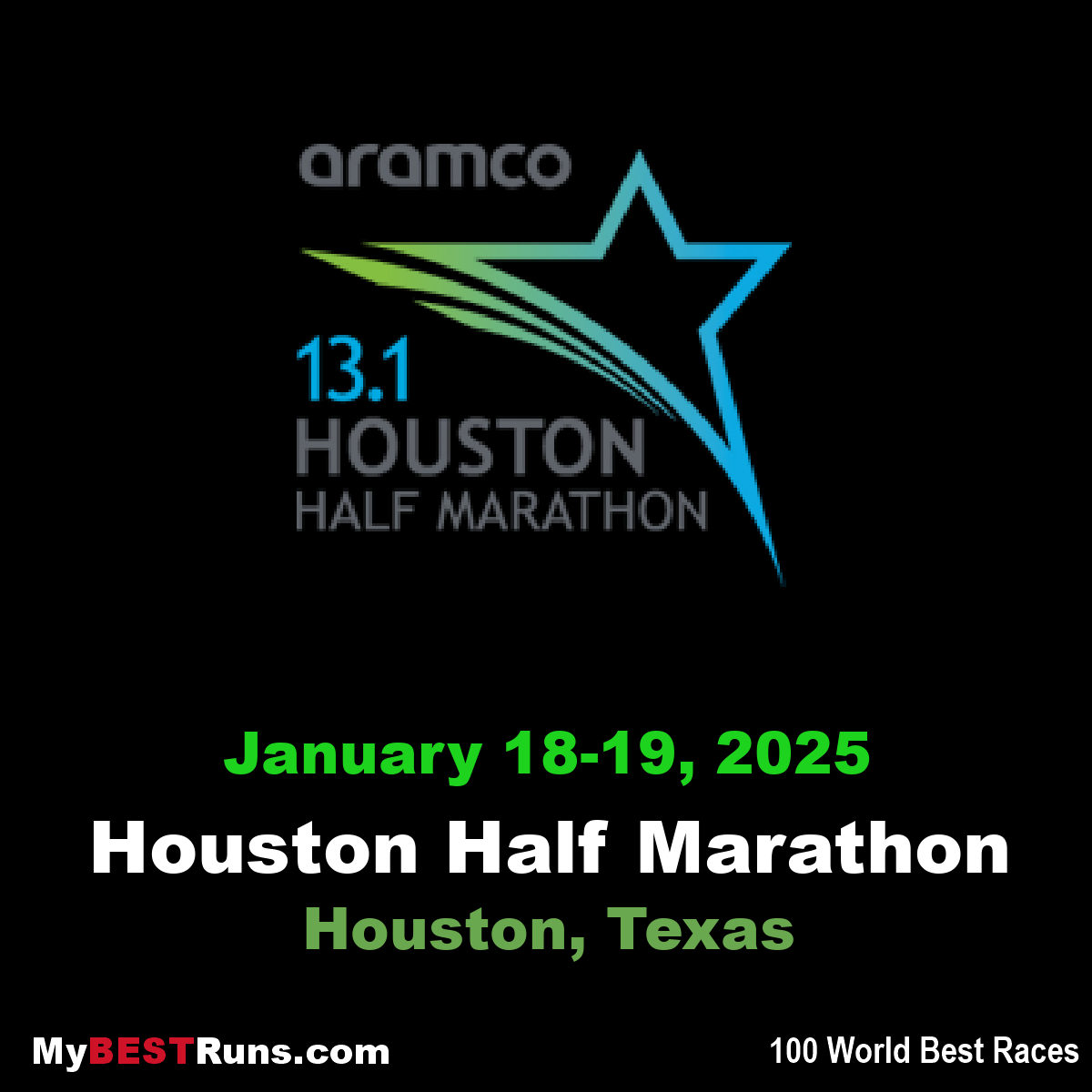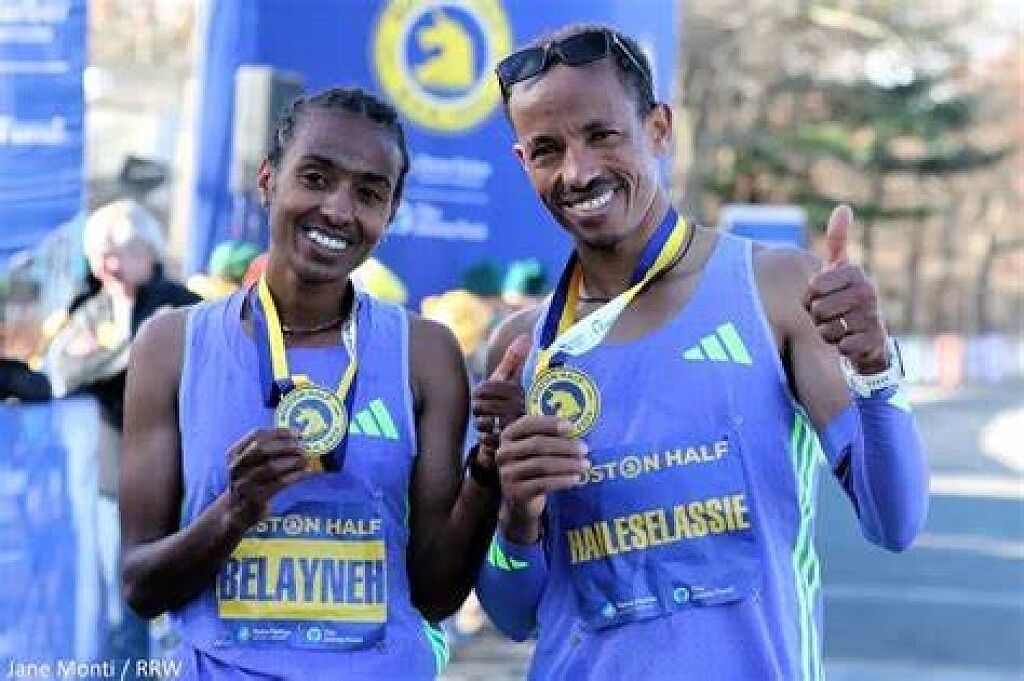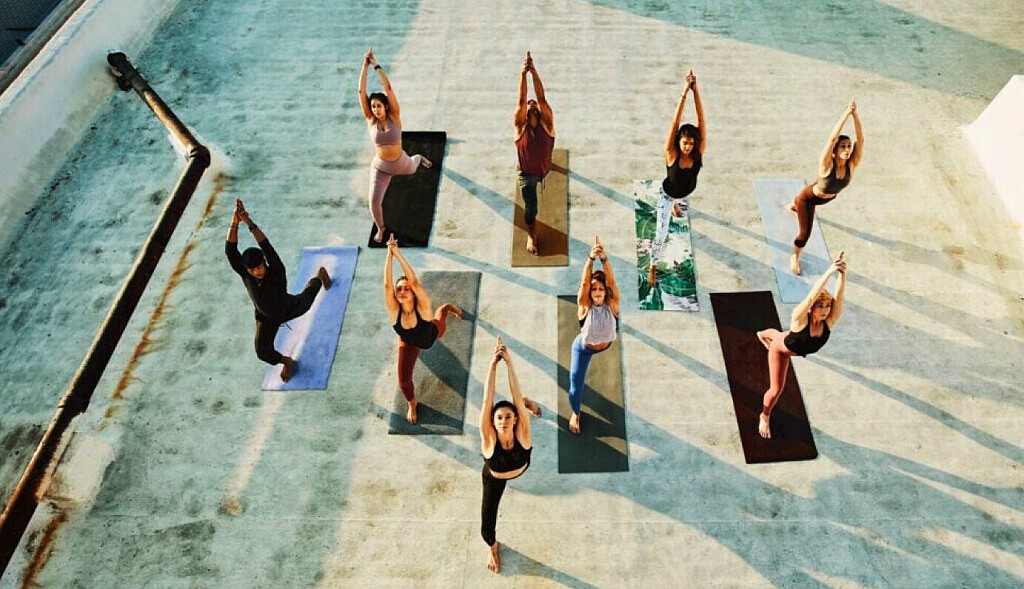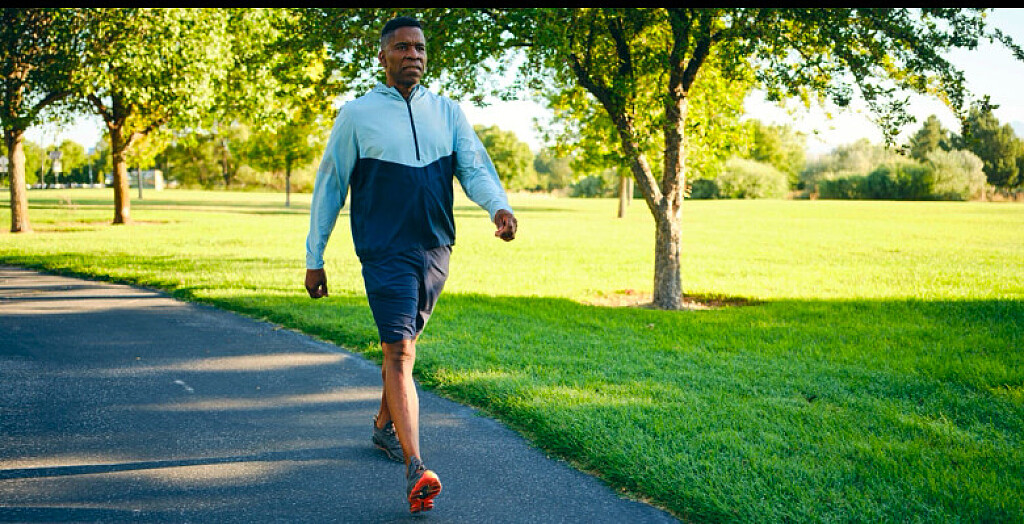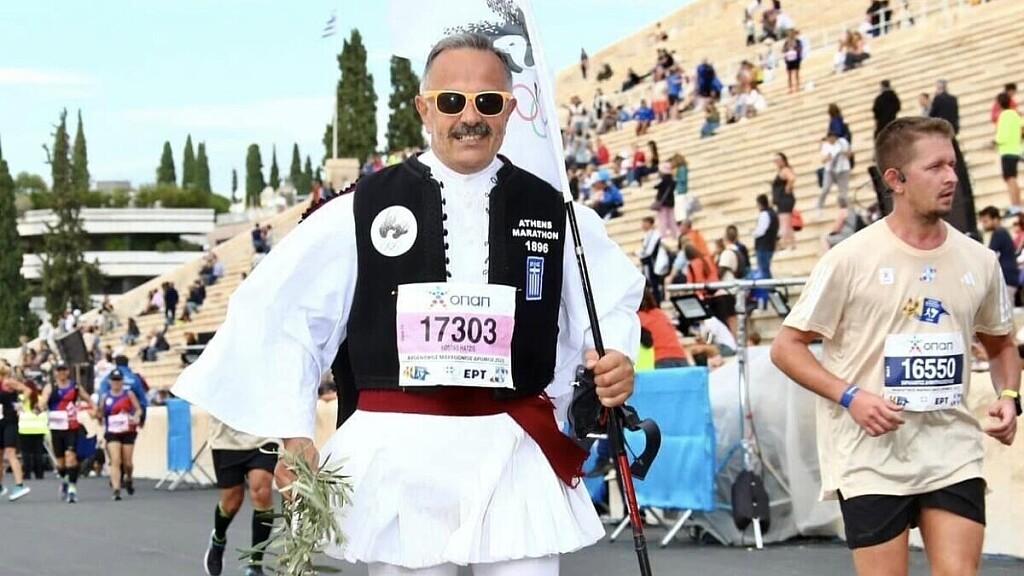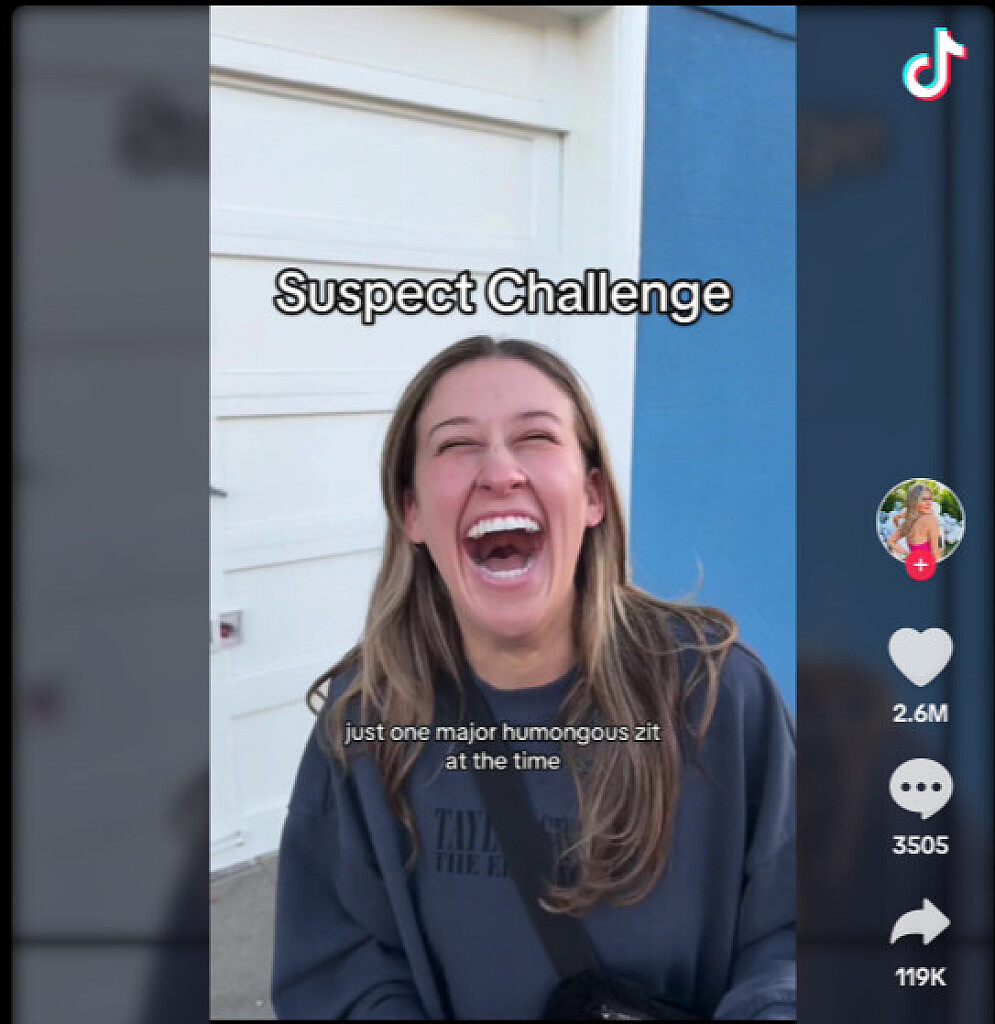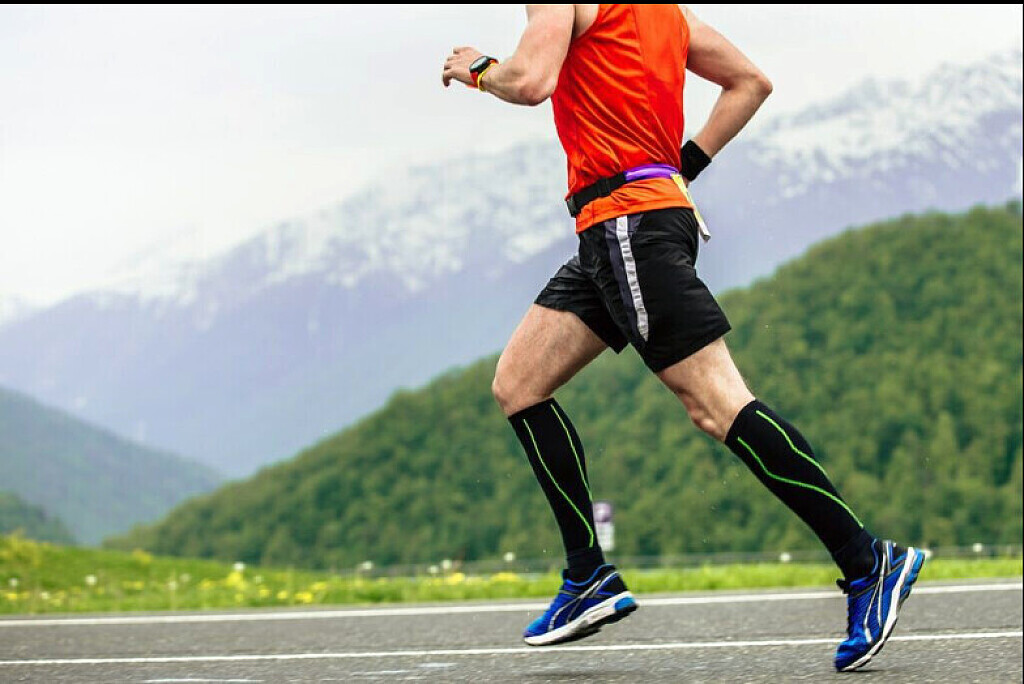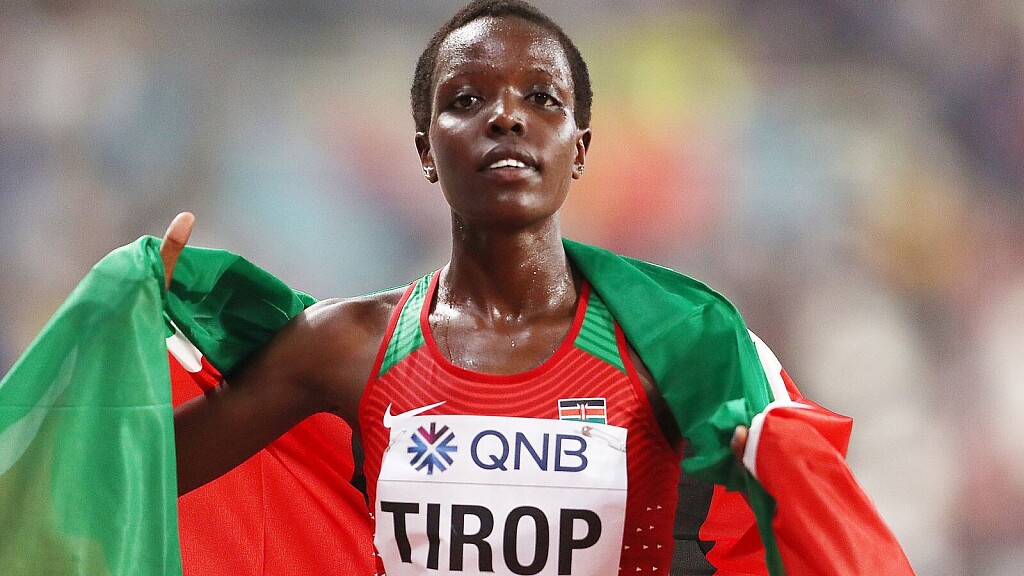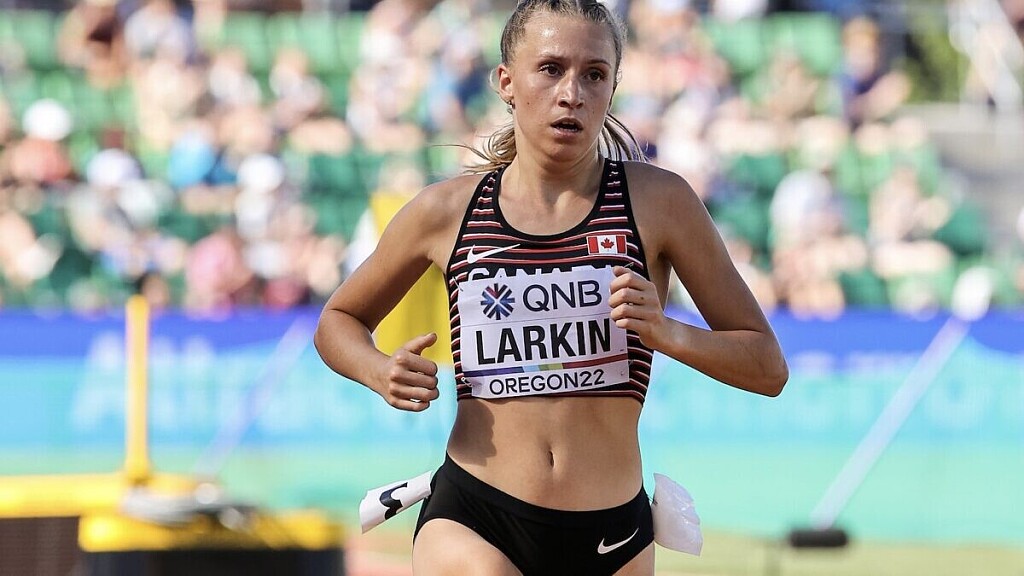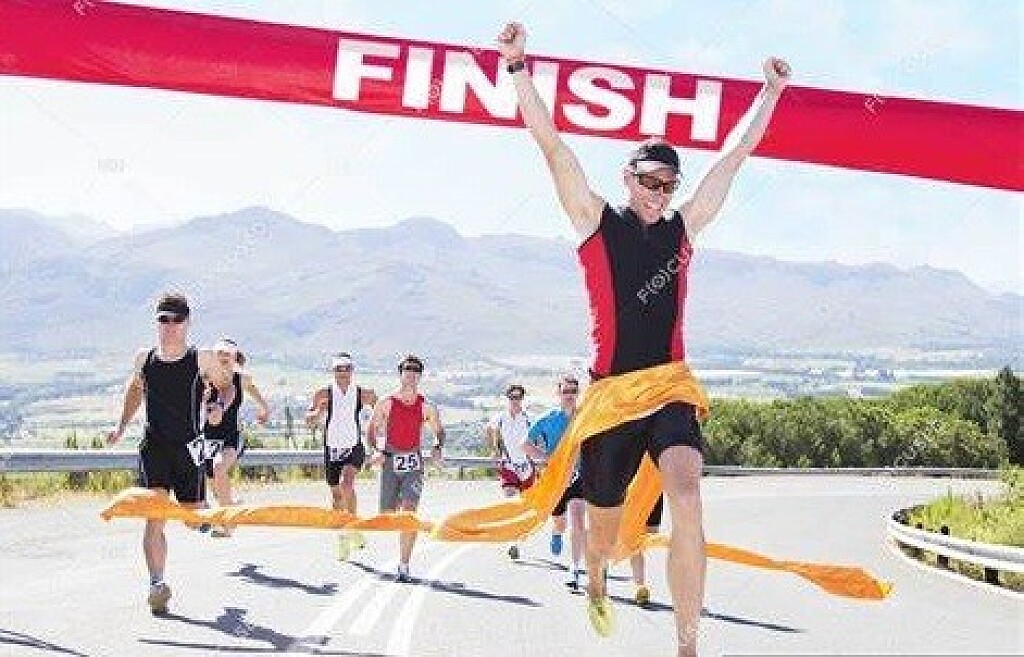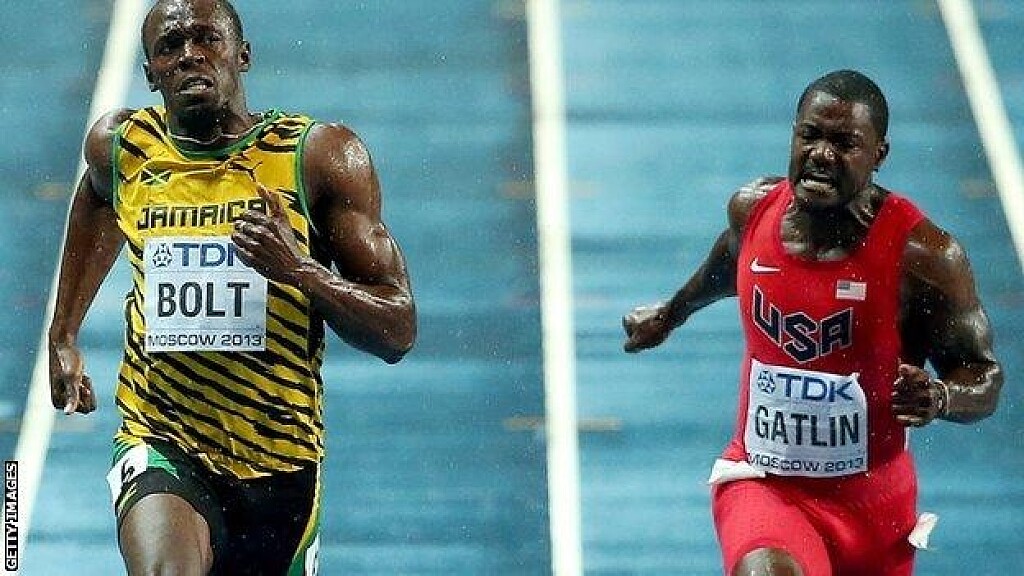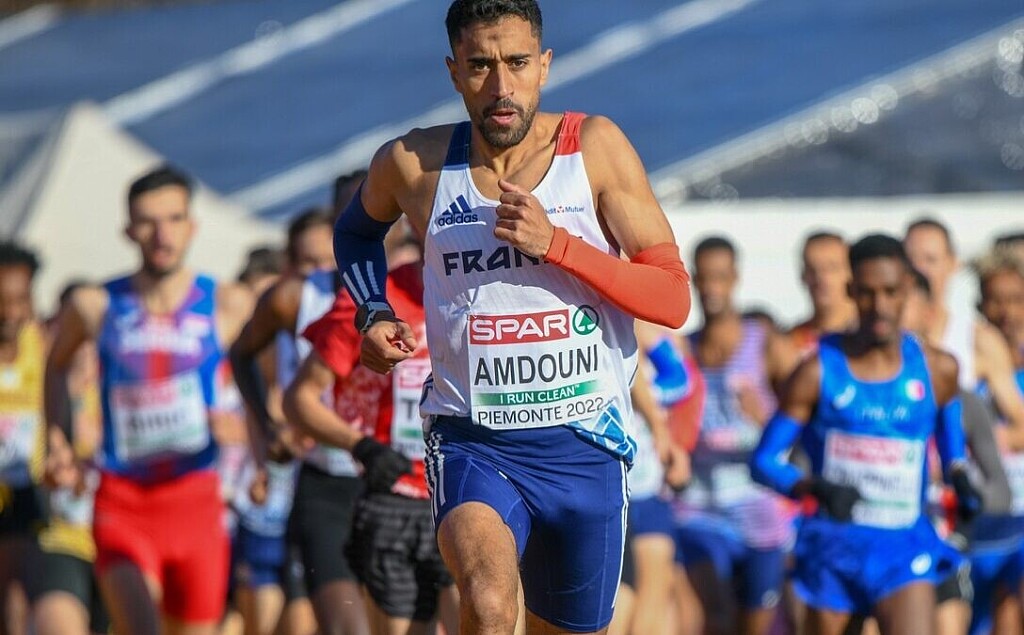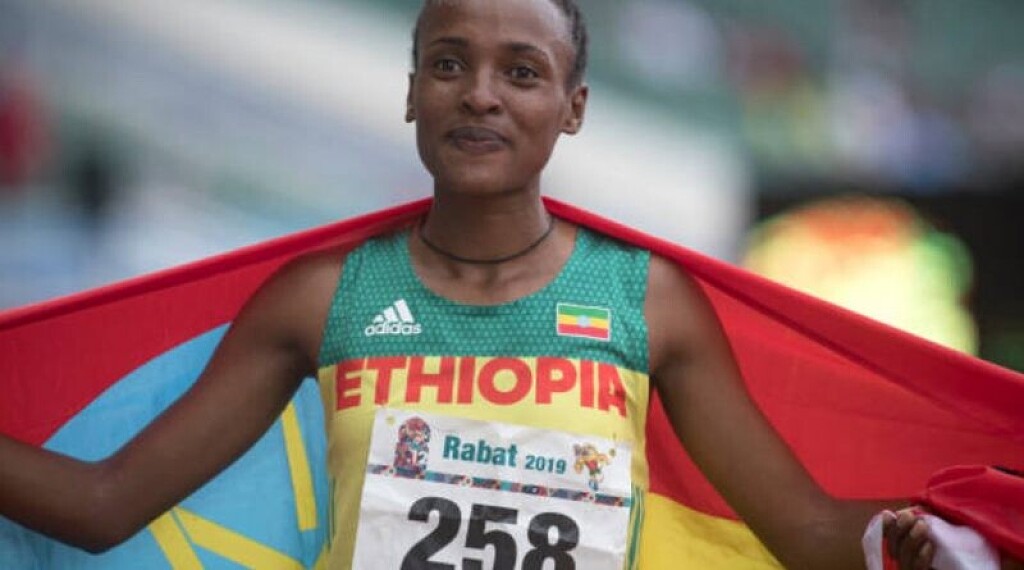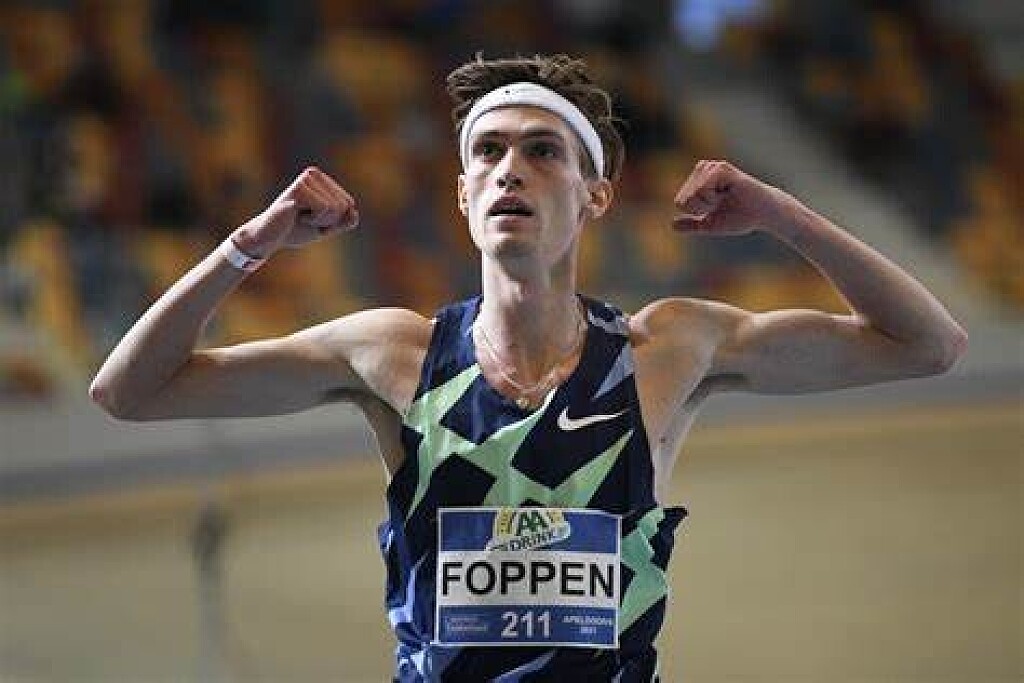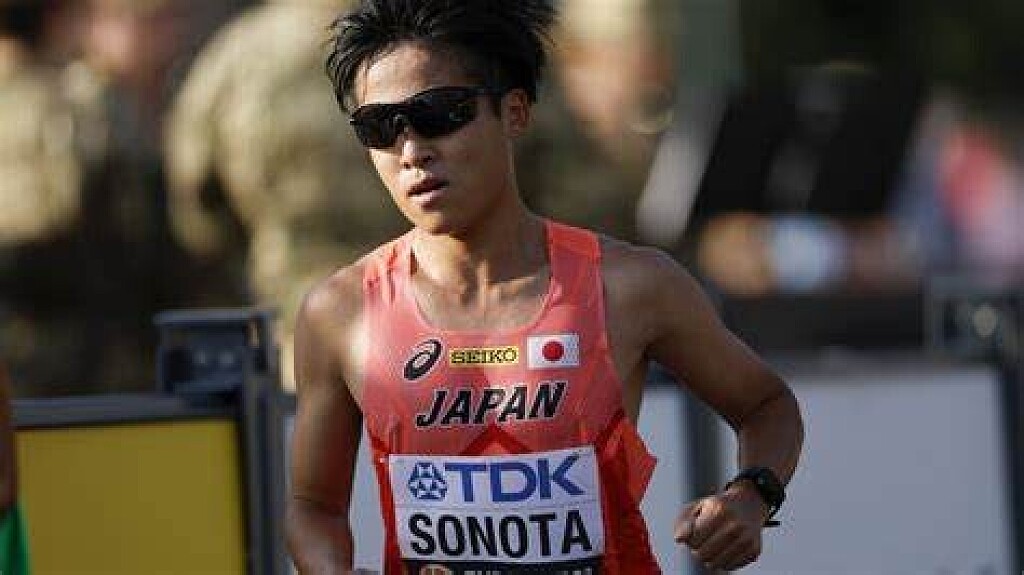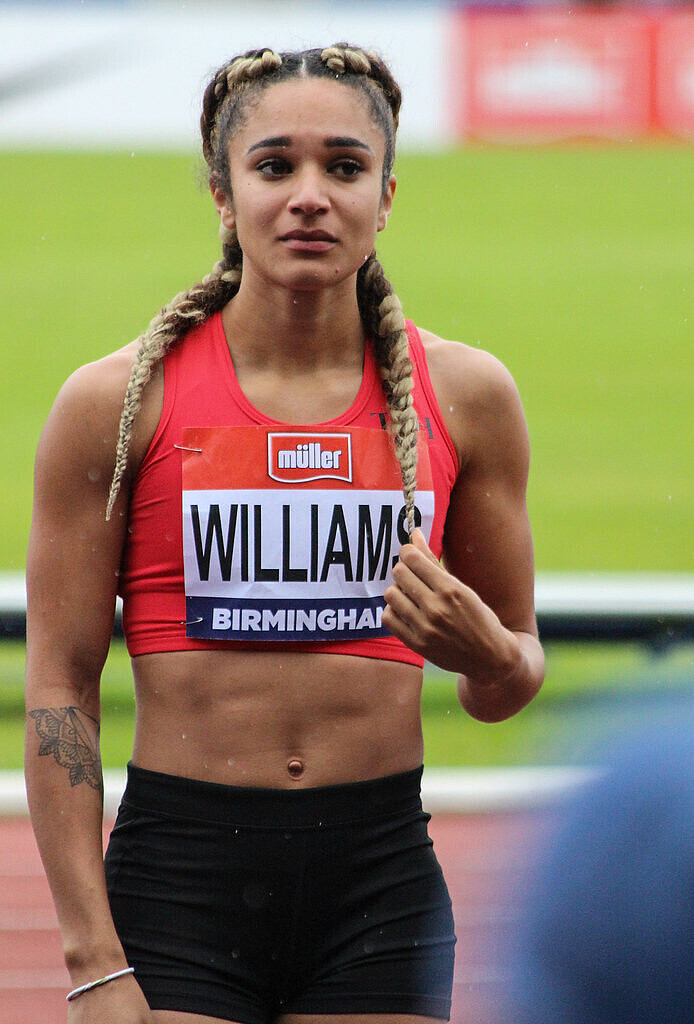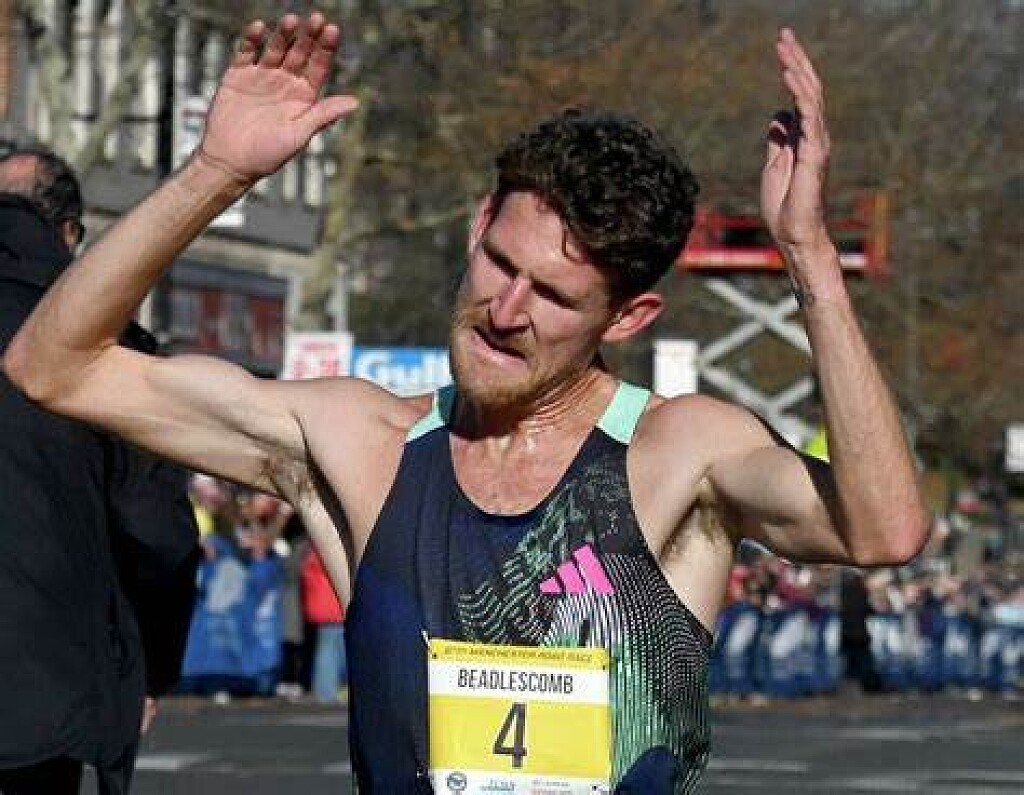Running News Daily
Running News Daily is edited by Bob Anderson. Send your news items to bob@mybestruns.com Advertising opportunities available. Train the Kenyan Way at KATA Kenya and Portugal owned and operated by Bob Anderson. Be sure to catch our movie A Long Run the movie KATA Running Camps and KATA Potato Farms - 31 now open in Kenya! https://kata.ke/
Index to Daily Posts · Sign Up For Updates · Run The World Feed
Athing Mu finally opens up on the pain of failing to make US team to Paris 2024 Olympics
Athing Mu reflected on her challenging season, marked by injuries and disappointment at the US Olympic trials, but remains hopeful, trusting in her faith for a major comeback.
Athing Mu has for the first time expressed her emotions after her unfortunate fall at the US Olympic trials earlier this season.
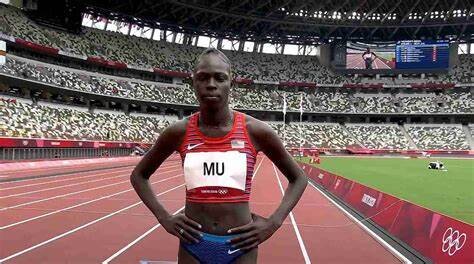
The former Olympic 800m champion got an injury earlier in the season and had to start her campaign at the US Olympic trials. She had been confirmed to open her season at the Prefontaine Classic but had to withdraw due to the injury.
Mu was off to a great start at the trials, finishing third in her heat before winning the semifinal. In the final, the unfortunate happened as she fell down and faded to a ninth-place finish. Athing Mu tried to bounce back at the Holloway Pro Classic but could only afford a fifth-place finish and ended her season there.
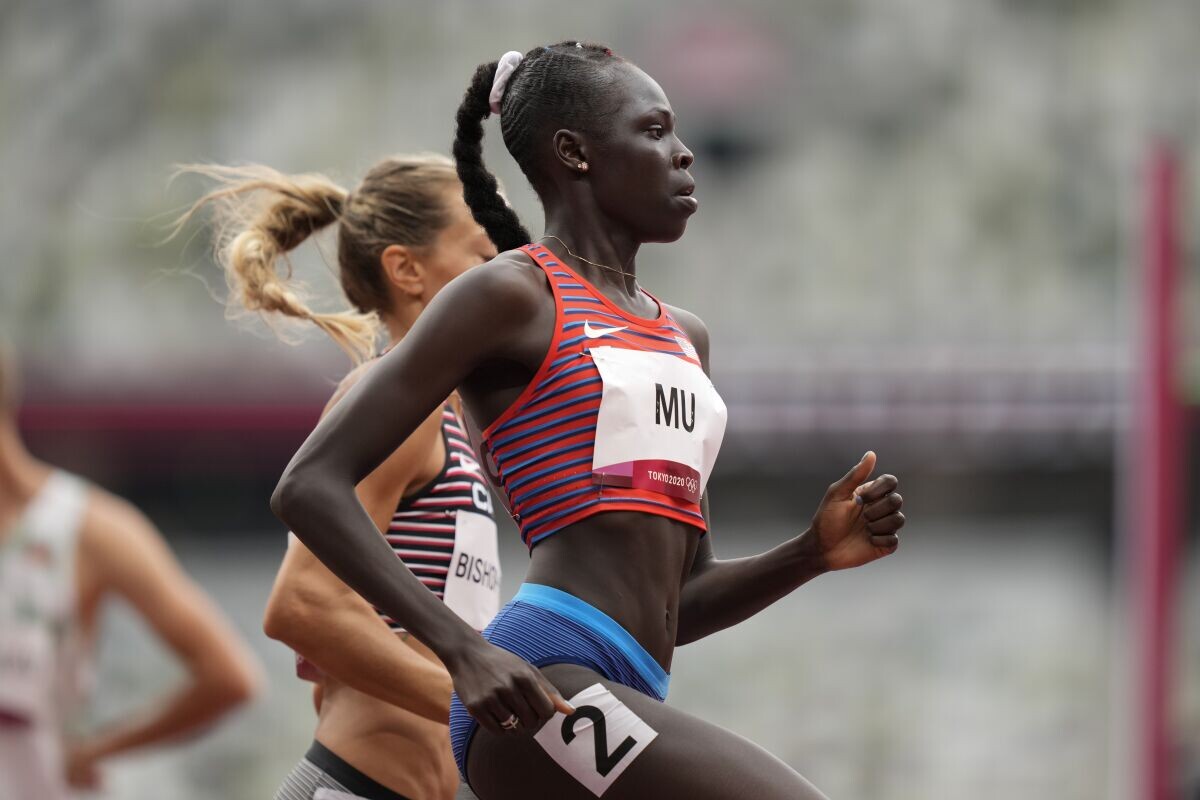
Speaking on the Jinger and Jeremy Vuolo show, Athing Mu pointed out that her season turned out awful and it was something she never expected. She was hopeful of defending her title but after the injury, reality started dawning on her that she might the Olympic Games.
However, she felt ready to get back to the track at the US Olympic trials and making it to the final was a confidence booster for her but things did not go as planned in the final.
“Olympic trials were a very tough time and I guess, just this whole in season part of the year has been really tough because a lot of things have happened, leading up and then post-Olympic trials. About six weeks before the Olympic trials, I tore my hamstring and that was the first thing we needed to heal from before going into the Olympic trials,” Athing Mu said.
“When that happened, I was still kind of hopeful about the Olympic trials but I didn’t know what was going to happen but the idea of going and winning was a little bit diminishing because I knew that healing a hamstring was a pretty tough injury to speed up.
“Making it to the Olympic trials was great and I gained a little bit of confidence throughout the rounds and then running the final, super unfortunate, I did not expect that to happen at all. I was absolutely distraught but finishing the race, I can’t really say,” she added.
After the Olympic trials, she dealt with a lot of emotions before finally getting back into training. After a few training sessions in Europe, she got another injury and could not continue with her season.
She revealed that having to end her season in such a way was devastating but she had to trust in her strong faith.
“I actually broke down a little bit and I didn’t know if I could do it and I decided to get myself together and just trust in what the LORD would do at the end of the season. when I went to train in Europe, I got another injury and knew this season was done,” she said.
(11/16/2024) ⚡AMPby Abigael Wafula
Evans Chebet reveals secrets behind his remarkable marathon success
Evans Chebet has disclosed the key principles behind his remarkable marathon success, sharing insights into his disciplined training, perseverance, and the challenges that shaped his journey to global acclaim.
Former Valencia Marathon champion Evans Chebet has become a towering figure in the world of distance running, boasting an illustrious career with 30 marathons under his belt and three World Major Marathon titles to his name.
From humble beginnings in Elgeyo Marakwet County to the global stage, Chebet’s journey to the top is a shining example of determination, dedication and faith.
Reflecting on his achievements, Chebet, who has conquered courses in Boston and New York, says his success comes down to a simple but powerful mantra.

“The young upcoming athletes should exercise patience in their careers and not take shortcuts. My life story is a testament to that. I did not go past primary school, but the number of countries I have visited are numerous,” he said as per Star.
Chebet attributes much of his triumphs to unwavering discipline and a grueling training regimen.
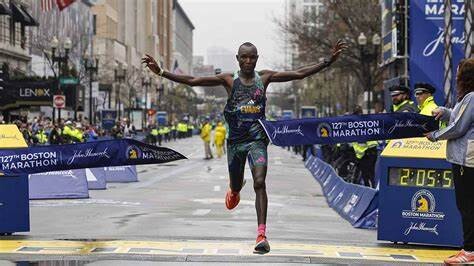
The 35-year-old marathoner has no background in track running, focusing instead on road races from the start to provide for his family.
This unique approach was shaped by financial hardships that forced him to leave school at an early age to support his widowed mother and nine siblings.
“My father died just before I was born, leaving my mother to shoulder the burden of raising 10 children. I had to drop out of school while in Class Four and start burning charcoal to help her,” he recalled.
“Life was really hard, but I knew as a man, I had to do everything to support my family.”
Chebet’s turning point came in 2005 when his uncle, Isaac Koech, introduced him to running and bought him his first pair of training shoes.
Guided by his uncle and inspired by his late father, who had been a runner, Chebet began training with unwavering determination.
His big break came in 2006 when coach Claudio Berardelli invited him to join the Rosa camp in Kaptagat, where he honed his skills for the global stage.
“Coach Berardelli recruited me and began training me. In so many ways, he has moulded me into the man I am today,” Chebet said, acknowledging the critical role his mentor played in shaping his career.
Over the years, Chebet’s path to glory has been marked by strategic planning and meticulous preparation.
For instance, leading up to his impressive performance at the New York Marathon, he focused intensively on hill work.
“I had trained adequately before the New York race. My main area of focus was hill work and long runs. I used to do 20km to 30km of hill work every day as part of my training,” he revealed.
Despite his rigorous training and consistent results, Chebet has faced setbacks, including being overlooked for Kenya’s Olympic team.
However, he remains optimistic, using each challenge as motivation to push harder.
“It was heartbreaking not to have been included in the team for the Olympics. I know if I had been there, I would have no doubt come back home with gold,” he said.
Chebet’s career highlights include victories at the 2019 Buenos Aires Marathon, the 2020 Lake Biwa and Valencia Marathons, and back-to-back wins at the Boston Marathon in 2022 and 2023.
His win in New York in 2022 further cemented his status as a world-class athlete.
“My target next season is to win both New York and Boston. It’s something I know I am capable of, and I will work towards it,” he said, expressing his desire to continue building his legacy in 2025.
Balancing his career and family life, Chebet draws inspiration from his five children and his wife, Brillian Jepkorir, who is also an athlete.
“I hope my children will take up running in the future,” he said.
To aspiring runners, Chebet offers invaluable advice rooted in his life experience.
“Be prayerful and learn to invest wisely to secure your futures. More importantly, exercise patience and avoid shortcuts. My journey proves that success is possible even when starting from nothing."
(11/16/2024) ⚡AMPby Festus Chuma
From Beginner to Advanced Runners: How Often Should You Be Lacing Up? Experts Break Down What Factors to Consider
Use these tips for figuring out your ideal running frequency.
Just like there’s no “best” running shoe for everyone, or training plan, or energy gel, there’s no ideal running frequency for all runners. Even though many runners ask how often they should run, the days per week you lace up depends on factors that vary from one individual to the next. Even when you do settle into a pattern that works for you, your approach may need to shift as aspects of your training (and life, in general) change.

However, there are some general guidelines that can help new runners identify a healthy starting point for how often to run, as well as some guidance more experienced athletes can follow to decide if it’s time to dial up or scale back on their weekly runs. Runner’s World spoke with Alison Marie Helms, Ph.D., UESCA-certified running coach and founder of Women’s Running Academy, and Raj Hathiramani, certified running coach at Mile High Run Club in New York City, to get their expert advice. Here’s what you need to know.
Factors to Consider When Determining How Often You Should Run
Before designing a personalized training schedule, any qualified coach will take the time to understand their runner, both as an athlete and a fully-realized person with a life outside of running. So, whether you’re working with a pro or developing a plan on your own, consider the following factors when deciding how often you should run:
Goals
Determining your running goals is a good place to start figuring out how often to run. Do you want to set a new half-marathon PR? Finish your first ultra? Improve your cardiovascular health? What you hope to accomplish can help you determine your overall running volume, which informs how many times a week you should ideally run.
“People who have more specific time or distance goals may be running more frequently per week, and those who have more fitness or wellbeing-oriented goals might be running less frequently,” Hathiramani says. Among runners with performance-related goals, those who race longer distances may need to run more often than those with their sights set on shorter distances.
Experience
Two runners can have the same goal, like finishing their first marathon, for example. But if one marathon hopeful is brand new to running and the other has multiple 5K, 10K, and half-marathon races under their belt, their training frequency should look different.
“It’s never a good idea to do too much too soon,” Hathiramani says. He recommends new runners gradually ease into running, even using a walk/run approach, and avoid running on back-to-back days. “This is
Running one to two days per week is also ideal for those just getting into running. You can do a walk/run workout or go for a quick, slow jog down the block. The goal is consistency if you’re looking to jumpstart a new workout habit.
Three Days a Week
For many runners, lacing up three days a week strikes a balance between feeling substantial and attainable. You can get in a variety of runs and still have plenty of time for cross-training and recovery. For example, you may plan a long run for the weekend, an interval on Tuesday, and a tempo run on Thursday. That still leaves four days for rest and activities like strength training and mobility work.
This frequency may be ideal for someone training for a short distance, like a 5K, but it may not be adequate for all runners with long-distance racing goals, like a half marathon or longer, Hathiramani says.
Four to Five Days a Week
For Hathiramani’s client base, which is primarily half marathon and marathon runners, four to five days a week is the “sweet spot,” as it allows runners to vary their training and accumulate the volume they
→At first, keep your volume the same
For example, if you’re used to running 12 miles over the course of three days, add a day of running but keep your total weekly mileage at 12. Helms recommends doing this for a week or two before adding additional miles to your runs.
→Increase overall volume gradually
The general rule of thumb is to increase your overall weekly mileage by no more than 10 to 15 percent. (However, if your current mileage is relatively low—like five to 10 miles per week—you’re probably safe to increase by up to 30 percent, Helms says.)
→Take “step-back” weeks
Every few weeks, reduce your mileage by a small percentage. For example, if you went from 20 to 22 miles in week one, then to 24 miles in week two, and 27 miles in week three, drop back down to 20 miles in week four. “You’re still running, but you’re letting your body recover, maybe taking an extra rest day or reducing your average mileage, and letting it sort of realize some of the endurance and aerobic capacity gains you’re making,” Hathiramani says.
→Resist the urge to “catch up”
Adjusting to a more demanding
“Consistency is a really important way to instill discipline and motivation in your training to help you achieve your goal,” Hathiramani says. “That being said, there are things out of your control that may make it hard for you to be consistent, and that’s okay.”
(11/16/2024) ⚡AMPRunning More Relaxed Can Improve Your Performance—Here’s How to Do It
Experts share their best tips to help you stay calm, cool, and collected while you’re out on the run.
It’s possible to run fast without clenching every muscle in your body. Just look at some of the pros like Cole Hocker, Nikki Hiltz, or Sarah Vaughn who seem to clock seriously fast times while making it look like an easy walk (er, run) in the park.
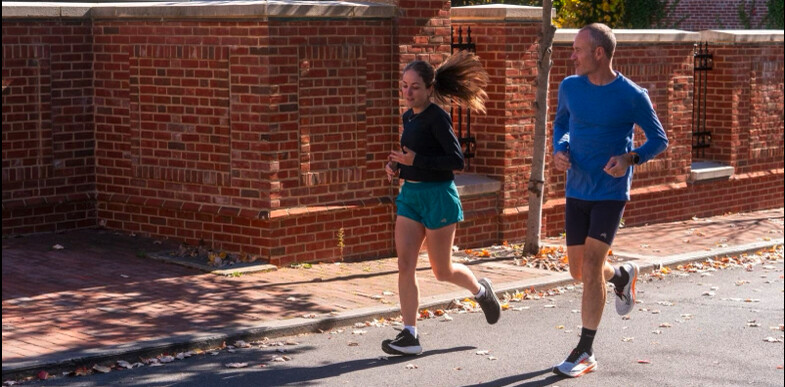
These pros and many others have mastered running with slack shoulders, fluid arms, and a powerful stride, all while seeming light on their feet. It’s the art of running relaxed—and it can actually help your performance.
Experts encourage you to run relaxed on easy and long run days—those workouts where you’re meant to go at an easy effort. But running relaxed is a tool you can use to your benefit for any type of run.
“It is important to remain relaxed in terms of not recruiting muscles that don’t need to be recruited, because that can increase the energy that you’re using for the run,” Heather Milton, M.S., exercise physiologist at NYU Langone Health’s Sports Performance Center tells Runner’s World. This can cause you to fatigue and slow down more quickly, she explains.
For example, lifting your shoulders up toward your ears or tensing up your face while you run requires more energy than letting your upper body and jaw hang a little looser. This could also affect form: If you’re running tensely upright, without a forward lean, you’re less able to activate the glutes, and your knees take on more force, potentially leading to knee pain, Milton explains.
To help you perfect the art of running relaxed and get the most out of your workouts, we tapped experts for their best tips.
Quick Forms Tips to Help You Relax on the Run
When it comes to running relaxed, maintaining the proper running form is key and will help improve your efficiency. Although not everyone’s stride is the same, keep these cues in mind while you’re out clocking miles:
➥Keep Your Upper Half Loose
Run
➥Lean Forward
“What we want to see is that there is a slight angle of your running, so from your ankle through your hips, through your shoulders, you’re progressively closer to your target, looking forward,” Milton says. You can imagine your body in a slight diagonal line as you run forward. This will enable a greater amount of lower leg activation, better push off, and better hip extension. It can also reduce your risk for injury and improve your performance, she explains.
➥Make Your Center Stable
“The core should be a stable column on which we run and can have more effective push off,” says Milton. This is why it's important to build core strength, she adds.
➥Drive Forward With Your Feet
In terms of your feet, Milton recommends you focus on swiping the ground behind you while you run.
8 Tips to Help You Stay Relaxed on the Run
Beyond fixing your form, here are a few things you can try leading up to race day and during your run to help you maintain that relaxed run posture. Rather than implementing all of these tips at once, try out a few of them to see which ones work best for you so you stay calm, cool, and collected on the road.
1. Work on Your Mobility
Limited range of motion can hinder your ability to run more relaxed.
“It really takes access to every joint movement in the body,”John Goldthorp, a certified personal trainer and run coach tells Runner’s World. If you can’t freely move your joints, then you can’t make the necessary movements that you need to help you run really well, he explains.
This is why he recommends working through different planes of motion (front to back, side to side, and rotational) before you run and even on non-running days.
To do that, practice moves like standing cat cow, side bends, and rib cage and pelvic rotations, all of which work the spine and upper body through the different movement patterns. Also, work on pronation
Working with a physical therapist or functional mobility specialist can also help you address these areas so you can improve your range of motion and run more fluidly.
2. Address Any Pain Areas
As you can imagine, or might have even experienced, running with pain can hinder your ability to relax. This is why Milton recommends strength training as a way to address some of your pain points.
For example, address shin splints by strengthening your feet, ankles, calves, and hips. Target pain associated with runner’s knee by strengthening your hips and inner quads.
“Strength training is a great way to make sure that your body is ready for the run,” says Milton.
3. Add Strides to Your Calendar
The key is to practice running short bouts at different paces like your easy, marathon, half marathon, 10K, 5K, and mile pace while relaxed, says Goldthorp. He recommends you start by introducing strides toward the middle or second half of an easy run.
“Like any new stimulus, you’ll want to introduce things gradually both in terms of how many repetitions you do and how fast you’re running them,” he explains. This may mean running four reps of 20-second strides with
Lastly, take a few minutes to gradually progress from a slow walk to a brisk walk and then to a light jog, says Goldthorp. “I always think to myself, I’m not really going to hit my ‘training pace’ for probably about 15 minutes,” so don’t rush it, he says.
This will not only help you ease into the run better, but it can help you find your rhythm more easily and allows you to remain relaxed as you adjust from not running to running slowly to running at a quick clip. Just remember to keep that loose feeling through each progression.
5. Complete a Quick Self Scan
Before you head out for a run, Goldthorp recommends you take note of where you typically hold tension in your body. For example, do you clench your jaw or shrug your shoulders?
“Scan your body. If you notice tension, see if you can let it go, see if you can soften that area,” he says. You can also visualize that area of your body flowing like water.
Then, on the run, check for specific body cues, says Milton. For example, make sure you’re bringing your arms back directly behind you and then letting
If you’re running with a watch on race day “check in and check your splits and make sure that you’re not running too fast, which can create a lot of undue tension,” Milton adds. If you are going too fast, she recommends coming back to your breathing and making sure it feels appropriate for your target pace.
8. Don’t Be Afraid to Give It Your All
There might be times, especially at the end of a workout or race, where we’re willing to get ugly and push past our comfort zone to hit your goal time or beat an opponent, says Accetta. In these moments, it’s acceptable to push yourself even if that means tensing up a bit.
The key is recognizing when to kick it into high gear, like when you’re sprinting to the finish. You don’t want to waste all your energy too soon, Accetta explains. Even when you do pick it up, remember some of those form tips of keeping your upper body loose and your jaw slack so your legs have the energy they need to turnover fast.
(11/16/2024) ⚡AMPAre distance intervals easier than time?
Minutes or meters? We delve into what's easier for interval training.
As the 2024 racing season winds down, many runners are shifting their focus toward winter base training. While goal races are still months away, staying motivated for off-season workouts can be challenging. Last week, I found myself in that position when my coach presented me with two workout options: three reps of four minutes at 3:20/km paired with six reps of two minutes (at a bit faster), or three reps of 1,200 metres and six reps of 600 metres. I chose the second option.

On paper, the workouts are different, but they both have the same aim to improve 5K/10K speed and threshold levels. The question is: does knowing the exact distance make the session feel easier than time-based intervals?
A psychological advantage

With distance intervals, the start and finish are clearly defined. For instance, when given one-kilometre reps, you know exactly where each begins and ends. Many runners find comfort in seeing their progress in measurable terms, which is why structured workouts on a track are popular. For example, if you’re completing a 1,200-metre rep on a standard 400m track, it offers three distinct checkpoints—one per lap—helping you break the effort into manageable chunks. Hitting those markers can provide a psychological boost, making the workout feel more achievable
Time-based intervals, on the other hand, lack these physical endpoints. Each rep relies on the clock, requiring runners to maintain focus and effort without the aid of visible milestones. This can make the session feel more open-ended, even if the physical demands are identical to distance intervals. With time intervals, you’re left to pace yourself based on feel, pushing through the uncertainty of not knowing exactly how far you’ve gone—or have left (unless you’re looking at your watch).
What’s best for you?
Both distance- and time-based intervals are effective for building speed and threshold levels. The choice depends on your personal preference and mental approach to workouts. If you thrive on structure and measurable progress, distance intervals might feel more manageable and motivating. But if you’re looking to embrace discomfort and practice sustaining effort without clear markers, time intervals can offer a unique challenge.
While distance intervals may seem easier, that’s not to say time intervals should be avoided entirely. Alternating between the two can develop mental and physical strengths, helping you become a stronger, versatile runner. Whether you’re counting minutes or metres, the ultimate victory is getting out there, putting in the work, and reaching your goals.
(11/16/2024) ⚡AMP
by Marley Dickinson
Turn up the pre-run tunes to banish mental fatigue, science says
We all know that music can give us that extra boost to pick up the pace, but here’s the surprising part: music doesn’t just motivate us—it actually tricks our brains. New research from the University of Edinburgh suggests that cranking up your favourite playlist might be the secret to powering through a mentally tough run. The study, published in the Journal of Human Sport and Exercise, found that listening to self-selected, high-energy music can help combat mental fatigue, letting runners keep their performance levels up even when their minds feel wiped out. Here’s what you need to know to harness the hidden power of your favourite playlist.
Some research suggests that music can help runners improve their cadence, leading to a more efficient pace and fewer injuries. But music might just be the key to unlocking next-level endurance by easing mental fatigue and making even tough runs feel manageable.
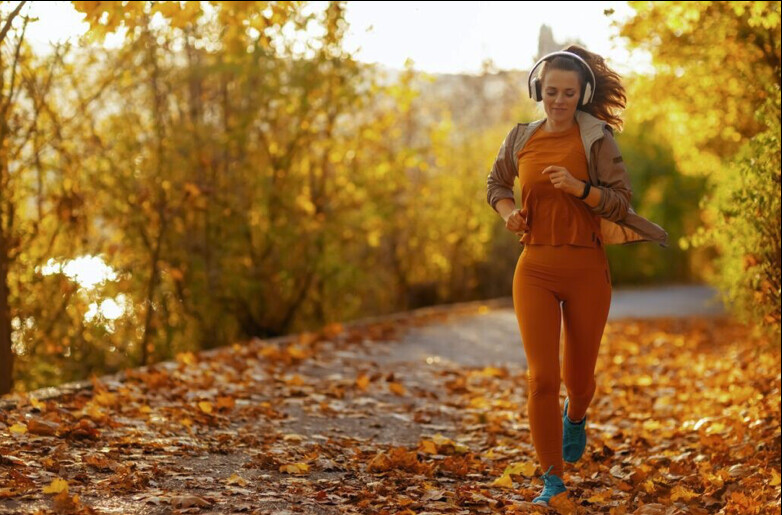
Testing the power of motivational music
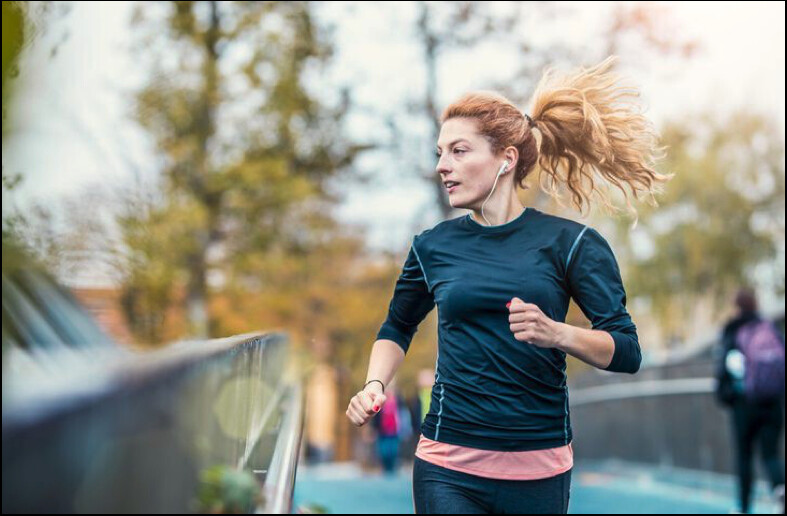
Researchers recruited 18 fitness fans and split them into two groups. Each group faced a mentally challenging, 30-minute cognitive test designed to leave them feeling mentally fatigued. One group took on an interval running workout afterward, while the other tackled a 5K time trial. Each runner completed their workout twice: once with music and once without. But the playlists weren’t just random—participants handpicked tracks they found especially motivating, rating them on factors like beat, melody and tempo. Songs included motivational tunes like “Eye of the Tiger” by Survivor and “Run This Town” by Jay-Z.
The results? When runners were able to listen to their self-selected playlists after the mentally taxing task, they performed just as well as they did when they weren’t fatigued. Interval runners with music performed better than those running in silence, and those running the 5K saw a small, but notable, improvement in their times.
How music might help
According to the researchers, these improvements might come from music’s ability to alter perception. By drowning out the discomfort and making the exercise feel less taxing, tunes can help mentally fatigued runners push through at higher intensities. As Dr. Shaun Phillips, lead author of the study, puts it: “The findings indicate that listening to self-selected motivational music may be a useful strategy to help active people improve their endurance running capacity and performance when mentally fatigued.”
The takeaway
Researchers say future studies could explore how music impacts performance in different settings—whether it’s race-day intensity or a casual run through the neighbourhood—and how it affects a wider range of runners.
For now, let your playlist do the work. The next time your brain feels zapped after a long day of meetings, hit play on those favourite tracks. They might not only lift your pace, but also push aside lingering mental stress and make those miles fly by.
(11/16/2024) ⚡AMPRobots are taking over marathons in China
A surprising number of robots have been spotted participating in marathon events in China in just one week. At the Yizhuang Half Marathon in Beijing on Sunday, Tiangong the Humanoid Robot was spotted cheering on participants before joining the race with 100m to go, crossing the finish line and earning a medal. At the Hangzhou Marathon in Hangzhou, China, on Nov. 3, two quadruped robots acted as official pacesetters and cheerleaders while running alongside participants.Tiangong is the world’s first full-sized fully-electric humanoid robot, weighing in at 43 kg and standing at 163 cm. Its functions included waving, shaking hands and posing, according to Global Times.
The quadruped robots, Go2 and B2, were showcased in Hangzhou with different roles. Go2 provided runners with music, messages of encouragement and safety tips along the race course. It is also reportedly capable of shaking hands and performing backflips and handstands.B2 set out at a steady pace for the half-marathon, providing runners with a reliable gauge of their pace. Tests were conducted to assess the machine’s ability to respond to humans and obstacles on the course. During the race, B2 wore bunny ears to emphasize its role as a pace-setting rabbit.The robots’ abilities are not limited to running and maintaining steady paces. The machines can reportedly provide runners with real-time feedback on factors such as temperature and heart rate. The androids are also useful for upholding and enhancing safety measures during the event, facilitating real-time monitoring and detection of security or medical emergencies–even transporting medical supplies quickly across the venue when needed.The benefits of the two- and four-legged robots suggest their prevalence at marathon events will continue to increase in coming years.
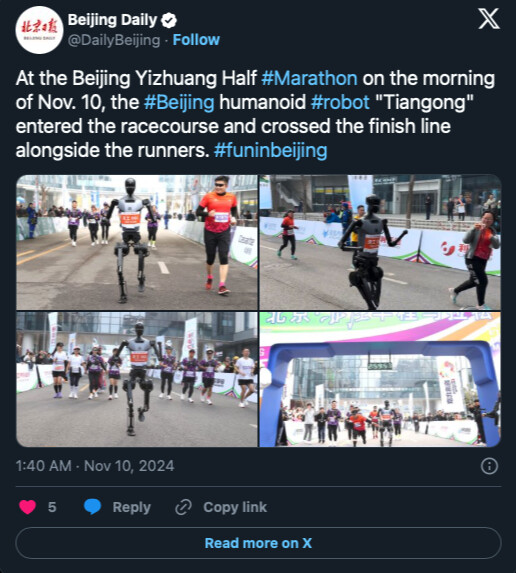
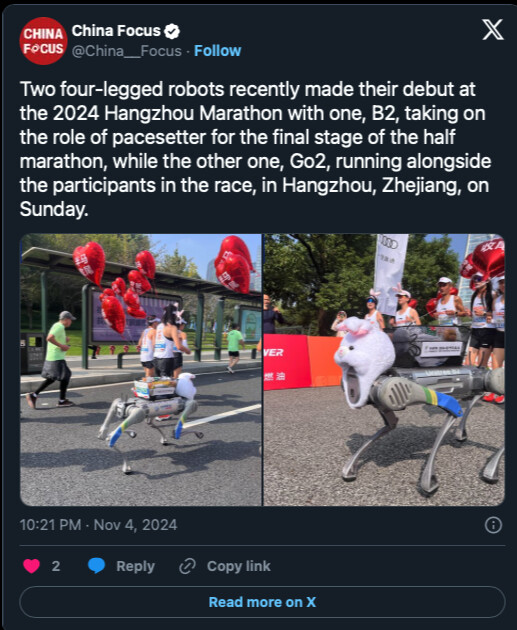
Bernard Koech: How I broke free from alcohol to reclaim my life and inspire other athletes
Marathoner Bernard Koech shares his journey from alcohol dependency to redemption, inspiring athletes to avoid similar pitfalls and embrace resilience.
If you love alcohol a little too much, the weekend drink can quickly become a daily ritual, gradually pulling you away from the things and people you once held dear.
For two-time Haspa Marathon Hamburg champion Bernard Koech, this slippery slope into dependency was one he stumbled down for years, reaching a point where he felt trapped, isolated and far from the promising career he had built as an elite Kenyan marathoner.
In his journey from darkness to redemption, Koech now shares his story to inspire fellow athletes and men facing similar pressures, advocating for change and awareness around the dangers of substance abuse.
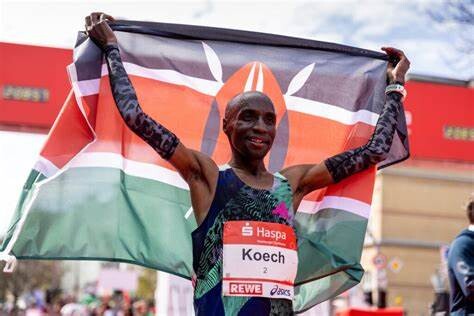
During his peak years, between 2015 and 2020, Koech was an admired marathoner known for his speed and strength, but his private life was becoming a struggle.
What began as a casual drink to unwind after training eventually spiraled into heavy drinking sessions with friends.
“Somewhere at the beginning of 2015, I started doing that,” Koech says in a past interview with NOS.
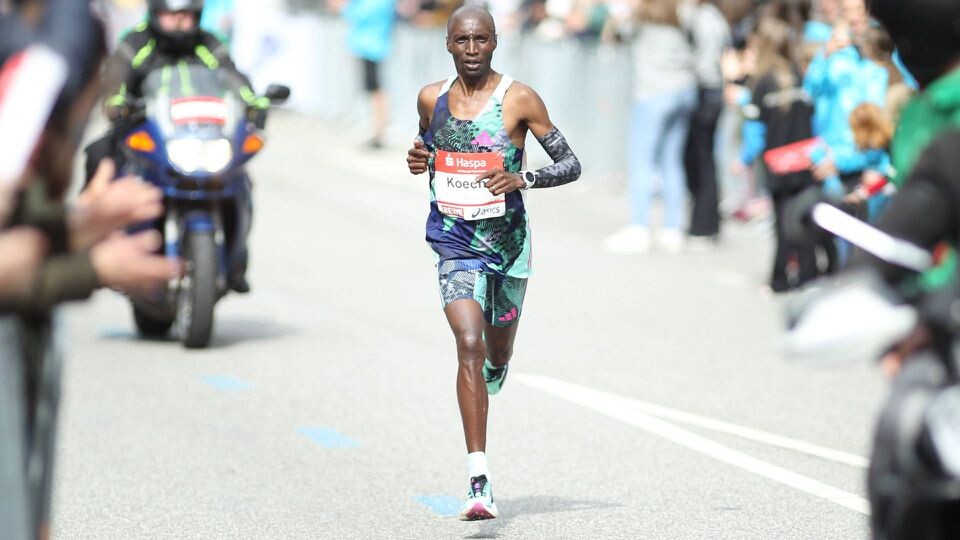
“Instead of going to bed after training, I looked for entertainment elsewhere.”
His growing dependence on alcohol started to overshadow his discipline, the very trait that had fueled his athletic success.
Koech recalls how he became increasingly disconnected from family, friends, and even his coach.
His drinking, initially limited to weekends, quickly morphed into a daily necessity that he would indulge in secret.
“At one point, I no longer drank in public, but smuggled bottles in during training camps to drink in anonymity,” he says.
The more he drank, the more isolated he became, as relationships with loved ones became strained and his motivation for training waned.
His performance started to reflect his inner turmoil, as his times slowed and his name began to fade from the competitive marathon landscape.
The isolation brought about by the COVID-19 pandemic became an unexpected turning point for Koech.
With events canceled and sponsors withdrawing, he was left with few options and limited financial support.
With no distractions to hide behind, he was forced to confront the reality of his life and how much he had given up to a habit that no longer served him.
Gradually, he realized that he had to reclaim his life not only for himself but also as an example to others who might find themselves in the same struggle.
For the last four years, Koech has dedicated his life to supporting fellow athletes, particularly young men vulnerable to the pitfalls of fame, stress, and societal expectations.
Each week, he meets with Kenyan athletes to talk about resilience, recovery and the importance of building a life that goes beyond momentary highs.
His experience has also motivated him to address issues like mental health, financial planning, and the pressures of modern relationships.
"For an athlete, discipline is the greatest condition for success," he says, highlighting the need for self-control not just in training but in everyday life.
Koech’s journey is a testament to the strength it takes to turn one’s life around, especially in a society where drinking can be culturally ingrained and sources of emotional support can be limited.
Recognizing the unique societal pressures men face, Pulse Kenya, in partnership with Money Clinic, has organized the second edition of the Average Joes forum.
This event, scheduled for November 23, 2024, will provide a supportive environment where men can openly share experiences and gain insights on topics from mental health and fatherhood to financial responsibility and social issues.
With a small registration fee of Sh500, attendees can register here to join this life-changing forum, designed to support men in their journeys toward healthier, more balanced lives.
(11/15/2024) ⚡AMPby Festus Chuma
Chebet and Aregawi poised to strike in Seville
The Cross Internacional de Itálica in Santiponce on the outskirts of the Spanish city of Seville – the fifth Gold standard meeting in the current World Athletics Cross Country Tour – always boasts a quality line-up, and this year’s race on Sunday (17) features the most prominent line-up so far this season.
Entries for the women’s race, contested over 7.5km, are headed by Kenya’s two-time world cross-country champion and double Olympic gold medalist Beatrice Chebet. The 24-year-old has enjoyed a superb season, topped by her 5000m and 10,000m titles at the Paris Olympics, three months after becoming the first woman to dip under the 29-minute barrier for the latter distance thanks to a 28:54.14 clocking in Eugene on 25 May.
Chebet, who is also the reigning world champion and world record holder for the road 5km, will be making her third appearance here following her runner-up spot in 2020 and her third place in 2021. It will be her first race since her 14:09.82 5000m victory at the Diamond League Final in Brussels.
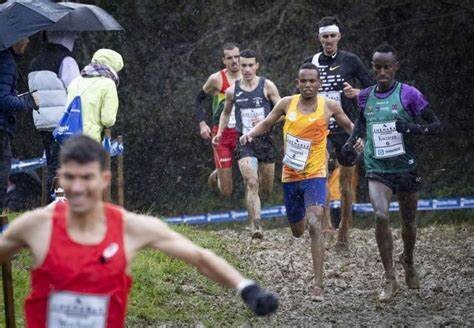
She will start as the overwhelming favourite for the victory, though she’ll face quality opposition in the form of compatriot Mercy Chepkemoi and Kazakhstan’s Daisy Jepkemei. The latter finished seventh at this year’s World Cross Country Championships in Belgrade, and more recently she captured a commanding win in Atapuerca last month.
Chepkemoi is fresh from a fine win in Cardiff last Saturday. She placed fourth over 5000m at the World U20 Championships in Lima in August, finishing just behind bronze medalist Charity Cherop of Uganda, who will also be racing in Santiponce this weekend.

The line-up also comprises Diana and Sharon Chepkemoi, who finished third and seventh respectively in the steeplechase in Lima. Both also competed in Soria last Sunday where they finished third (Diana) and fourth (Sharon).
Meanwhile, France’s Alice Finot, who set a European record of 8:58.67 when finishing fourth in the steeplechase at the Paris Olympics, will be contesting just her second cross-country race in the past seven years.
Portugal’s Mariana Machado recently finished sixth in Atapuerca, sandwiched between Spanish cross-country champion Carolina Robles and Olympic 1500m finalist Agueda Marques who finished fourth and seventh respectively there, closely followed by Maria Forero, the 2022 European U20 cross-country champion. All of them will renew their rivalry this weekend.
European 5000m bronze medalist Marta García, meanwhile, will be making her only cross-country outing of the winter before focusing on the indoor season.
The men’s race has been reduced to 7.5km which plays into the hands of the middle-distance specialists. But that shouldn’t be a problem for Olympic 10,000m silver medalist Berihu Aregawi, as the Ethiopian is also the third-fastest man in history over 3000m.
The 23-year-old opened the year in style by retaining his silver medal at the World Cross Country Championships in Belgrade before setting a 10,000m PB of 26:31.13 in Nerja. Following his Olympic silver in Paris, he clocked an Ethiopian record of 7:21.28 for 3000m and won the 5000m at the Diamond League Final in Brussels.
Sunday’s race will be Aregawi’s first cross-country outing this season, but fellow Etiopians Ayele Tadesse and Wegene Addisu have already made a mark on the tour, finishing second and fourth respectively in Soria last weekend.
Yet Aregawi’s fiercest opposition should come from Burundi’s Rodrigue Kwizera and Spain’s Thierry Ndikumwenayo. Kwizera is still unbeaten this cross-country season, having won in Amorebieta, Atapuerca and Soria. He has successively finished first, second and third on his appearances in Seville over the past three years.
Meanwhile, his training partner Ndikumwenayo – winner in Seville in 2022 – is the European 10,000m bronze medallist and lowered his 10,000m PB to 26:49.49 for ninth place at the Paris Olympics. Ndikumwenayo will travel to Seville from his altitude stint in Sierra Nevada where he’s building up for the European Cross Country Championchips in Antalya on 8 December.
Watch out too for Uruguay’s Santiago Catrofe. He boasts PBs of 7:37:15 for 3000m and 13:05.95 for 5000m and was a surprise winner in San Sebastian two weeks ago when he kicked away from Uganda’s Martin Kiprotich, who’ll also be in contention on Sunday.
Kiprotich will be joined by his compatriots Kenneth Kiprop, Dan Kibet and Hosea Kiplangat. The former is the world U20 5000m bronze medallist and triumphed in Cardiff where Kibet had to settle for third.
The Spanish charge will be led by European indoor 3000m silver medallist Adel Mechaal, US-based Aarón Las Heras, national 10km record-holder Abdessadam Oukhelfen, and the always consistent Nassim Hassaous.
Past winners in Seville include Fernando Mamede (1984 and 1985), Paul Tergat (1998 and 1999), Paula Radcliffe (2001), Kenenisa Bekele (2003, 2004 and 2007), Faith Kipyegon (2016), Joshua Cheptegei (2018) and Jacob Kiplimo (2019).
Temperatures between 22-24C are predicted for the time of the elite races on Sunday.
(11/15/2024) ⚡AMPby World Athletics
Cross internacional de Italica
The Cross Internacional de Itálica is an annual cross country running competition it will be held on 21st of November in Santiponce, near Seville, Spain. Inaugurated in 1982, the race course is set in the ruins of the ancient Roman city of Italica. As one of only two Spanish competitions to hold IAAF permit meeting status, it is one of...
more...Former pro runner arrested for relationship with high-school student
Charlotte, N.C., high school running coach and former elite runner Matthew Elliott was arrested on Wednesday and charged with two counts of “indecent liberties” with a student. Last Friday, the victim, who is now an adult, came forward to the local police department, reporting the inappropriate relationship she had with Elliott, who was her cross-country coach while she was enrolled at the school, Charlotte Country Day.
Reportedly, the victim told officers that Elliott flirted with her and made “numerous advances,” and that they had an inappropriate relationship.
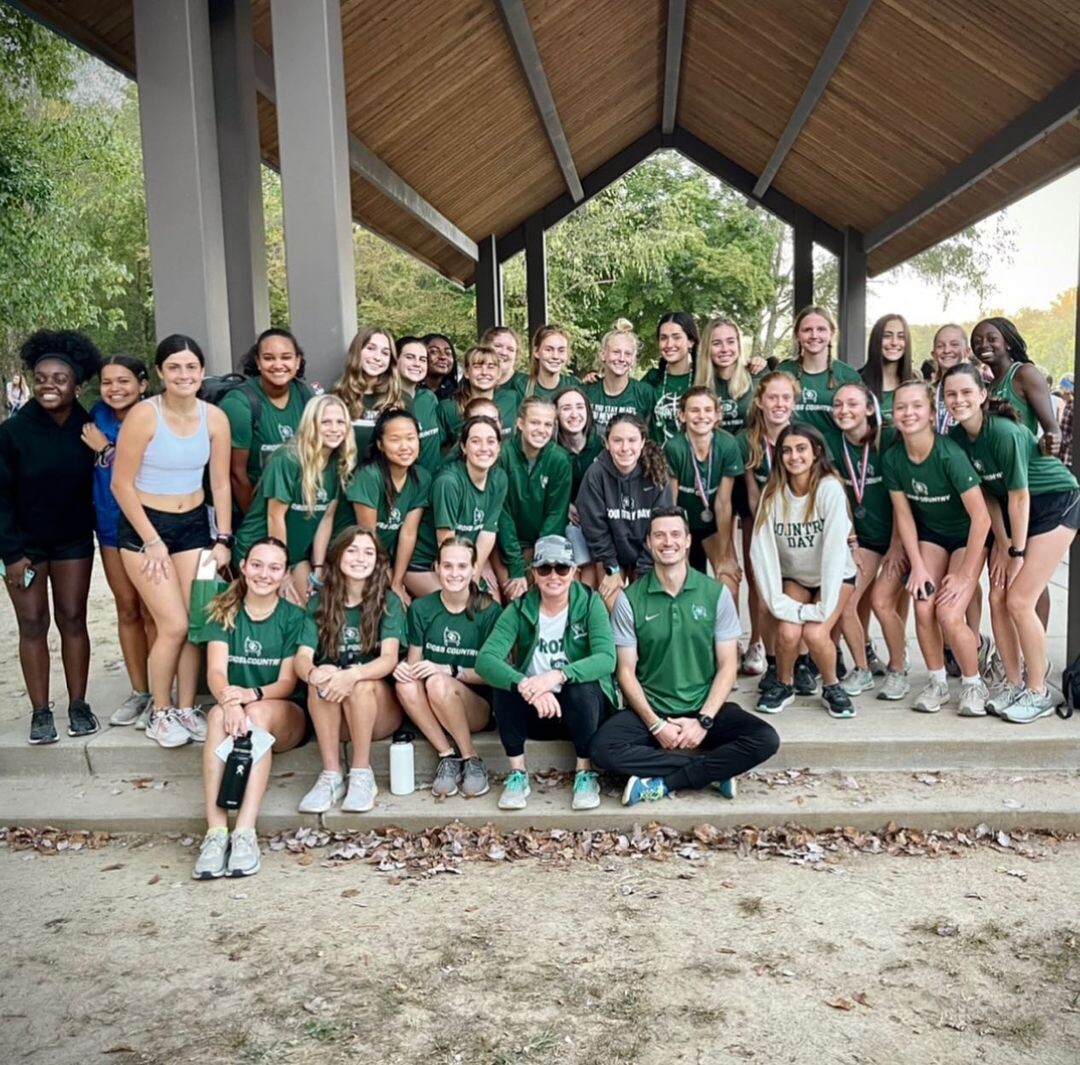
Elliott, 39, had been a coach and a substitute teacher at the high school since 2015. After the allegations emerged, the school terminated Elliott’s employment, barred him from their campuses and informed families and alumni of the misconduct. The statement revealed that the victim attended the school within the past few years.
“America’s fastest kindergarten teacher”

The development comes years after Elliott rose to fame in 2013 after placing fourth in the 1,500m at the U.S. Track and Field Championships, beating elite runners while teaching full-time. An emotional post-race interview with Elliott went viral; the athlete even received autograph requests in the mail. That year, he was referred to as “America’s Fastest Kindergarten Teacher,” and was a cover model for both Runner’s World and Running Times magazines.
Elliott was a kindergarten through third-grade teacher for children with special needs at the Palmetto School in Rock Hill, S.C. The magazine story revealed that the teaching job required Elliott to act as a bus driver as well; he drove the kids to and from their homes before and after school.
During his career, Elliott was coached by American Distance Project coach Scott Simmons and joined the Team Indiana Elite running group alongside athletes such as William Leer. He broke the four minute barrier on multiple occasions and became a Brooks-sponsored athlete.
He set his sights on making the 2016 U.S. Olympic team, and gave inspirational talks to cross-country teams about his journey. In 2021, Elliott was featured in a podcast for The Unearthing Project, where he shared his running and coaching stories. Elliott hasn’t competed since 2019, according to his World Athletics profile.
None of the recent allegations against Elliott have been proven in court. News sources report the former coach was held on a USD $10,000 bond and was released on Thursday morning, but was set to face a judge that afternoon.
(11/15/2024) ⚡AMP
by Cameron Ormond
Valencia Marathon up in the air after flooding hits region
As severe flooding continues to affect many areas of Spain, the 2024 Valencia Marathon, scheduled for Sunday, Dec. 1, may face cancellation. According to recent reports, Valencia is under high alert due to the resurgence of storms that recently left parts of the city submerged in mud and debris, killing more than 200 residents. The recent rainfall and damage raise concerns about the city’s ability to safely host an event of this scale in two weeks.
Though the marathon course was relatively unaffected by the Oct. 29 storm, widespread damage elsewhere has led organizers to consult with local authorities to determine whether the race can safely go forward.
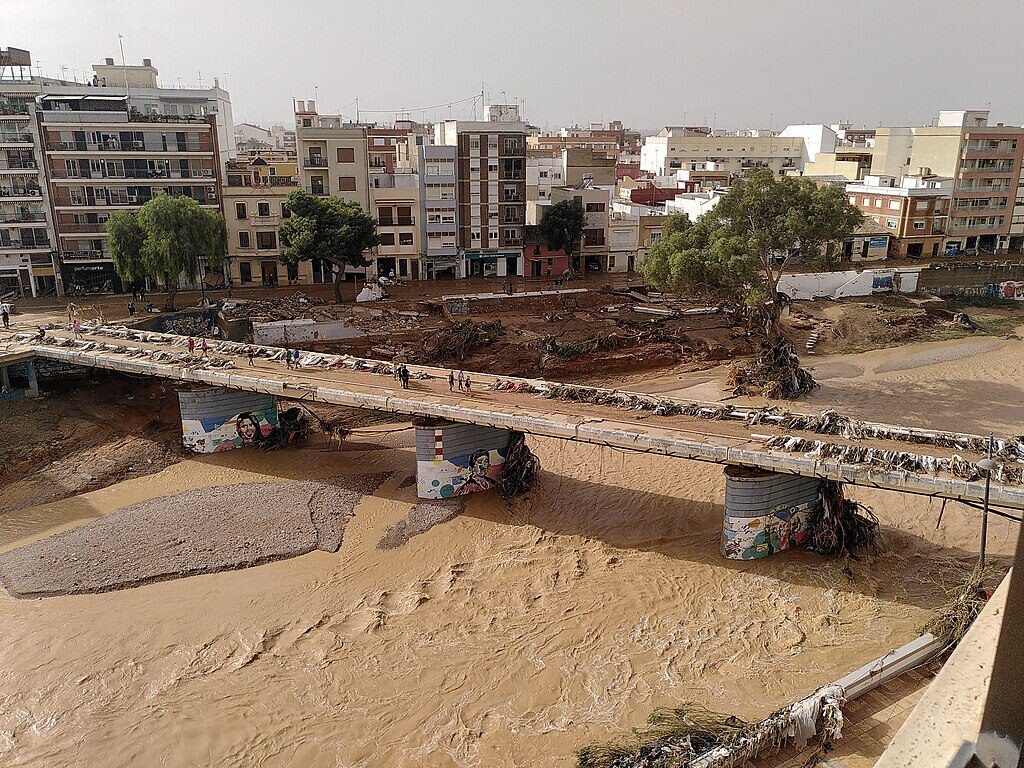
The race’s lead sponsor, New Balance, has already scaled back its plans, cancelling the hospitality and activation events planned around the marathon. On Wednesday, the brand sent an email to ambassadors, influencers and athletes, showing support for Valencia: “While the city is focused on recovery efforts, we still believe this event could bring the running community together in solidarity with Valencia. Runners are encouraged to defer their participation to 2025 and 2026, though New Balance will continue to provide bibs and accommodations for this year’s participants if it goes ahead.”
The marathon has historically drawn more than 30,000 runners from around the world, bolstered by its reputation as one of the world’s fastest courses. However, safety concerns have already led the city to cancel this weekend’s Grand Prix motorcycle race (2024 Valencia GP). A source within the Valencia Marathon organizing committee has indicated that while they are committed to moving forward if possible, the decision ultimately rests on government officials and local authorities.

Some athletes have already begun exploring alternatives, including Toronto’s Cory Nagler, who has invested nearly CAD $4,000 in flights, trains, accommodations and entry fees to run Valencia. Nagler, who has trained for the last six months, still remains hopeful but is preparing backup plans. “Valencia is still plan A, but Turin is plan B,” he says. Nearby marathons in Italy (Turin and San Remo), scheduled for the same day, offer potential options for thousands seeking certainty.
The race has told registrants they plan to make a decision in the near future, as the officials continue to monitor the safety and feasibility of holding one of the year’s biggest international running events amid ongoing recovery efforts.
(11/15/2024) ⚡AMPby Marley Dickinson
VALENCIA TRINIDAD ALFONSO
The Trinidad Alfonso EDP Valencia Marathon is held annually in the historic city of Valencia which, with its entirely flat circuit and perfect November temperature, averaging between 12-17 degrees, represents the ideal setting for hosting such a long-distance sporting challenge. This, coupled with the most incomparable of settings, makes the Valencia Marathon, Valencia, one of the most important events in...
more...'The track is my escape' - Kenny Bednarek reveals how racing connects him to his lost family
Kenny Bednarek has a mission beyond medals at the Paris Olympics, seeking to reconnect with his biological family through victory.
Double Olympic silver medalist in the 200 meters Kenny Bednarek embarked on a journey to the Paris Olympics fueled not only by his ambition to win but by a profound personal quest.
While athletic triumph was a priority, Bednarek’s deeper mission was to reconnect with the family he lost as a young child.
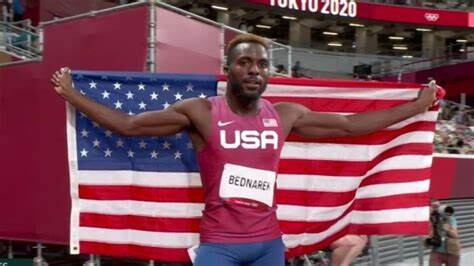
Abandoned by his biological parents and placed in foster care, Bednarek has often spoken about his childhood, growing up under the love and guidance of his foster mother, Mary.
Though grateful for the family he found, his past remains a powerful motivator driving him toward the top of the podium.
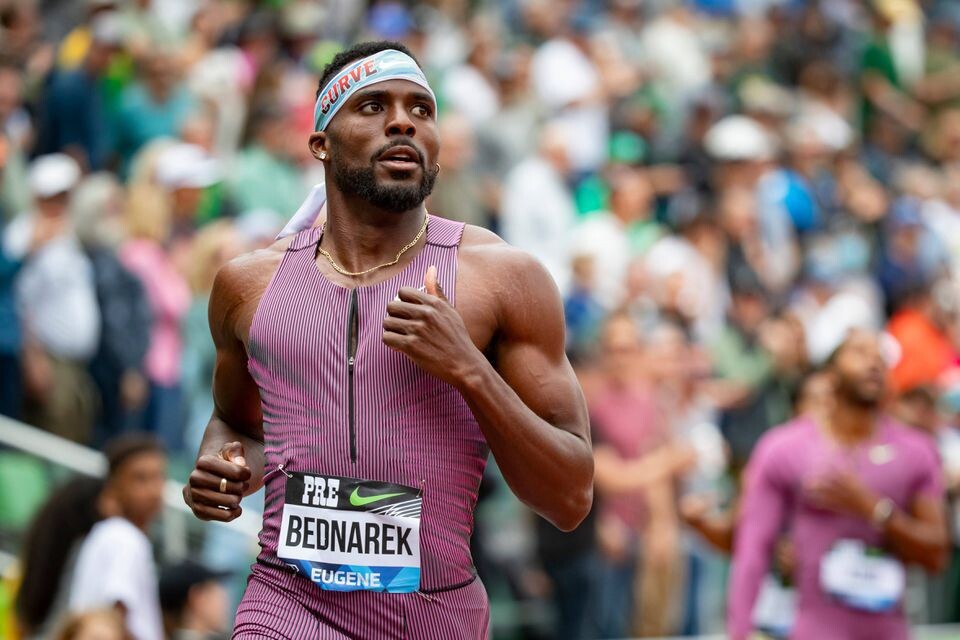
“The track was, uh, a way to, I guess, escape my worries. That’s where I felt most free," said Bednarek in Sprint docu-series season 2.
For the 26-year-old, every race is not just an athletic endeavor—it is a search for a deeper sense of belonging.
As a child, Bednarek’s life took a dramatic turn when he was separated from his biological family and entered foster care.
Although he found a home and a mother who offered him unconditional love, the mystery of his roots has lingered.
His adoptive mother, Mary, has been an unwavering source of strength, cheering him on from the stands at every major competition, from U.S. trials to international meets.
“My mother loves to scream,” Bednarek joked in the interview, highlighting her enthusiastic support.
Bednarek also opened up about the emotional layers tied to his Olympic dreams.
“Winning the Olympic gold could help me find out more about myself, my heritage, and, you know, my biological brothers and sisters that I’ve had. They’re out there somewhere, and, you know, maybe after winning this gold medal could help me find that out, find where they’re at,” he shared in episode 4.
For Bednarek, the stadium is not merely a venue for competition but a place of solace where he feels closest to his heritage.
“When I always step on the track and the gun goes off, that’s where I most feel like. This is the only thing I have so far of, like, my heritage," he admitted.
Since he was young, racing has been his escape, a place where he felt free and connected to his roots.
Now, as he fights for a gold medal, he hopes that standing atop the podium might spark new opportunities to trace his biological family.
The two-time Olympic silver medalist’s rise in the sprinting world has been meteoric, with victories in Diamond League races, World Championships, and the Olympics.
But even with his accomplishments, he has often felt overlooked.
“You know, the media hasn’t really paid attention to me as much as everybody else,” he shared.
With his foster mother Mary cheering from the stands, Bednarek’s quest for victory in Paris is a personal mission.
“I’m going to be the top dog when the gun goes off,” Bednarek confidently asserted, embodying his determination and resolve.
For him, this race is more than just another competition—it’s a step closer to piecing together his story.
The Olympics, for Bednarek, is an opportunity not only to prove himself on the global stage but to finally bridge the gap between his past and present.
(11/14/2024) ⚡AMPby Festus Chuma
Botswana’s Letsile Tebogo criticizes Netflix series SPRINT for American bias
As Season 2 of the Netflix track and field series SPRINT premiered on Wednesday, one of the star athletes featured, Olympic 200m champion Letsile Tebogo, has already voiced his disappointment. The 21-year-old sprinter was frustrated with what he saw as an American bias in the docuseries, which follows the world’s top sprinters and their journey to the Paris 2024 Olympics.
Tebogo, who made history for Botswana by winning two medals at the Olympics—one of them being the nation’s first-ever gold—doesn’t appear until 22 minutes into the final episode. The series had promised to feature Tebogo, alongside notable Olympians such as Noah Lyles, Gabby Thomas, Fred Kerley, Kishane Thompson, Julien Alfred, Kenny Bednarek, Shericka Jackson and Oblique Seville. However, Tebogo felt the focus skewed heavily toward the four American athletes, particularly Lyles.
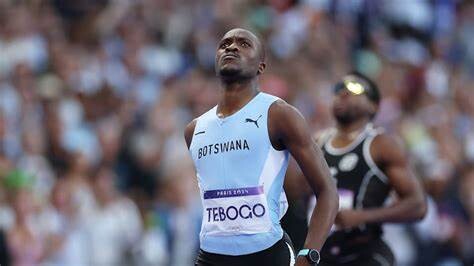
Tebogo took to X to share his disappointment, sharing he was excited to watch but felt the show was overly focused on American athletes, with him portrayed more as a supporting character to the American sprinters.
His sentiments echo those of Marie-Josée Ta Lou-Smith, Africa’s 100m record holder from Ivory Coast, who also criticized the Box To Box producers earlier this year after SPRINT Season 1 excluded her from the final cut, despite extensive filming. “I feel really disrespected, because when you say you are going to produce a series about the fastest sprinters in the world, you should show everyone, not only those who win,” Ta Lou-Smith shared with The Inside Lane. She highlighted the need for equal representation, noting, “I am the African record holder; I deserve respect.”
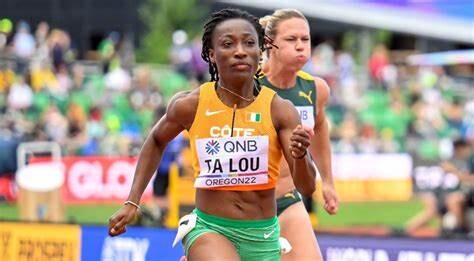
The documentary series is produced by Paul Martin at Box to Box Films, the same production company behind other Netflix successes such as Full Swing and Formula 1: Drive to Survive. On social media, track fans have begun calling on the producers at Box-To-Box Films to consider a more international approach in future seasons, noting that they seemed to have disregarded the American bias from Season 1.
(11/14/2024) ⚡AMPby Marley Dickinson
'Success is more than money' - Eliud Kipchoge warns athletes against the lure of quick riches
A mental health crisis in sports has forced Eliud Kipchoge to urge young athletes to prioritize career and values over money, hoping to guide them away from depression and doping risks.
Former world marathon record holder Eliud Kipchoge is urging upcoming athletes to prioritise their careers and personal values over the lure of fast money.
In light of rising mental health concerns and growing cases of doping in sports, Kipchoge has called on young athletes to shift their focus from chasing quick financial gains to building lasting careers with integrity and resilience.
Kipchoge, a two-time Olympic gold medallist and celebrated for his record-breaking marathon runs, has dedicated himself to nurturing the next generation of sportsmen and women.
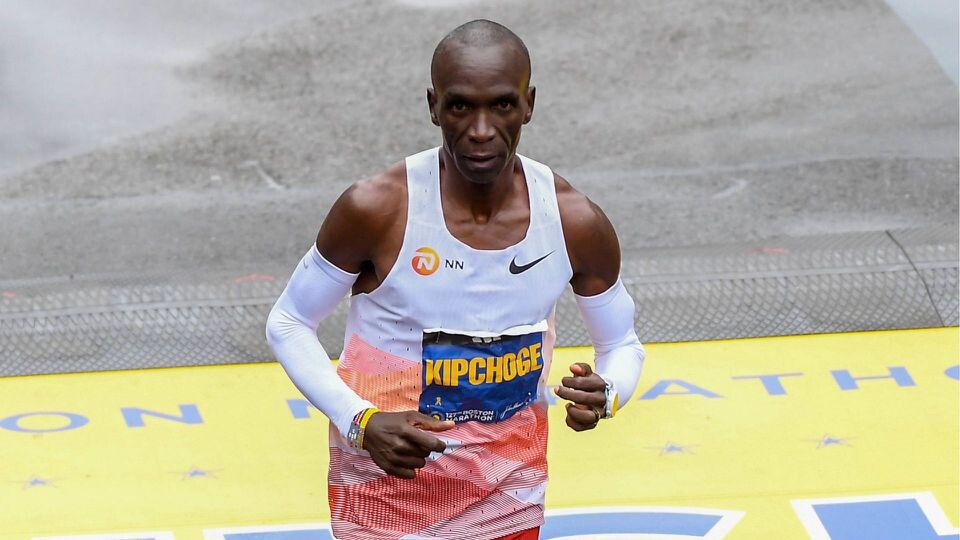
“I am trying to talk to the young people because no one has really gone under the skin of athletes. There is a lot going on under their skins but above all we need to sensitise them that life is not all about money,” Kipchoge emphasised as per TelecomAsiaSport.
“You need to have your own values as a person, and that is what should drive you.”

With a career marked by perseverance, Kipchoge understands the challenges that athletes face both on the field and behind the scenes.
He hopes to use his influence to guide young athletes in prioritising personal values, mental well-being, and career longevity over the fleeting allure of fame and money.
He is deeply concerned with the current state of affairs, especially as he sees the tragic impacts of depression and substance abuse on those who struggle to cope.
Recently, the sporting world has been rocked by the deaths of young athletes who succumbed to the pressures of the industry.
Last month, former world Under-20 champion Kipyegon Bett tragically passed away after battling depression and alcoholism, according to close family members.
In another tragic incident, Clement Kemboi, a former All Africa Games steeplechase champion, was found to have taken his own life at his home in Iten.
In response, Kipchoge is determined to do more than just compete—he wants to inspire change within the sporting community.
"I will still continue talking to them," he said, expressing his dedication to counseling and supporting young athletes.
"And if all of us can come together and get our minds together, we can get rid of these things. It is unfortunate that we can lose athletes at such a young age, and it is more unfortunate that we can have young people get into depression and die."
Kipchoge has witnessed how the pressure for financial success can steer young athletes down dangerous paths, often leading to doping as a shortcut to fame and prosperity.
He attributes much of the current doping crisis to the culture of seeking quick, easy money, rather than focusing on building a reputation of dedication and integrity.
Despite the challenges, he remains hopeful that a positive shift is possible if athletes receive the right mentorship and guidance early in their careers.
The celebrated marathoner believes that with open conversations and a community effort, young athletes can learn to see beyond monetary gains and understand the importance of a balanced life that honors their mental health, values, and long-term goals.
"There is a need for athletes to understand that a fulfilling life extends beyond medals and money," Kipchoge said, expressing his optimism for change. "
"The fame and fortune are secondary to the peace and pride of knowing you did it the right way."
(11/14/2024) ⚡AMPby Festus Chuma
Kiplimo Set to Defend Title in Star-Studded NN Zevenheuvelenloop Race
Uganda’s Jacob Kiplimo returns to the NN Zevenheuvelenloop (Seven Hills Run) on Sunday, November 17, aiming to defend his title in the 15km race, which last year saw him match the world record.
Kiplimo, one of the brightest talents in distance running, will be joined by an elite lineup, including his half-brother, reigning marathon world champion Victor Kiplangat, adding extra competition to an already loaded field.
Other big names set for NN Zevenheuvelenloop Race
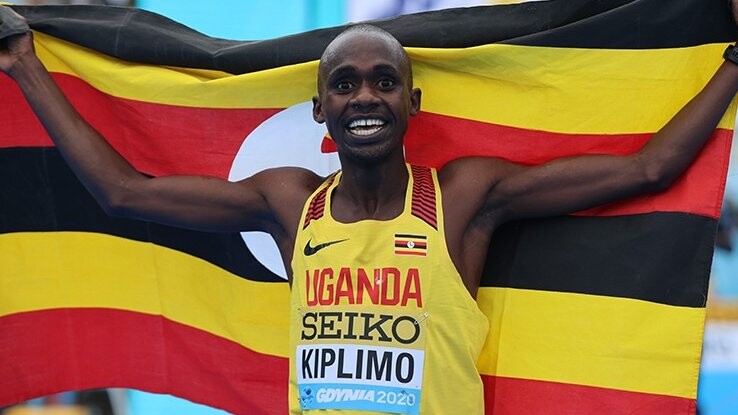
Great Britain’s Marc Scott, Belgian marathoner Koen Naert, and Nils Voigt of Germany are also set to compete, promising a highly contested race on the rolling hills of Nijmegen. A strong domestic lineup looks to challenge the Dutch record, with national runners such as Mike Foppen, Richard Douma, Filmon Tesfu, Khalid Choukoud, Frank Futselaar, and Gianluca Assorgia joining the field.
NN Zevenheuvelenloop Race women’s race will be hot
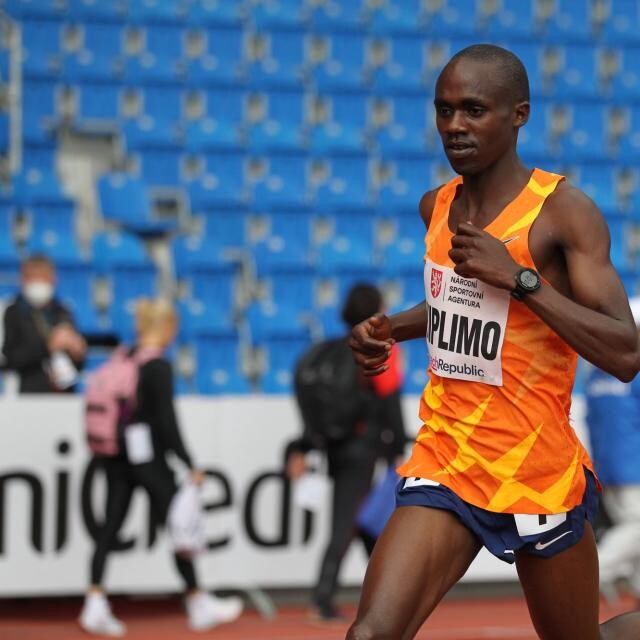
In the women’s race, Norway’s Karoline Bjerkeli Grøvdal leads a strong roster and will face Ethiopia’s Mizan Elam and Ireland’s Fionnula McCormack. Dutch hopefuls Diane van Es, Maureen Koster, and Jill Holterman will also race alongside Rachel Klamer, a seasoned Olympic triathlete representing the Netherlands.
The NN Zevenheuvelenloop’s hilly course and competitive field promise an exciting race as top international and local athletes chase records and titles in one of the Netherlands’ premier running events.
(11/14/2024) ⚡AMPby Trackalerts.com
The NN Zevenheuvelenloop
The NN Zevenheuvelenloop, or Seven Hills Run, is an annual 15-kilometer road race held in Nijmegen, Netherlands. Established in 1984 as a modest event with 500 male participants, it has evolved into one of Europe's premier running events, attracting over 25,000 runners in recent years. Renowned for its picturesque and undulating course, the Zevenheuvelenloop has been the stage for multiple...
more...Netflix premieres SPRINT season two as Noah Lyles, Gabby Thomas & Co feature
Streaming platform Netflix has finally premiered the docuseries Sprint, following the Olympic journey of renowned athletes including Olympic champion Noah Lyles, Gabby Thomas and other Olympic headliners.
Streaming platform Netflix has recently premiered the highly anticipated docuseries SPRINT, a gripping two-part docuseries that offers an exclusive, behind-the-scenes look at the lives of world-class sprinters in the build up to recently concluded Paris 2024 Olympics.

For fans and sports enthusiasts, Sprint delivers a raw, intimate perspective on the rigorous training and dedication it takes to excel on the global stage.
Part 1 of the series, which debuted on July 2, introduced viewers to several of the world’s most promising sprinters as they navigated the intense preparation leading up to the 2023 World Championships.

Part 2, premiered on Wednesday, November 13, bringing the athletes’ journeys full circle.
The series captures not just the physical demands of the sport but also the emotional highs and lows, from moments of triumph to the mental hurdles of competing at an elite level.
Through personal stories and unprecedented access to training routines, this latest installment allows viewers to experience the high-stakes moments that define these sprinters’ lives.
The docuseries showcases an impressive lineup of athletes, featuring Olympians like Noah Lyles, Gabby Thomas, Fred Kerley, Kishane Thompson, Julien Alfred, Letsile Tebogo, Kenny Bednarek, Shericka Jackson and Oblique Seville, among others.
With an element of rivalry between some of the top athletes showcased, there sure is mouth-watering drama worth tuning into.
The series features four episodes with an average watch time of about 48 minutes each.
(11/13/2024) ⚡AMPby Stephen Awino
A morning cup of coffee could improve your running performance by boosting your confidence, study finds
If you don’t drink coffee on race day, it might be time to start. Countless studies have pointed to caffeine as an effective measure for boosting aerobic performance in endurance sports–but a new study shows that even the thought of coffee can improve your race day results. With expectations of enhanced performance, athletes demonstrated increased power output and focus with minimized perceived pain and exertion–even without any caffeine intake.
The caffeine placebo effect

Research has shown that physically, caffeine enhances function of the nervous system, delays fatigue, reduces perceived levels of pain and exertion, and can even offset the impacts of sleep deprivation.
The analysis of the caffeine placebo effect demonstrated that the benefits of your morning cup of java aren’t limited to physiological function, and confirmed that an athlete’s expectation of supplementation improves exercise performance outcomes. The study looked at performance effects, pain perception, belief-behavior relationship and attentional and arousal changes in endurance cyclists, comparing results between cyclists who ingested caffeine and cyclists who were given a placebo.
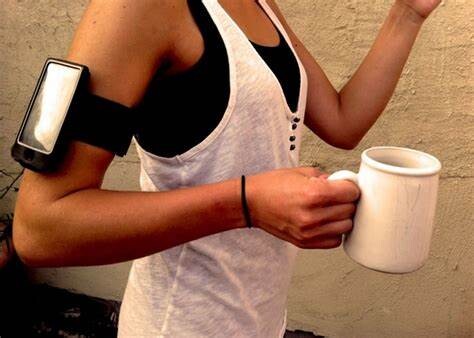
The subjects given a placebo instead of caffeine still experienced improved motor function, reduced pain, improved concentration and enhanced power and endurance. The mirrored caffeine benefits, resulting from only the belief that caffeine had been consumed, demonstrates the psychological value of drinking coffee.
The takeaway? Drinking your daily brew can subconsciously boost your expectations and confidence, which, in turn, can boost your performance.
When should I drink my coffee?
Don’t have a cup of coffee on an empty stomach. Eating food before consuming caffeine can help reduce the digestive issues the stimulant might trigger (such as having to go to the bathroom).
Caffeine is completely absorbed within 60 minutes of consumption, and while it can begin to kick in after five minutes, most individuals experience its peak effects after 45 to 60 minutes. It is recommended to drink your coffee about an hour pre-race so it can deliver its full stimulating effects in time for your event, allowing you to fully take advantage of its benefits.
Studies recommend caffeine intake around 94-150 mg or six mg per kilo of body weight, reaching a maximum of 400 milligrams per day. After peaking, coffee’s effects can take up to six hours to wear off.
Alternatives to coffee
Not a coffee fan? Black tea, green tea, energy drinks and caffeine pills allow you to reap the benefits of coffee without having to drink it. Be aware that tea has less caffeine than coffee, and energy drinks and supplements usually have considerably more.
(11/13/2024) ⚡AMPby Cameron Ormond
'I wouldn't say we are friends' - Olympic champion Noah Lyles opens up on heated rivalry with Christian Coleman
Olympic champion Noah Lyles has shed new light onto his relationship with fierce rival Christian Coleman in new Netflix docuseries SPRINT.
Olympic champion Noah Lyles has opened up about his relationship with fierce sprinting rival, Christian Coleman revealing a complex dynamic between the two competitors in the recent Netflix docuseries Sprint.
The reigning 100m champion spoke candidly about his relationship with Christian Coleman, his sprinting counterpart, explaining that they have a mutual respect but little friendship.
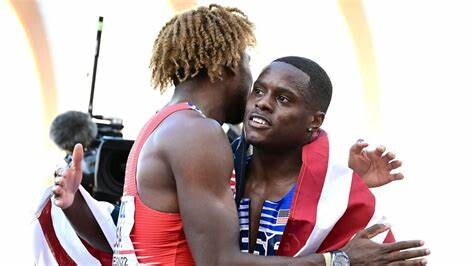
"I came more to his playground than he came into mine. His main event was the 100m, and mine was the 200m," Lyles said, underscoring their different specialties within track.
The two sprinters have crossed paths frequently in recent seasons, but, as Lyles clarified, "I wouldn't say we are friends."
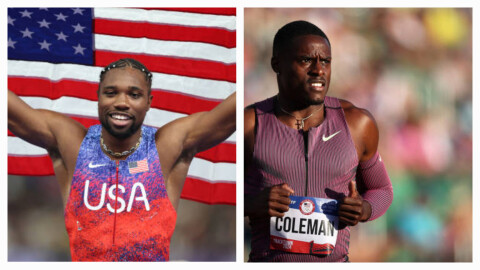
This rivalry between Lyles and Coleman has become one of the most exciting storylines in track and field over the past year.
Their head-to-head battles in the shorter 60m indoor races have been especially thrilling, with each trading wins and losses.
The two faced off at marquee events like the USATF Indoor Championships and the World Indoor Championships, both showcasing their world-class talent and fueling their rivalry.
However, Lyles’s performance at the 2024 Paris Olympics has shifted the dynamic.
Lyles clocked an impressive 9.79 seconds in the 100m final, securing the title of the world's fastest man.
Coleman had to watch from home as one of his fiercest rival got his crowning moment in an event that he missed out on altogether.
This achievement not only marked a career-defining moment for Lyles but also established him as the man to beat heading into the 2025 season.
With Lyles’s recent success and Coleman’s absence from the Olympic stage, the coming season may mark a new chapter in their rivalry with fans eager to see whether Coleman will reclaim his place among sprinting’s elite or if Lyles will continue his reign unchallenged.
For now, Lyles holds the upper hand, and the tension between the two sprinting titans shows no sign of slowing down.
(11/13/2024) ⚡AMPby Stephen Awino
Dina Asher-Smith sparks speculation over potential partnership with Shelly-Ann Fraser-Pryce
British sprinter Dina Asher-Smith has got fans excited over a potential project in the works between her and Jamaican legend Shelly-Ann Fraser-Pryce following her latest social media post.
British sprinter Dina Asher-Smith has got fans wondering if there could be a new project in the works between her and Jamaican legend Shelly-Ann Fraser-Pryce.
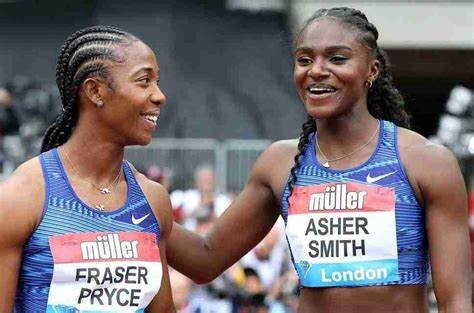
Asher-Smith, who is on holiday in Mexico, posted on her Instagram story saying she was waiting for Fraser Pryce and American hurdler Anna Cockrell to join her, leaving fans excited over a potential project involving the two.
Fraser-Pryce has been mum over her next career move since pulling out of her semi-final race at the Paris 2024 Olympics and recently split up with her coach Raynaldo Walcott.
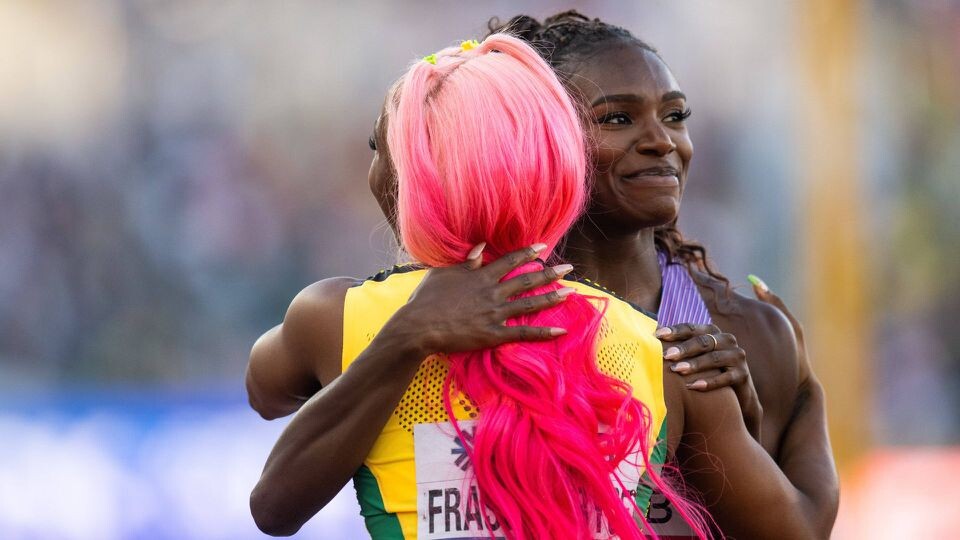
With Asher-Smith, now based in the United States, having started working with coach Edrick “Flo” Floreal ahead of the Paris Olympics, fans are now speculating if the two sprinters could end up training together or if it was something not related to their careers.
Fraser-Pryce is looking to revive her career in 2025 after enduring tough moments in the last two years where injuries and poor form slowed her down.
The 37-year-old recovered from an injury to win bronze and the 2023 World Championships but any hopes of a major comeback in Paris went up in smoke when she withdrew from her 100m race at the Olympics for reasons she is yet to reveal.
She has, however, been in good spirits attending to her Pocket Rocket Foundation, and was recently pictured on holiday alongside her family as she plots her next step.
Asher-Smith, meanwhile, did not meet her desires since her move to the US as she exited the 100m at the semi-final before finishing fourth in 200m with her saving grace being the 4x100m relay silver with Great Britain.
(11/13/2024) ⚡AMPby Joel Omotto
What does your half-marathon time say about your marathon potential?
Running your first marathon can bring a lot of uncertainty, but don’t let your potential finishing time be one of them.
Completing your first half-marathon is a big accomplishment, and for many, it’s a stepping stone toward the marathon. If you’re looking to tackle 42.2 km (26.2 miles) next year, your half-marathon time could offer valuable insight into your marathon potential, helping you set realistic goals for training and race day.
While both races require endurance (and training), the marathon demands a significantly higher level of commitment and preparation. Marathon training can take anywhere from 12 to 16 weeks for experienced runners, and those starting from scratch might train for six months to build the necessary strength and stamina. The rigorous training is essential since, unlike a half-marathon, attempting to complete a marathon with little to no preparation will often lead to injury.
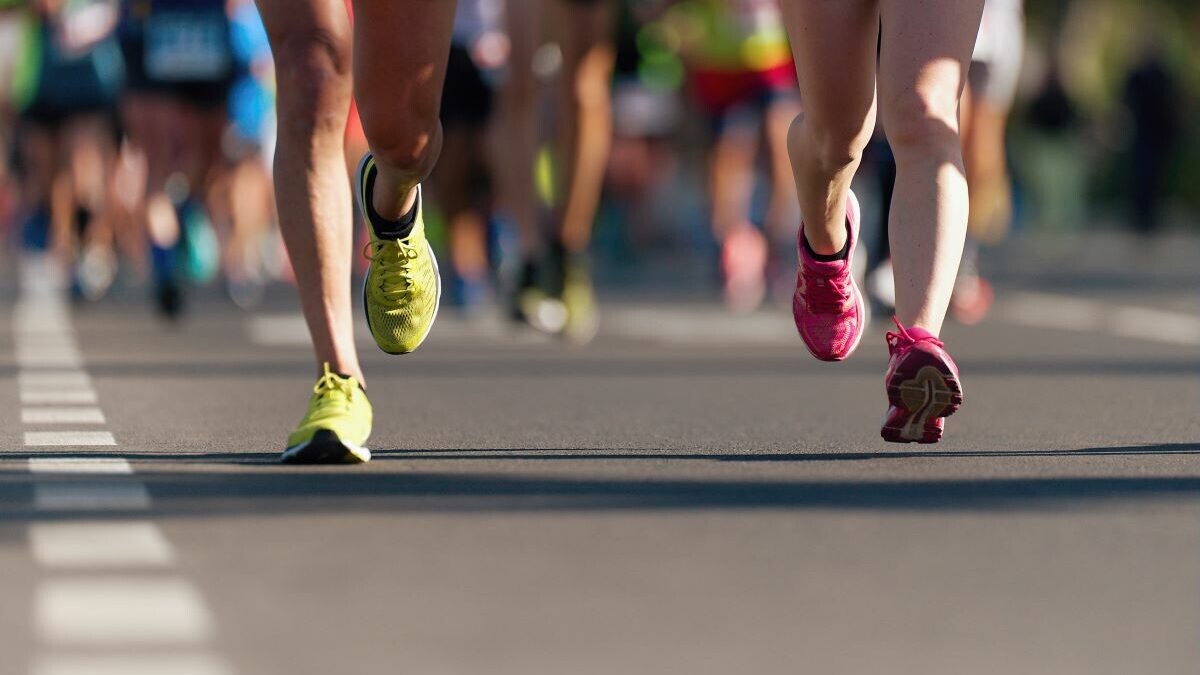
Estimating your marathon potential
One common formula for projecting marathon performance from a half-marathon result is straightforward: double your half-marathon time and add 10-15 minutes. The additional time accounts for the slower pace and increased fatigue that naturally come with the full marathon distance. Here’s an example of how the calculation works:
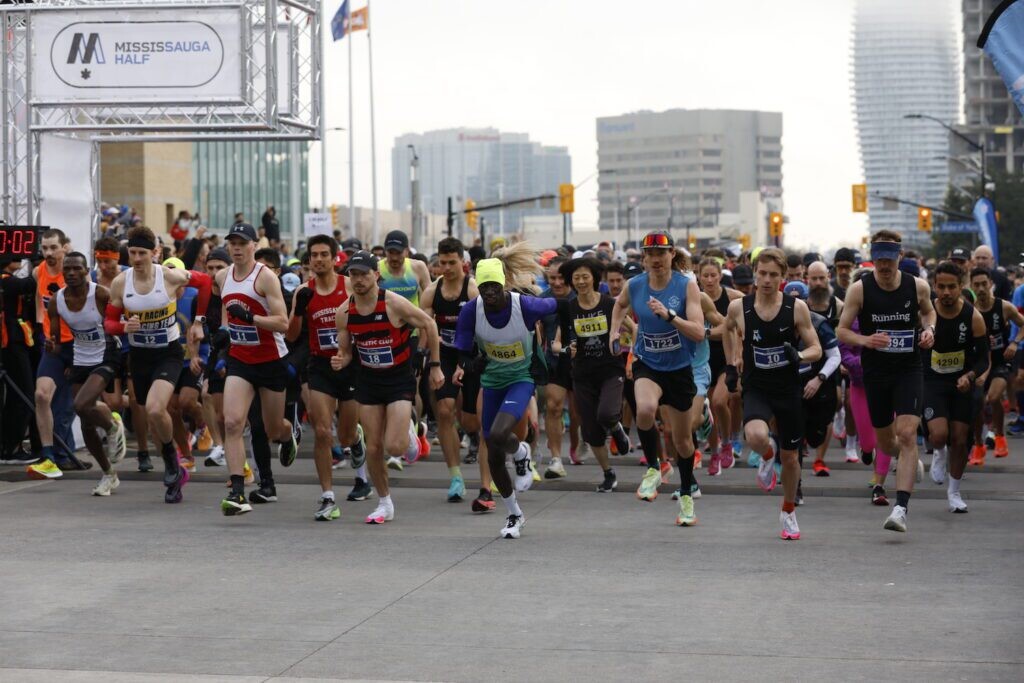
If you finished a half-marathon in 1:45:00: Doubling that time gives you 3:30:00; adding 15 minutes gives a marathon goal of 3:45:00
Of course, it’s not guaranteed; individual factors such as pacing, training, nutrition and race-day conditions may all affect this estimate. For instance, if you completed your half-marathon with a negative split (running the second half faster than the first), you may have more potential for a faster marathon time, as your time suggests you managed your energy well and had more to give at the end. In that case, try adding only 10 minutes to your doubled half-marathon time.
No matter what time your half-marathon suggests you can run, achieving your marathon goal will still require a lot of dedicated training. Many first-time marathoners should nearly double their weekly training volume from the half-marathon. This increase in mileage helps build the physical and mental endurance required for 42.2 km, reducing the risk of hitting the dreaded “wall” in the final 10K.
A well-rounded marathon training plan typically includes long runs to build endurance, speedwork to improve pace and efficiency, and recovery days (i.e., easy runs and days off) to allow for muscle repair. Staying consistent with these elements will best prepare you for the challenge ahead.
Setting a realistic goal
While it’s tempting and easy to set an ambitious marathon goal based on your recent half-marathon time, remember that the main objective for your first marathon should be to finish strong and injury-free. Aim for a time that aligns with your training progress, and don’t skip rest or recovery days—overdoing it can also lead to injury (or a disappointing finishing time). With a realistic goal and the right preparation, your recent half-marathon achievement can start paving the way for marathon success.
(11/12/2024) ⚡AMPby Marley Dickinson
Robots are taking over marathons in China
Would you trust a robot to pace your race?
A surprising number of robots have been spotted participating in marathon events in China in just one week. At the Yizhuang Half Marathon in Beijing on Sunday, Tiangong the Humanoid Robot was spotted cheering on participants before joining the race with 100m to go, crossing the finish line and earning a medal. At the Hangzhou Marathon in Hangzhou, China, on Nov. 3, two quadruped robots acted as official pacesetters and cheerleaders while running alongside participants.
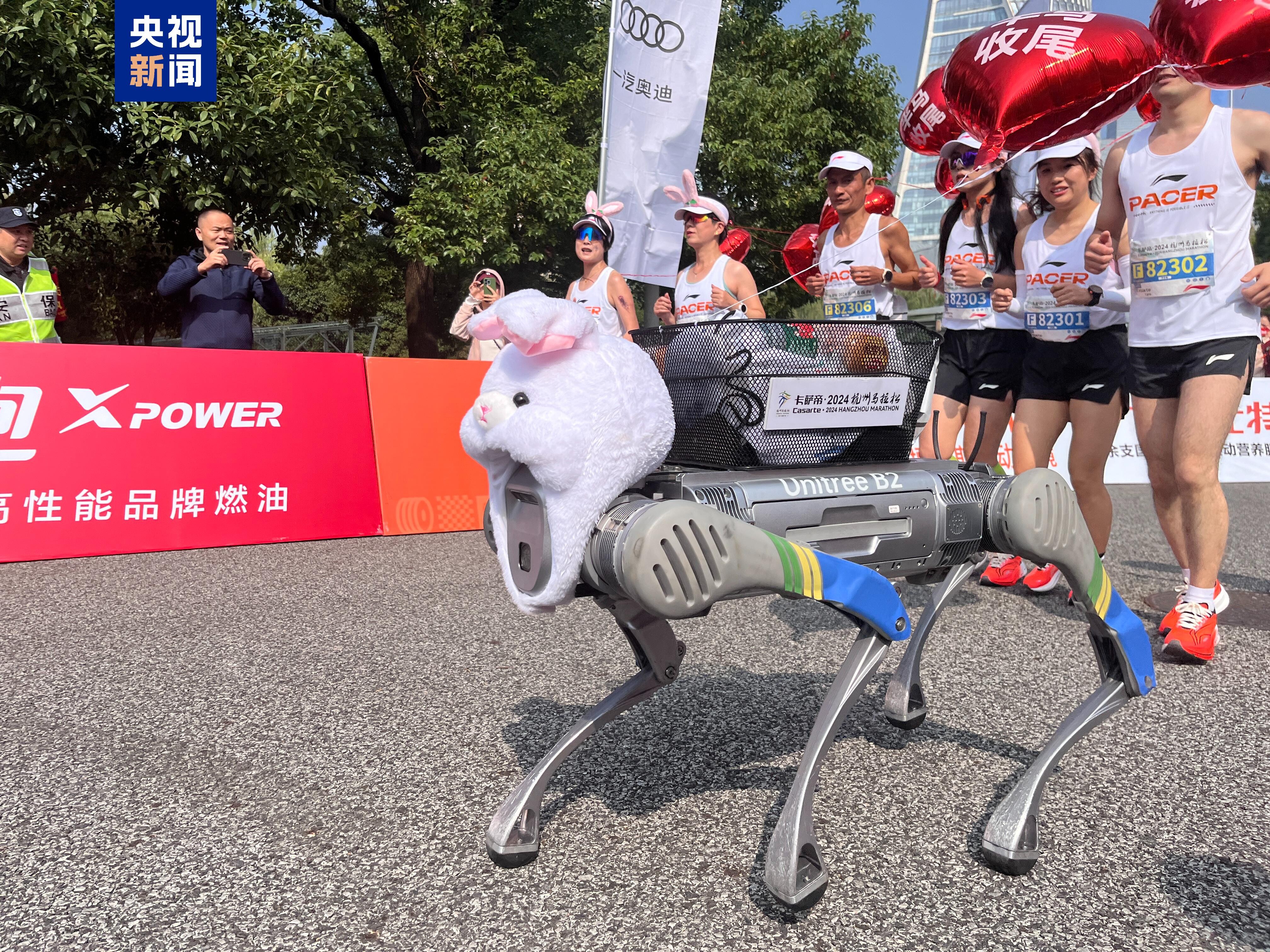
Tiangong is the world’s first full-sized fully-electric humanoid robot, weighing in at 43 kg and standing at 163 cm. Its functions included waving, shaking hands and posing, according to Global Times.
The quadruped robots, Go2 and B2, were showcased in Hangzhou with different roles. Go2 provided runners with music, messages of encouragement and safety tips along the race course. It is also reportedly capable of shaking hands and performing backflips and handstands.

B2 set out at a steady pace for the half-marathon, providing runners with a reliable gauge of their pace. Tests were conducted to assess the machine’s ability to respond to humans and obstacles on the course. During the race, B2 wore bunny ears to emphasize its role as a pace-setting rabbit.
The robots’ abilities are not limited to running and maintaining steady paces. The machines can reportedly provide runners with real-time feedback on factors such as temperature and heart rate. The androids are also useful for upholding and enhancing safety measures during the event, facilitating real-time monitoring and detection of security or medical emergencies–even transporting medical supplies quickly across the venue when needed.
The benefits of the two- and four-legged robots suggest their prevalence at marathon events will continue to increase in coming years.
(11/12/2024) ⚡AMPby Cameron Ormond
Hangzhou Marathon
The Hangzhou Marathon won the honor of “gold medal game” awarded by Chinese Athletics Association, ranking among top domestic competitions. Established in 1987, a total of 32,000 runners from 50 countries and regions compete in these events: Full Marathon (42.195 km) and Half Marathon (21.0975 km), Mini Marathon (7 km), Couple Run (4.5 km) and Family Run (1.2 km). The...
more...88-year-old runner completes his 12th consecutive Athens Marathon
On Sunday at the historic Athens Marathon, 88-year-old Ploutarchos Pourliakas became the oldest finisher at this year’s race, crossing the line in six hours and 31 minutes—a full 20 minutes faster than his 2023 finish.
Defying both age and limits, Pourliakas completed his 12th Athens Marathon as part of the event’s 41st edition. Known as “The Authentic Marathon,” this race traces what is believed to be the original path taken by Athenian messenger Pheidippides, who ran to announce the Greek victory over the Persians in the Battle of Marathon, nearly 2,500 years ago.
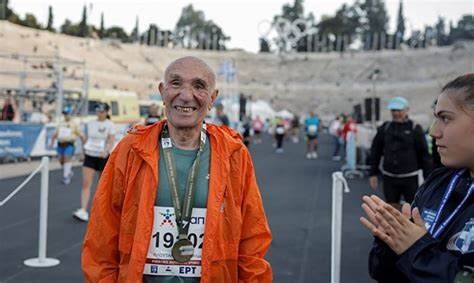
Pourliakas reached the finish line at the Panathenaic Stadium, the venue of the first modern Olympics in 1896, surrounded by his family and grandchildren. “I achieved to finish and even improved on last year,” he told Reuters in an interview. “I feel younger than my 88 years.”
His philosophy for longevity in running is simple: moderation and consistency. “I’ve never smoked. I don’t drink, and I eat in a balanced way,” said Pourliakas. He revealed that he does enjoy a daily sip of tsipouro, a traditional Greek brandy, saying he considers it more as a health tonic than as a drink.
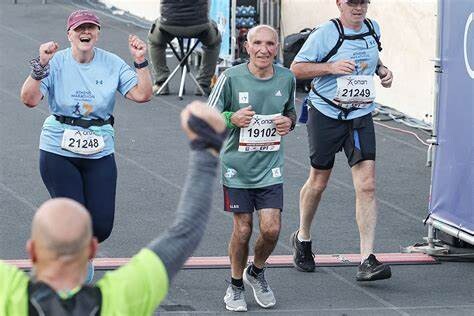
According to Reuters, Pourliakas began running at age 73, inspired by his son, who is an ultramarathoner. Now, Pourliakas follows a dedicated training regimen in his hometown of Kastoria, logging five kilometres on weekdays and 15 to 20 kilometres on weekends.
Pourliakas’s story echoes that of Canadian masters running legend Ed Whitlock, who also started running later in life. In 2000, Whitlock became the oldest person to complete a sub-three-hour marathon at age 69 and later set the men’s 85+ world record, with a time of 3:56:38, at the 2016 Toronto Waterfront Marathon. Like Whitlock, Pourliakas’s commitment and discipline inspire runners of all ages to keep pushing their limits.
“Why wouldn’t you believe it? We all can do it. As long as we want to,” Pourliakas said.
(11/12/2024) ⚡AMP
by Marley Dickinson
Athens Marathon
The Athens Classic (authentic) Marathon is an annual marathon road race held in Athens, Greece, normally in early November. The race attracted 43.000 competitors in 2015 of which 16.000 were for the 42.195 km course, both numbers being an all-time record for the event. The rest of the runners competed in the concurrent 5 and 10 kilometers road races and...
more...Joe Klecker Plans His Half Marathon Debut
In a live recording of The CITIUS MAG Podcast in New York City, U.S. Olympian Joe Klecker confirmed that he is training for his half marathon debut in early 2025. He did not specify which race but signs point toward the Houston Half Marathon on Jan. 19th.
“We’re kind of on this journey to the marathon,” Klecker said on the Citizens Bank Stage at the 2024 TCS New York City Marathon Expo. “The next logical step is a half marathon. That will be in the new year. We don’t know exactly where yet but we want to go attack a half marathon. That’s what all the training is focused on and that’s why it’s been so fun. Not that the training is easy but it’s the training that comes the most naturally to me.”
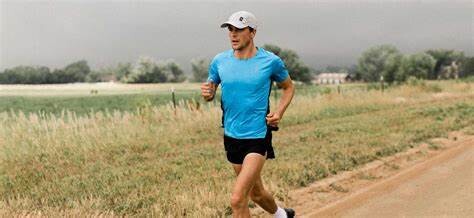
Klecker owns personal bests of 12:54.99 for 5000m and 27:07.57 for 10,000m. In his lone outdoor track race of 2024, he ran 27:09.29 at Sound Running’s The Ten in March and missed the Olympic qualifying standard of 27:00.00.
His training style and genes (his mother Janis competed at the 1992 Summer Olympics in the marathon and won two U.S. marathon national championships in her career; and his father Barney previously held the U.S. 50-mile ultramarathon record) have always linked Klecker to great marathoning potential. For this year’s TCS New York City Marathon, the New York Road Runners had Klecker riding in the men’s lead truck so he could get a front-row glimpse at the race and the course, if he chooses to make his debut there or race in the near future.
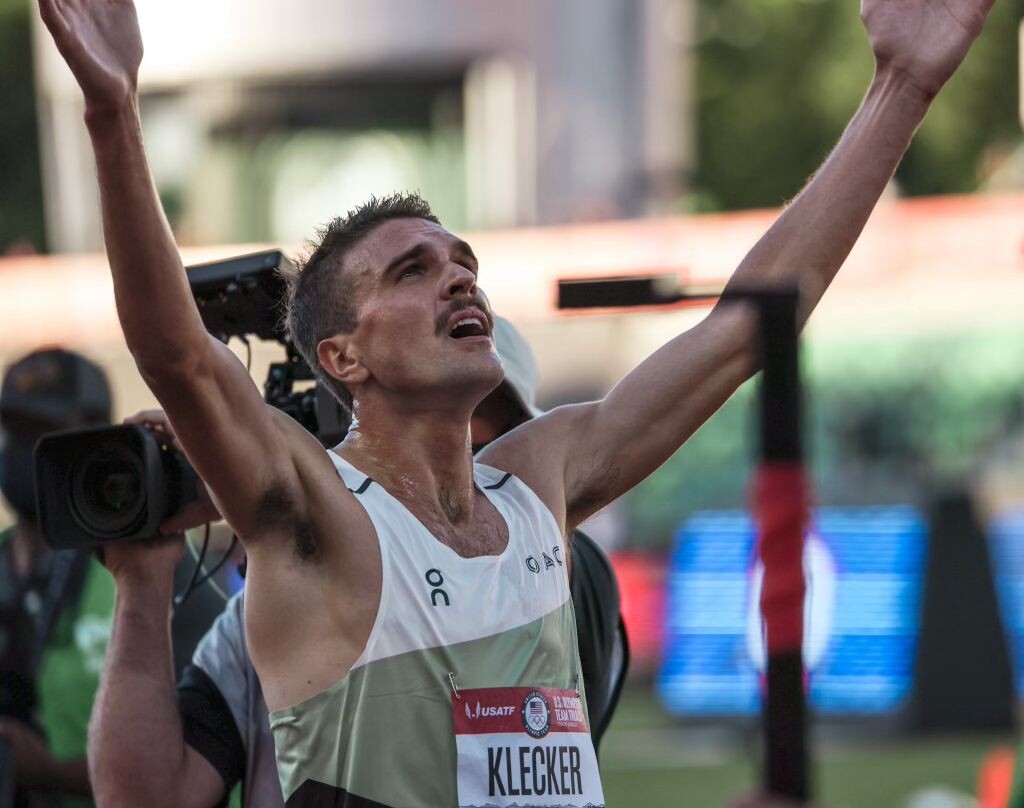
The Comeback From Injury
In late May, Klecker announced he would not be able to run at the U.S. Olympic Track and Field Trials in June due to his recovery from a torn adductor earlier in the season, which ended his hopes of qualifying for a second U.S. Olympic team. He spent much of April cross training and running on the Boost microgravity treadmill at a lower percentage of his body weight.
“The process of coming back has been so smooth,” Klecker says. “A lot of that is just because it’s been all at the pace of my health. I haven’t been thinking like, ‘Oh I need to be at this level of fitness in two weeks to be on track for my goals.’ If my body is ready to go, we’re going to keep progressing. If it’s not ready to go, we’re going to pull back a little bit. That approach is what helped me get through this injury.”
One More Track Season
Klecker is not fully prepared to bid adieu to the track. He plans to chase the qualifying standard for the 10,000 meters and attempt to qualify for the 2025 World Championships in Tokyo. In 2022, after World Athletics announced Tokyo as the 2025 host city, he told coach Dathan Ritzenhein that he wanted the opportunity to race at Japan National Stadium with full crowds.
“I’m so happy with what I’ve done on the track that if I can make one more team, I’ll be so happy,” Klecker says. “Doing four more years of this training, I don’t know if I can stay healthy to be at the level I want to be. One more team on the track would just be like a dream.”
Klecker is also considering doubling up with global championships and could look to qualify for the 2025 World Road Running Championships, which will be held Sept. 26th to 28th in San Diego. To make the team, Klecker would have to race at the Atlanta Half Marathon on Sunday, March 2nd, which also serves as the U.S. Half Marathon Championships. The top three men and women will qualify for Worlds. One spot on Team USA will be offered via World Ranking.
Sound Running’s The Ten, one of the few fast opportunities to chase the 10,000m qualifying standard on the track, will be held on March 29th in San Juan Capistrano.
Thoughts on Ryan Hall’s American Record
The American record in the half marathon remains Ryan Hall’s 59:43 set in Houston on Jan. 14th, 2007. Two-time Olympic medalist Galen Rupp (59:47 at the 2018 Prague Half) and two-time U.S. Olympian Leonard Korir (59:52 at the 2017 New Dehli Half) are the only other Americans to break 60 minutes.
In the last three years, only Biya Simbassa (60:37 at the 2022 Valencia Half), Kirubel Erassa (60:44 at the 2022 Houston Half), Diego Estrada (60:49 at the 2024 Houston Half) and Conner Mantz (60:55 at the 2021 USATF Half Marathon Championships) have even dipped under 61 minutes.
On a global scale, Nineteen of the top 20 times half marathon performances in history have come since the pandemic. They have all been run by athletes from Kenyan, Uganda, and Ethiopia, who have gone to races in Valencia (Spain), Lisbon (Portugal), Ras Al Khaimah (UAE), or Copenhagen (Denmark), and the top Americans tend to pass on those races due to a lack of appearance fees or a stronger focus on domestic fall marathons.
Houston in January may be the fastest opportunity for a half marathon outside of the track season, which can run from March to September for 10,000m specialists.
“I think the record has stood for so long because it is such a fast record but we’re seeing these times drop like crazy,” Klecker says. “I think it’s a matter of time before it goes. Dathan (Ritzenhein) has run 60:00 so he has a pretty good barometer of what it takes to be in that fitness. Listening to him has been really good to let me know if that’s a realistic possibility and I think it is. That’s a goal of mine. I’m not there right now but I’m not racing a half marathon until the new year. I think we can get there to attempt it. A lot has to go right to get a record like that but just the idea of going for it is so motivating in training.”
His teammate, training partner, and Olympic marathon bronze medalist Hellen Obiri has full confidence in Klecker’s potential.
“He has been so amazing for training,” Obiri said in the days leading up to her runner-up finish at the New York City Marathon. “I think he can do the American record.”
(11/12/2024) ⚡AMPby Chris Chavez
Aramco Houston Half Marathon
The Chevron Houston Marathon provides runners with a one-of-a-kind experience in the vibrant and dynamic setting of America's fourth-largest city. Renowned for its fast, flat, and scenic single-loop course, the race has earned accolades as the "fastest winter marathon" and the "second fastest marathon overall," according to the Ultimate Guide to Marathons. It’s a perfect opportunity for both elite athletes...
more...Elite Field Shaping Up For 88th Version Of Manchester Road Race
This year's Manchester Road race will feature several Olympians and world-class runners, who will join others clad in turkey suits, tutus, college gear and pilgrim costumes in a field expected to exceed 11,000 on Thanksgiving morning.
This year marks the 88th version of the famed race. The annual 4.737-mile run through Manchester's central streets, regarded as one of America's largest and most Turkey Day events, will start at 10 a.m. on Thanksgiving morning (Nov. 28) on Main Street in Manchester, in front of St James Church.
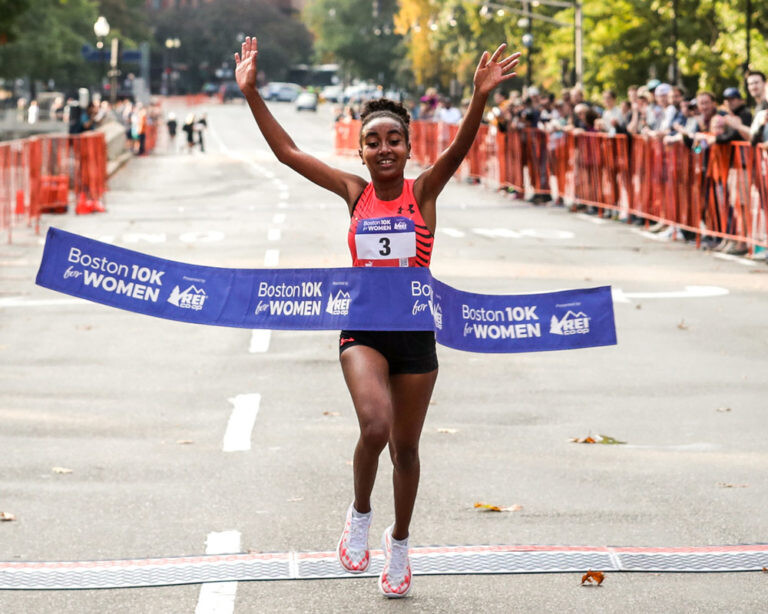
Organizers said large crowds of spectators are expected to view the race, which is one of only 22 in the United States, and 298 in the world, designated as a World Athletics Label Road Race by World Athletics, the international governing body for the sport of track and field.
Defending champion and Olympian Weini Kelati of Flagstaff, Arizona has entered the race. Kelati has won the MRR women’s title for the past three years, and a fourth victory this Thanksgiving will set the record for most consecutive wins by a female competitor. A 13-time All American runner at the University of New Mexico who finished eighth last summer in the 10,000 meters finals at the Paris Olympic Games, Kelati set the MRR women's course record of 22:55 in 2021 during her first Manchester appearance.
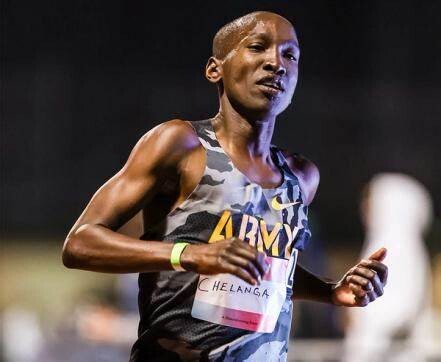
Kelati won the women's race in Manchester last November with a time of 23:21 and finished 19th in the overall competition. She will be joined in the elite field this Thanksgiving by Annie Rodenfels, the 2023 runner-up, and 2019 winner and marathon great Edna Kiplagat.
Former champions Ben Flanagan (2021) and Sam Chelanga (2013), Kenyan Olympian Edwin Kurgat, who placed seventh in the 5,000 meters finals at the Paris Olympics, and Andrew Colley, the fourth place-finisher in Manchester in 2022 with a time of 21:07, are expected to lead the men’s elite field.
As of early Monday morning, more than 9,000 runners had registered for this year's race.
(11/11/2024) ⚡AMPby Chris Dehnel
Manchester Road Race
The Manchester Road race is one of New England’s oldest and most popular road races. The 86th Manchester Road Race will be held on Thanksgiving Day. It starts and finishes on Main Street, in front of St. James Church. The Connecticut Sports Writers’ Alliance recently honored the Manchester Road Race. The CSWA, which is comprised of sports journalists and broadcasters...
more...Greeks Pitsolis and Noula win 41. Authentic Athens Marathon 2024
Charalambos Pitsolis finished first in the 41st Authentic Marathon, as he covered the 42,195 meters of the historic course in 2 hours, 18 minutes and 56 seconds.Panagiotis Karaiskos finished in second place (2:19:50) and Giorgos Benis third (2:21.40).
The first woman to finish was Stamatia Noula, who covered the distance in 2 hours, 40 minutes and 19 seconds, followed by Gloria Privilezio (2:41:58) and Panagiota Vlahaki (2:47:24).
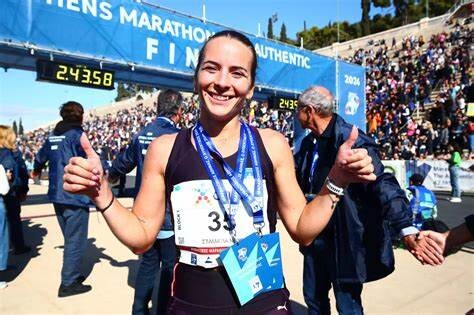
The 41st Authentic Athens Marathon (AMA2024) kicked off on Sunday, at 09:00, with 21,000 runners expected to cover the historic route from the Marathon to the Panathenaic Stadium.
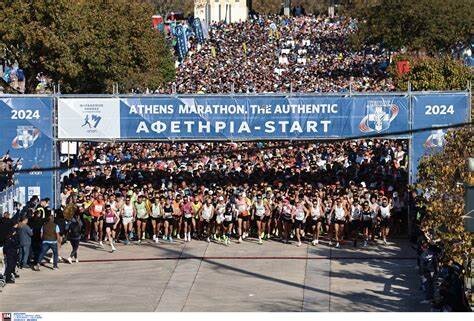
This year marks 128 years since the first marathon held during the revival of the Olympic Games.
The 41st “Athens Marathon, the Authentic” is a race inspired by the journey of the hoplite soldier who carried the message of victory to Athens after the Battle of Marathon. In the spring of 1896, in the first modern Games, athletes from five countries lined up at the Marathon bridge, at the starting point, to cross the track to the Panathenaic Stadium. The thread was first cut by the Greek athlete Spyros Louis, in a victory that went down in history symbolizing effort, overcoming physical and mental limits, as well as endurance. The presence of the experienced, also Greek runner, Harilaos Vasilakos, who finished second and together with Louis became the first two winners in the History of the Road Marathon was also important.
In its current form, it has been held since 1983, dedicated to the great Greek doctor, Balkan athlete and pacifist Grigoris Lambrakis.
(11/11/2024) ⚡AMPAthens Marathon
The Athens Classic (authentic) Marathon is an annual marathon road race held in Athens, Greece, normally in early November. The race attracted 43.000 competitors in 2015 of which 16.000 were for the 42.195 km course, both numbers being an all-time record for the event. The rest of the runners competed in the concurrent 5 and 10 kilometers road races and...
more...Yemane Haileselassie And Fentaye Belayneh Win Chilly Boston Half-Marathon
Fentaye Belayneh of Ethiopia and Yemane Haileselassie of Eritrea won this morning’s 22nd Boston Half-Marathon on a sunny and near-freezing morning here. Employing completely different tactics, Belayneh won in a pack-sprint to the finish in Franklin Park where the first three women finished in a span of just one second. Haileselassie won in a solo breakaway, dominating the final miles and winning by 15 seconds. Both athletes won $12,000 in prize money.
The women’s race got out slowly, and the first mile was completed in just 5:41, a comfortable training pace for athletes at this level. Britain’s Calli Hauger-Thackery was at the front. She said that she felt good taking the lead and wanted to work on some of her racing skills.

“I felt good doing that,” Hauger-Thackery told Race Results Weekly. “I was practicing not being set in a set pace. I’ve got to practice surging… not be afraid to put in a five minute mile here and there.”
The first real move happened just before 5-K where Ethiopia’s Mestawut Fikir, who was fifth at this race last year, put in a surge. The field responded immediately, and Kenyan’s Veronica Loleo and Daisy Jepkemei, and Ethiopians Melknat Wudu and Mebrat Gidey followed her single file. They passed through 5-K in 17:17 and four miles in 21:45. The downhill fourth mile was passed in a fast 5:05.

Fikir’s mini-surge only brought the lead pack down to 12. Although the second, five-kilometer segment was faster (16:27) it wasn’t enough to dwindle the field further. Fikir decided to go again just after the 10-K mark, and that move sent Hauger-Thackery and Australia’s Lauren Ryan several steps back. Kenya’s Mercy Chelangat was also having trouble holding on. Mile-8 went into the books at 5:10, and the serious racing had begun.
But after that, none of the women were keen to open up the race further, and the pace slowed enough that Chelangat managed to catch up. Remarkably, eight women were still together as they ran back to Franklin Park for the finish. Indeed, the race would not be decided until the final 200 meters when Belayneh, who had not led one step of the race, jumped the field and broke for the tape. She was ready for that kind of move.
“I prepared very well and I knew Boston was a good course,” Belayneh said with the help of a translator. “I prepared very well.”
Fikir and Senayet Getachew, another Ethiopian, were right on Belayneh’s heels as she bolted for the tape, but they just couldn’t catch their speedier rival. She broke the tape, arms raised with a huge smile, in 1:10:26. Fikir was given the same time, and Getachew was just one second back. Loleo got fourth in 1:10:29, and Wudu was fifth in 1:10:30. The first seven women finished in just a six-second span.
“At the end, I decided at the end,” Belayneh said when asked when she knew that the time was right for her final move. “It was a rough race, but I knew I could hold on and push. I had some little (energy) left over. I used that.”
Farther behind, Chelangat finished eighth in 1:10:43 and Hauger-Thackery was ninth in 1:10:49. The two women, both former NCAA stars who know each other from training in Flagstaff, embraced at the finish line.
“It was fun, it was good,” said Hauger-Thackery, who plans to run the California International Marathon in December with her husband, Nick. She added: “This was a good race to go for it, get the blood flowing.”
Unlike Belayneh, Haileselassie did not want to wait for the final sprint. In the ninth mile, he and Isaac Kipkemboi of Kenya and Haimro Alame of Israel pulled away from the field. Haileselassie was on the front, and kept pressing.
“Actually, when I lead in mile-nine I give them a little bit gap,” Haileselassie told Race Results Weekly. “I looked over my back, I had little bit gap. I know they can’t touch me.”
The Eritrean crossed to the finish line alone in 1:01:46. Kipkemboi was a clear second in 1:02:01, but Alame faded in the final miles and only finished sixth in 1:02:12. Taking the final podium position was Canadian miler Kieran Lumb, who was making his half-marathon debut. Lumb, who made the Paris Olympic 1500m semi-finals, was timed in 1:02:03. He was happy with his race, a good fitness test before the Canadian Cross Country Championships later this month, even if it hurt a little.
“It was hard,” said Lumb. “Honestly, it was pretty hard early on. I would say, like 20 minutes in, I didn’t feel amazing. I did not sleep well last night, either. I slept like four hours.”
Today’s event was the third and final race in the 2024 Boston Athletic Association’s Distance Medley which included the Boston 5-K on April 13 and the Boston 10-K on June 23. About 6500 runners finished today’s race.
(11/11/2024) ⚡AMPby David Monti ,
B.A.A. Half Marathon
Dana-Farber and the Jimmy Fund have partnered with the B.A.A. in the Half Marathon for 13 years as the race’s presenting sponsor. Through this relationship, team members have collectively raised more than $5 million to support groundbreaking cancer research, and enabled Dana-Farber scientists and clinicians to positively impact the lives of cancer patients around the world. Dana-Farber runners often participate...
more...Three ways to become a hill-running machine
Become a master of the up, down and in-between with these tips.
Let’s face it—hills are hard. While tackling hill workouts can be intimidating, training on inclines can dramatically improve your speed, strength and endurance. Learning to tackle both uphill and downhill sections smoothly and confidently can transform your runs and races. Here’s how to make hill workouts part of your routine—without burning out or risking injury.
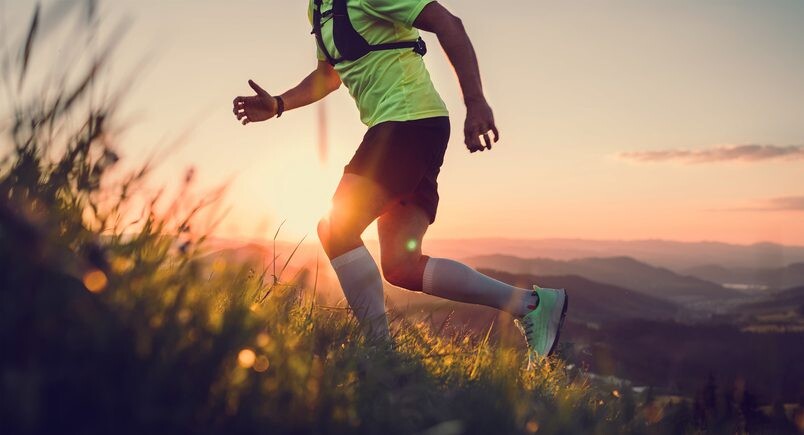
1.- Focus on the steady climb
For most hill workouts, aim to run uphill at a controlled, moderate pace. Going all-out might seem tempting, but studies show many runners start hills too fast, leaving them struggling to maintain their pace later. Choose a hill that takes around 10 minutes to climb, or set your treadmill incline high enough so that you feel the burn but are still able to keep a steady rhythm. Focus on matching the effort level you’d use on flat ground; if your breathing picks up too much, dial it back until you find a sustainable pace.
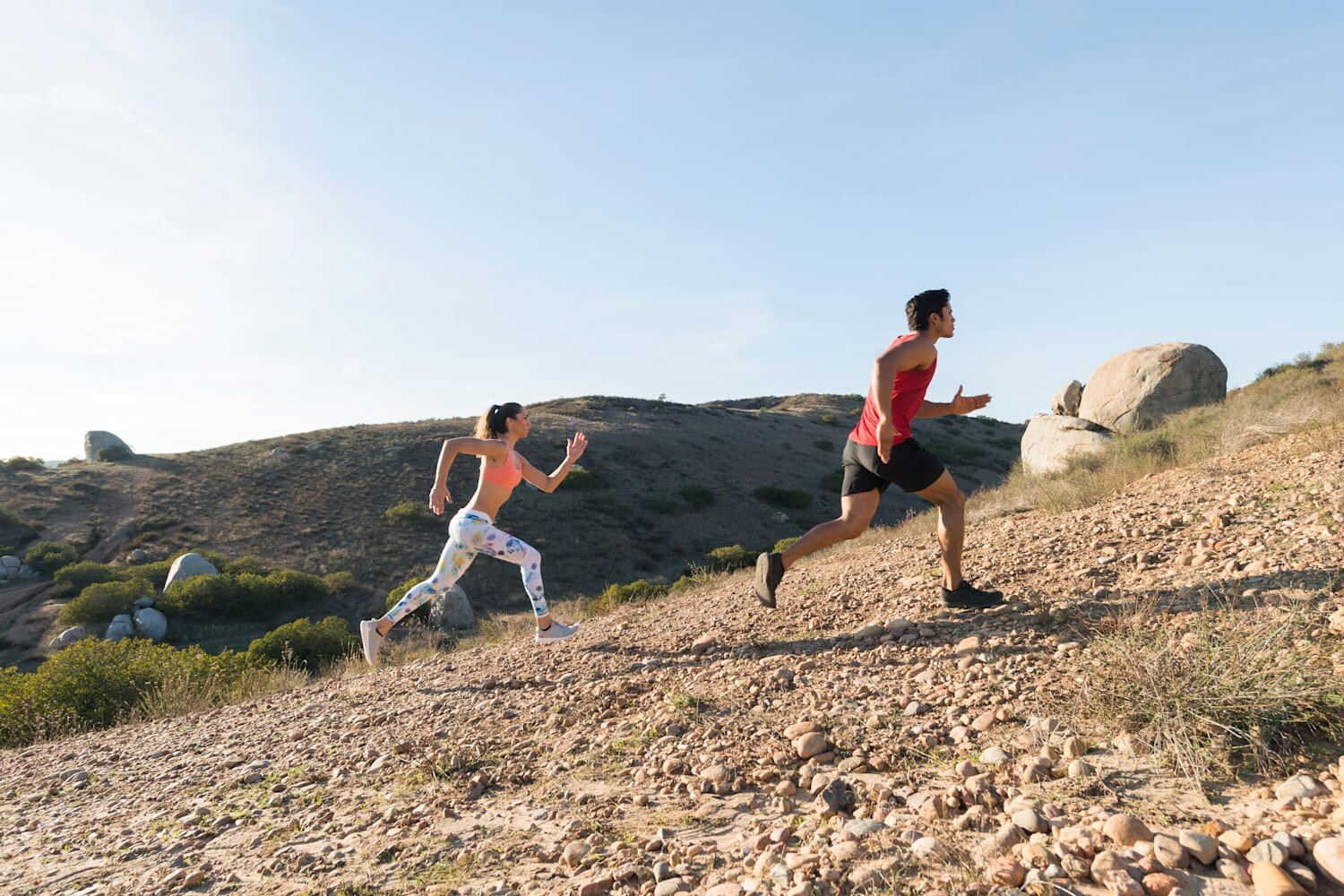
2.- Practice short, intense bursts
Adding short bursts of hard running uphill can build power and prepare you for more intense climbs. Find a shorter hill that takes less than a minute to summit, and challenge yourself to push hard to the top. Open up your stride, accelerate for 15 seconds at the peak, then recover as you jog back down. Repeat this five to 10 times to build endurance and speed, keeping each ascent strong and controlled.
3.- Embrace the downhill
Downhill running can be tricky, but incorporating it into your training builds confidence and control on descents; it triggers eccentric muscle contractions, where your muscles lengthen to support your body. This type of training boosts strength in your quads and hamstrings, enhances running efficiency (even on flat terrain) and improves stability and balance.
Try adding four to six strides on a gentle downhill slope after an easy run. Focus on shorter steps, keep your arms low for balance, and aim for a smooth, relaxed gait. If you find the downhill feels too easy, pick up the pace gradually, and as you improve, look for steeper hills to test your limits.
Mastering both uphill and downhill techniques will give you an edge, whether you’re training for a race or just building strength. With consistent practice, you’ll find the hills become your secret advantage.
(11/11/2024) ⚡AMPby Keeley Milne
Does Yoga Count as Strength Training?
If you’ve ever been sore after a yoga class or felt your muscles aching while holding Warrior 2, you’re familiar with the strengthening benefits of yoga. Although many of us associate yoga with primarily increasing flexibility and calming one’s chaotic thoughts, yoga does build muscle. But how effective is it? Does yoga count as strength training?
Does Yoga Count as Strength Training?

The short answer is, it depends.
According to the Centers for Disease Control and Prevention (CDC), adults should accumulate a minimum of 150 minutes of moderate-intensity aerobic exercise or 75 minutes of vigorous-intensity aerobic exercise per week plus at least two total-body strength training workouts per week. Strength training increases muscular strength and muscular endurance, which are two of the five components of health-related fitness.
Strength training, also known as resistance training, involves exercises that load your muscles. This not only builds muscle but increases bone density and helps stabilize joints to prevent injuries. Lifting weights or using resistance bands are two common options for strength training.
But they’re not necessarily the only options. Bodyweight training, in which you use your own weight as resistance, is another type of strength training. Some styles of yoga can be considered bodyweight training and can be ideal for anyone who either doesn’t have access to a gym or doesn’t care for or have time for traditional strength training exercises.
That said, there are two factors that largely influence the response to does yoga count as strength training.
1. Type of Yoga
Yoga is an extremely diverse practice with many different styles and ways to practice. Certain types of yoga and poses can strengthen muscles and potentially even build muscle.
2. Your Fitness Level
The other factor that plays a significant role in whether yoga functions as strengthening is your fitness level. Ultimately, it is more difficult to build muscle with yoga than it is with traditional resistance training using external implements such as dumbbells, barbells, kettlebells, resistance bands
In order to build muscle, you need to overload your muscles’ current capacity enough to induce some amount of damage to your muscle fibers. This microscopic damage triggers a process known as muscle protein synthesis, which repairs and rebuilds muscle and helps make your muscles stronger over time.
While it is possible to strengthen your muscles and potentially build muscle exclusively through bodyweight exercises, most people reach a plateau of body strength where some external resistance is necessary to continue strengthening and increasing muscle mass. In general, practicing yoga is not as effective as lifting weights.
However, anything that challenges you is strengthening your muscles. For example, chair yoga can be an efficient strength-training workout. Don’t compare yourself to others and meet your body where you’re at. Also, never push your body beyond your current fitness level or to the point of pain or extreme discomfort.
What Are the Best Types of Yoga for Strength Training?
Beginners often assume that classes for more experienced practitioners are inherently more difficult and better for strengthening than beginner classes. This isn’t necessarily true. These classes are often faster-paced and focus more on transitions between poses and less instruction from the teacher. This can increase the risk of injury for those who are still mastering the foundations and learning basic yoga poses. It can also shift the emphasis to the space in between the poses rather than the strengthening practice of holding the poses for a length of time.
It’s the style of yoga that plays a more important role in whether or not you will be strengthening your muscles or focusing on other aspects of fitness and health in your yoga class.
Some of the best types of yoga for muscle strength include:
Vinyasa yoga
Power yoga
(11/10/2024) ⚡AMPHow to Make Your Walk a Workout
Trying to get more steps in? Use these strategies to level up your activity.
IF YOU'RE JUST starting your fitness journey or looking for ways to be less sedentary outside of your sessions in the gym or runs on the road, the best move you can make is taking a step. We’re talking about walking, the simplest, lowest-impact, and most underrated activity that can improve your physical and mental health while burning hundreds of additional calories.

No form of exercise is more intuitive to the masses than walking. Still, it can be challenging to find the time to increase your step count in this desk-bound, couch-loving world. If you walk often without much thought, you might find that going back and forth along the same path at the same pace becomes boring.
To help you up your steps and keep your walks interesting, we consulted Michele Stanten, the former fitness director of Prevention magazine, a walking coach, and the author of three books about walking, including The Walking Solution: Get People Walking for Results.
Why Should You Do Walking Workouts?
Going for walks is an exercise that you can do anywhere with no equipment; all you need is a great pair of walking shoes (and maybe a podcast). Walking is free
Improved Mental Health
If you want to fortify your mental health, a 2020 study found that those who took regular walks reported better emotional health than those who didn’t. Born on TikTok, the silent walking trend, where you walk free of distractions, can be a great way to unplug, experience a sense of calm, and be alone with your thoughts.
Similarly, Stanten has noticed some anecdotal social and mental benefits to walking outside more frequently.
“I think there are benefits to getting out and seeing the world at a different pace. It’s a chance to meet your neighbors; I walk my dog, and I’ll end up meeting people that way,” she says. “Walking is a great way to have tough conversations because you're walking side by side…and doing something that makes your body relax and feel better. So if you're having to have a difficult conversation, you're putting yourself in the best position to do it—whether that's with your kid, a spouse, or a coworker.”
Weight Loss (and Maintenance)
Walking is also a powerful weight loss and maintenance tool. Going for walks increases your NEAT (non-exercise activity thermogenesis), which accounts for the calories you burn throughout the day outside of intentional exercise. Weight loss is a numbers game: You need to burn more calories than you consume. Eating in a caloric deficit is crucial, but increasing your NEAT means you’ll burn more calories throughout the day, so you’ll lose weight more quickly and/or consume more food while still losing weight. A study published in the Journal of Nutrition found that among a group of 82 dieters, those who added two-and-a-half hours of weekly walking to their routine lost significantly more weight than the diet-only group.
Better Health Markers
Weight loss aside, walking can improve your overall health and reduce your all-cause mortality rate. A study published in the British Journal of Sports Medicine 2024 observed data from the UK Biobank on over 70,000 participants. The researchers concluded that any number of steps over 2,200 was associated with lower mortality and cardiovascular disease risk and that a step count between 9,000 and 10,500 daily steps best counteracted high sedentary
COUNT YOUR STEPS
You may assume that walking outside is an automatic de-stressor, but that’s not always the case. “I like to count my steps because it prevents me from thinking about all the stuff I have to do or ruminating over an argument I had.”
Try counting your steps on your route. Start by doing 50 fast steps and 100 slower steps for the duration of your walk.
WALK + STRENGTH
Stanten suggests adding strength exercises into your walking routine.
Try this: Start a timer and begin walking. At the top of every other minute, stop and do a set of an exercise like pushups, squats, lunges, or resistance band presses for five to 10 reps. After your set, begin walking again and then do another exercise at the top of the fourth minute. Be sure to cycle through a handful of different exercises.
BEAT YOUR TIME
Another strategy Stanten suggests, especially if you’re new to walking for exercise, is to pick a set distance or route.
Gamify your outing by challenging yourself to a race. Each time you go, try to cover that distance more quickly than your last time through. You don’t need to push yourself too
Park That Car
Try walking to any location a mile or less away from your home—your local coffee shop, laundromat, or gym. Not every walk needs to be an intentional workout. Your entire day factors into your step count, and errands can add up to thousands of additional steps.
(11/10/2024) ⚡AMPCan’t Fit In Your Long Run? Here's What to Do
Coaches offer advice when you have to split up, cut short, or miss your long run.
Imagine you’re in the thick of marathon training and your 18-miler falls on the weekend you’re going to be on vacation with your family. You have a 9 a.m. tour planned so you figure you can get in a solid 10 miles beforehand, then log the remaining eight miles that afternoon when you get back to your hotel.

Or, maybe you have a niggling injury that starts bugging you around 13 miles in, so you call it at 13, then log the remaining five later that day.
Splitting up your long run within the same day is pretty much the same thing as logging continuous miles, right? Not so fast.
“The whole point of a long run is to get your body used to being on your feet for hours at a time, and that’s something that your body has to adapt to,” says Kara Dudley, an RRCA-certified running coach and founder of Rerouted Running. The good news is this means that slowing to a walk for a few seconds or minutes during a long run is totally okay. But this also means that you’re doing yourself a disservice if you don’t finish the job in one go.
Meg Takacs, CPT, a UESCA-certified running coach and founder of the Movement and Miles app, agrees that conquering the long run in one continuous go is important. “It’s going to be different physiologically if you do the 18 miles straight than it would be if you did nine in the morning, nine in the afternoon,” she says. “With marathon training, what matters most is not so much pace or mileage, but more so time on your feet and that gives you an opportunity to practice nutrition and hydration,” she adds.
These long-duration runs can also expose potential weaknesses, like an IT band issue that pops up two hours in, that wouldn’t be apparent in two shorter runs, Takacs says. Long runs allow you to “approach race day with a more knowledgeable idea of what your body’s going to be able to handle, or not,” she adds.
What’s more, your muscles might stiffen up between runs, putting you at greater risk of injury on the second run, Dudley says.
All of this said, sometimes you might need a less conventional approach to the long run. Here, Dudley and Takacs share some alternatives to consider before splitting it up.
If there’s a week or two that it’s truly not possible to get in your long run in one go, Dudley believes you’d be better off just going as long as you can in one run, rather than trying to tack on additional potentially junky miles later in the day. Keep in mind that missing one long run isn’t going to derail your training cycle.
If you have aches and pains…finish on the bike.
As always, see your doctor or physical therapist if you’re dealing with pain or an injury for personalized advice. So long as you have the all-clear, and you’re dealing with something that comes and goes and tends to flare up only after you reach a certain mileage, Dudley has a suggested workaround for you: Log as many miles as you can, then jump on the bike to finish out the rest of the time that would have been in that run.
For example, if you run 10-minute miles and were supposed to run an 18-miler, but start to feel achey at 13, you’d be on the bike for 50 minutes after your run. This strategy still gets you the aerobic benefit
One more thing: If you want to split up other easy runs within your week (say, a midweek easy eight-miler becomes two four-milers), that would likely have less of a negative effect than splitting up your weekly long run, Takacs says. That’s because you’ll still accumulate weekly mileage and time on your feet, without taking away the advantages you gain from your weekend long run when you want to practice going extra long like you will on race day.
(11/10/2024) ⚡AMPHow Tempo Run Workouts Can Make You Faster
You won't become a better runner by just staying at the same pace. Here's how to ramp up your training. WHEN YOU FIRST get into running, your routine probably looks something like this: Lace up the best running shoes you own, hit a quick warmup, and then hit the road for a set time, distance, or route. Simply running a few times a week and intuitively speeding up and slowing down might be enough to improve your fitness—at least at first. Once you decide to graduate from a trot around your neighborhood into the world of more serious training, you’ll need to approach your workouts with more intention and specificity.
One common training technique used by hobbyists and world-class runners alike is the tempo run, a protocol where you run at a near-maximal intensity. Using these workouts you’ll increase muscular and cardiovascular endurance, learn to maintain running mechanics at a faster clip, and teach your body to cycle through lactic acid (which is what causes that burning sensation) more efficiently. We tapped Jes Woods, a Nike Running coach and the Head Trail & Ultra Coach at the Brooklyn Track Club, to school you on all things tempo runs so you can better understand how to implement tempo runs into your running routine. We can’t say you’ll be thanking us (at least mid-run)—but you may just become the fastest guy in your local run club. What Is a Tempo Run?
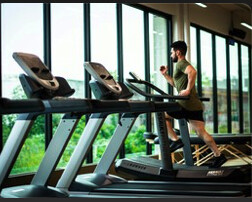
According to Woods, a tempo run is a hard but controlled pace that can be run as intervals, or a steady run spanning one to 10 miles meant to make you a more efficient runner. Tempo runs should feel, “comfortably hard," according to Woods. "If your running buddy asked you a question while running your tempo run, you could answer them if you had to, but it would be pretty annoying.”
Woods says tempo runs can have a variety of loose definitions but, put most simply, they’re threshold runs meant to improve your lactate threshold. “That is, the tipping point between aerobic running (your body has sufficient oxygen) and anaerobic running (your body does not have sufficient oxygen to create the energy you are demanding)," she says. “You want to run at that tipping point without crossing over.”
In short: A tempo run is not easy, and that’s by design. This type of workout is a training tool that pushes you to your limits to increase your cardiovascular capacity, help you acclimate to a faster race day speed, and improve your body’s ability to clear lactate.
How to Do a Tempo Run
Tempo runs areStretches Woods likes: Knee hugs, quad pulls, hamstring scoops, table toppers, lateral lunges and air squats. Do five reps on each side of your body per movement.
Warmup Jog
Never jump straight into your tempo work, even if you've done some dynamic stretching.
“Before any speed run, whether it's fast intervals around the track or hill repeats in the park, an easy jog warm up is mission critical,” says Woods. Run for 10 to 15 minutes at a conversational pace before diving into the workout.
Hit the Road
The classic tempo run is straightforward enough. After you warm up, you’ll aim to run for 20 to 30 minutes at your calculated pace. If you’re new to tempo workouts or at the beginning of a new training cycle, Woods suggests running at your tempo pace in intervals to work up to a longer unbroken run. Here are two interval methods:
Straight-Up Intervals
“Start with five 5-minute intervals at your tempo run pace, with 90 second breaks after each,” says Woods. “That’s 25 minutes of tempo work, but broken into smaller bite-sized chunks. You can gradually increase those tempo intervals over time until you’re holding your tempo pace for“Improving your tempo pace or improving your lactate threshold is like improving your miles per gallon on your car,” Woods says. “You want to be able to travel (run) farther on the same tank of gas (the same energy).”
Any form of running is going to improve your VO2 max, which is a measure of how much oxygen you can utilize during intense exercise. Naturally, a tempo run, an intentionally strenuous running workout, will improve your VO2 max and, therefore, your ability to run faster for longer.
More specifically, your heart rate should be beating between 80 to 90 percent of your max (putting you in what are considered heart rate Zones 3 and 4), which are associated with improving your anaerobic and aerobic capacities. Having endurance in both zones is imperative for running at a high intensity.
Improved Lactate Threshold
Once you enter Zone 4 in your workout, which you’re all but guaranteed to do during a hard run or race, your body taps into your anaerobic system, where it utilizes glycogen and ATP (adenosine triphosphate) for energy. Lactic acid, a byproduct of that process, will begin to accumulate inside your muscles—and it's responsible for the burning sensation
(11/10/2024) ⚡AMPCourtney Olsen Sets 50-Mile World Record of 5:31:56 at 2024 Tunnel Hill 50 Mile
American Courtney Olsen continues to make her mark on ultrarunning history, this time provisionally setting a women’s 50-mile world record of 5:31:56 at the Tunnel Hill 50 Mile in Vienna, Illinois, on November 9, 2024.
The previous record of 5:40:18 was set in 1991 by the iconic American ultrarunner Ann Trason. Olsen’s effort resets the world record by 8 minutes and 22 seconds.
Her performance represents an average pace of 6:39 per mile (4:08 per kilometer) over 50 miles (80.47 kilometers). Wow!
The Tunnel Hill 50 Mile is run as a double out-and-back on the Tunnel Hill State Trail, a rails-to-trails trail composed mostly of dirt. The event and trail are named after the tunnel through which the trail passes and was the location of a new men’s 50-mile world record in 2023. It is a USA Track & Field-certified course, and the event has an International Association of Ultrarunners (IAU) Gold Label. The IAU governs the 50-mile distance for world records, and will be responsible for ratifying the record.
The 37-year-old hails from Bellingham, Washington, and appears to be amidst a big year in racing. Earlier in 2024, she took third at the Comrades Marathon. She’s also on Team USA, set to compete at the IAU 100-Kilometer World Championships in December, 2024. In 2022, the last time the 100k world champs took place, Olsen finished fourth and ran 7 hours and 15 minutes. Her marathon PR appears to be 2:36:21.
(11/09/2024) ⚡AMPGreek runner offers $1,500 reward for stolen marathon costume
One man's tradition of racing the Athens Marathon could be up in flames after his costume was stolen just days before Sunday's race.
For seven consecutive years, Greek marathoner Kostas Hatzis has travelled to Athens from his home in the Netherlands to take part in the Athens Marathon. On Wednesday, his plans to participate in the 41st edition of the race (set for Sunday) came to a halt when his suitcase, containing his traditional Greek costume, matching shoes and Olympic Truce flag, was stolen from his vehicle. He now offers a reward of €1,000 (CAD $1,491) for anyone who returns his belongings.
“My world collapsed,” Hatzis wrote on Facebook. “My traditional Greek costume and matching shoes were snatched from me. My Olympic Truce flag, my running outfits and all I need for one week. I did not come all the way from my home in NL to eat, drink and sleep in Athens.”Hatzis’s traditional Greek costume is the distinctive uniform of Greek soldiers called Tsoliades–right down to the fustanella (a kilt-like garment) and the tsarouchis (flat shoes with pompoms). The Olympic Truce flag bears a drove with a traditional Olympic flame, symbolizing peace and human spirit.
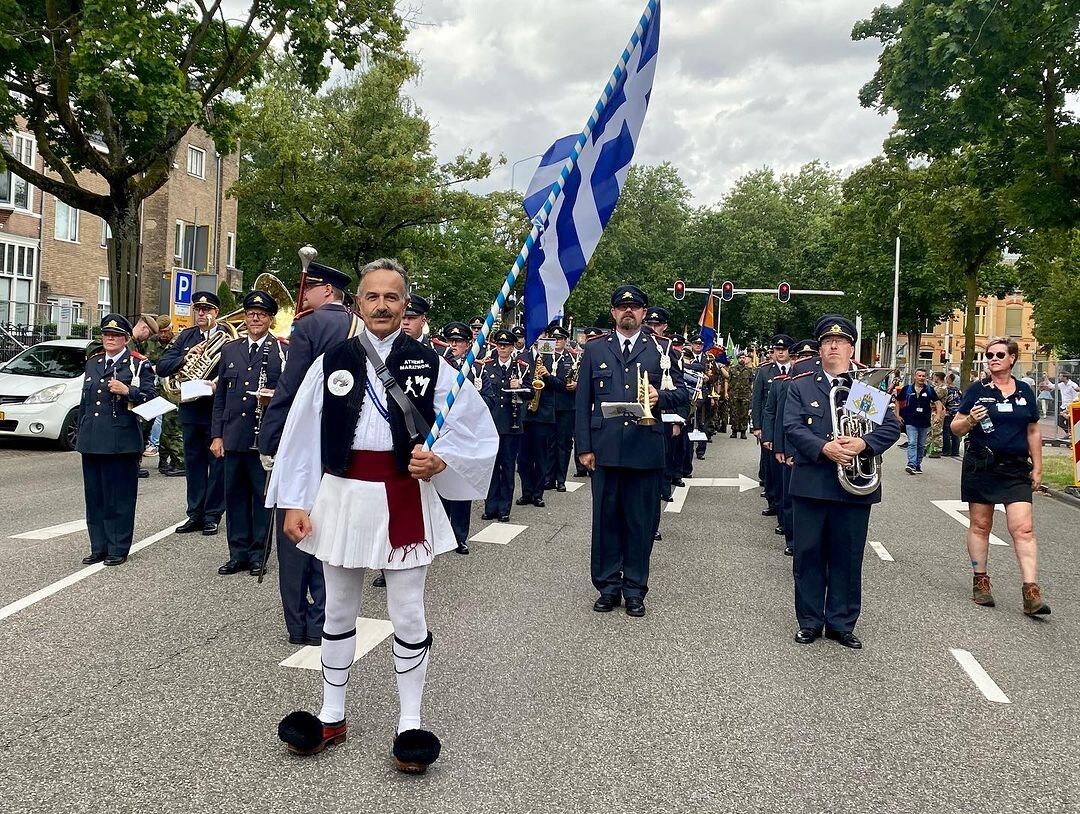
The runner, who calls himself an “International Marathon Messenger“, runs to promote the Ancient Greek tradition of Olympic Truce, or Ekecheiria. The tradition acknowledges the signing of a treaty between three kings to allow safe participation in the Olympic Games for individuals from the Greek city-states–Elis, Pisa and Sparta–despite ongoing conflicts.
In October, Hatzis took part in passing the marathon flame at the Kosice Peace Marathon in Košice, Slovakia, to honour the 100th edition of Europe’s oldest marathon.
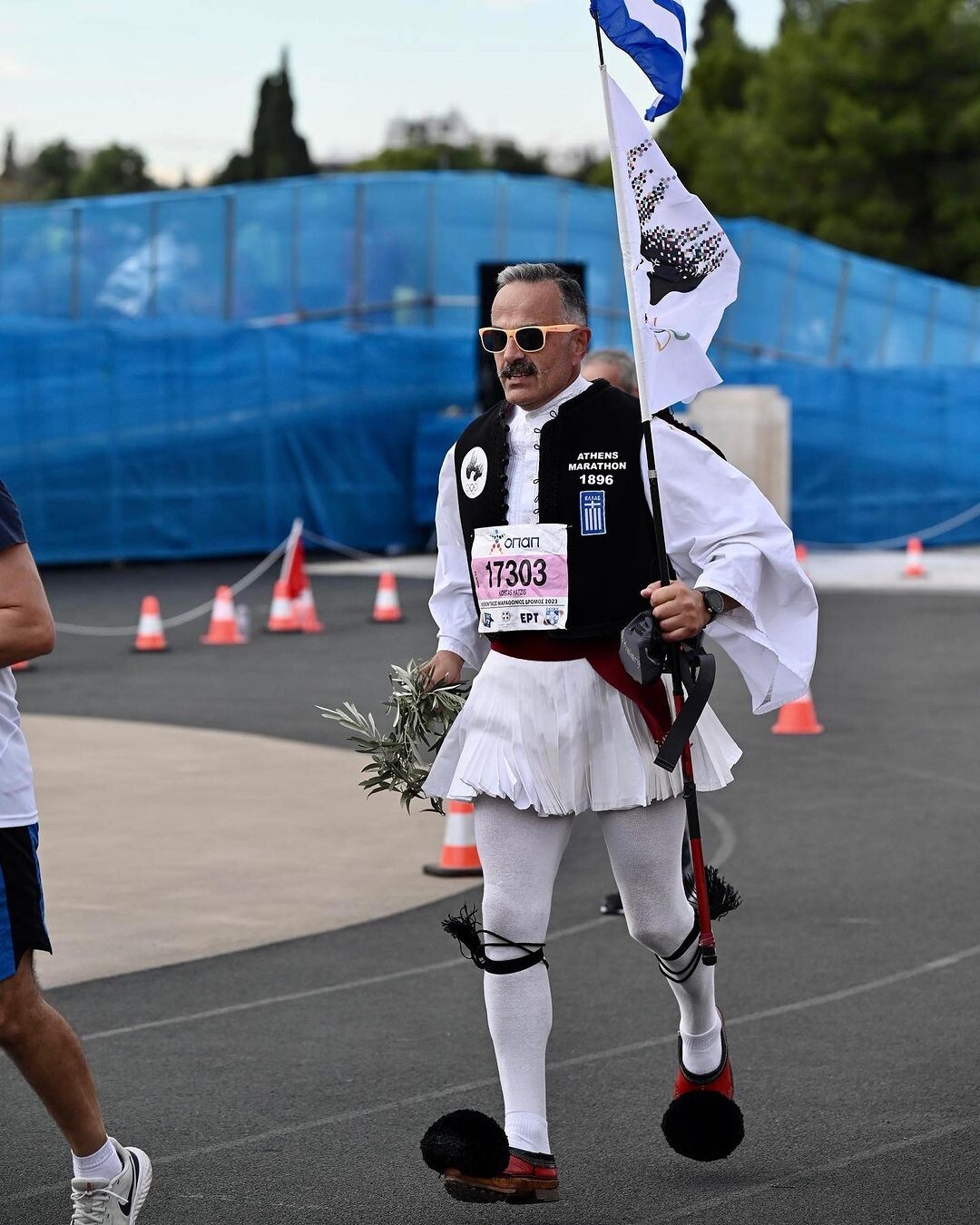
Sunday’s race was set to mark Hatzis’s eighth consecutive time competing in the Athens Marathon; his fastest time for the course is 5:17:26, which he ran in 2016. The runner has participated in countless other marathons since 2012, including the Barcelona Marathon, Paris Marathon, TCS Amsterdam Marathon and the HAJ Hannover Marathon.
(11/09/2024) ⚡AMPby Cameron Ormond
Athens Marathon
The Athens Classic (authentic) Marathon is an annual marathon road race held in Athens, Greece, normally in early November. The race attracted 43.000 competitors in 2015 of which 16.000 were for the 42.195 km course, both numbers being an all-time record for the event. The rest of the runners competed in the concurrent 5 and 10 kilometers road races and...
more...Asbel Kiprop: Fame, loss and the redemptive journey of a running legend
After a social media post where Asbel Kiprop blamed a woman for wrecking his family and career, friends and mentors intervened helping him refocus seek support and rebuild his life.
A man is often judged by how he faces his battles whether they are on the field, in the boardroom or within himself.
For Asbel Kiprop, Olympic gold medalist and three-time world champion, life was initially a straight sprint to greatness—a journey of triumphs, gold medals and untold success.

However, when the cheers faded, Kiprop found himself confronted by challenges far more daunting than any he had faced on the track.
In 2018, Kiprop's world came crashing down with a doping scandal that shocked the athletics world.

His name, once revered, was suddenly associated with disgrace and scandal as the Athletics Integrity Unit (AIU) imposed a four-year ban after a positive test for the blood-boosting drug EPO.
“I did not know what he was talking about. He said media was reporting that I had been banned for doping. I developed a running stomach. I was shaking…speechless...My heart felt like someone had plucked it," he recalled in a past interview with The Standard.
The news broke him in a way he could never have anticipated, triggering a spiral of sleepless nights, isolation and bitterness as he fought to reclaim his reputation.
The societal expectations placed on Kiprop, like many men, shaped his journey.
As a world-class athlete with a clean record and a respected status in his community the fall from grace was brutal.
Despite his accomplishments, he suddenly felt alone, misunderstood and scrutinized by a world that once cheered him on.
“People I thought knew me were not standing with me. I got very bitter. I wanted someone who would understand my pain; of how I had trained so hard and now I am banned,” he confesses.
It is a sentiment many men can resonate with—the feeling of isolation when life’s challenges intensify and the difficulty of finding true allies in a world where showing vulnerability is often seen as weakness.
In his darkest moments, Kiprop was left grappling not only with the scandal but also with the cost of fame. His career had come with privileges: financial success, fame and adulation from fans.
Yet, fame’s allure had drawn him into a whirlwind of distractions and poor choices, leaving him exposed to criticisms that ranged from accusations of promiscuity to allegations of reckless behavior.
Kiprop admits, “I made some mistakes in life, and I have always taken the consequences.”
For years, he found solace in the familiar: rigorous training, the support of fans, and, in his downtime, friendships that seemed unbreakable. But the scandal unveiled a new reality.
Friendships dissolved, his reputation crumbled and he found himself wrestling with 'depression'.
His struggles, like those of many men, were not immediately visible to the public eye and Kiprop’s cry for help went unheard until a social media post alarmed his followers.
In a raw moment, he hinted at desperation, expressing his pain in a message that prompted intervention from senior officials.
For Kiprop, it was a call to address his pain—a step many men struggle to take.
Now 35, Kiprop is working to regain his place in Kenyan athletics, setting his sights on the World Athletics Championships in 2025.
Kiprop’s message for men facing setbacks in their careers, relationships, or mental well-being is clear: a setback does not define one’s worth. Instead, it is a test of character and resolve.
“I want to start small and win for my employers, the Kenya Police, who diligently stood by me all the four years,” he says in an interview with RFI.
“It is going to be a hard time but… I want to post good times and progressively go up the ladder and qualify to represent Kenya again.”
This season, Kiprop returned to competition at the National Police Service Track and Field Championships, where he won his 1500m heat—a modest yet meaningful step in his quest for redemption.
His performance signals a new beginning for a man determined to rise again not as the prodigious young star he once was but as a seasoned athlete bearing the lessons of both victory and defeat.
(11/09/2024) ⚡AMPby Festus Chuma
Have you been victimized by this TikTok running trend?
Couples and friends have been eager to jokingly roast one another on TikTok by taking part in the viral running trend called #suspectchallenge. In the videos, participants take turns filming while running, chasing down their chosen “suspect” and pretending to issue a police dispatch report, complete with humorous insults and jabs.
The founder of the trend, Lauren Case, is a California video creator with more than one million TikTok followers. Her video gained more than 35 million views.
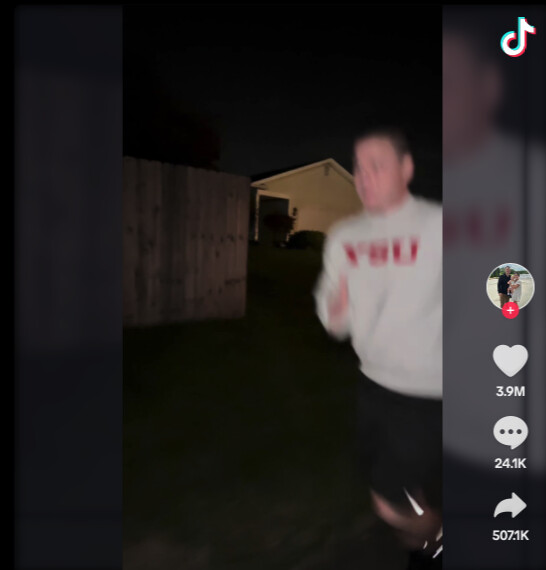

After growing in popularity in late October, the trend has already seen 100,000+ videos using hashtags #suspectchallenge or #suspect. Participants range from well-known content creators with millions of followers to grandparents. The playful roasting captures the unique connections within each relationship, with light-hearted inside jokes.
The challenge has also proven to be a test of fitness; some participants have no problem holding up the conversation while running, while others immediately indicate some difficulty catching their breath, even resorting to the use of an inhaler.
The trend exposes the relative lack of fitness of the non-runners, presenting an opportunity to call one another out for poor running form. “Why are you running like that?” one user said to their partner in their video.
(11/09/2024) ⚡AMPCompression socks might help your race-day tummy troubles
Compression socks have sprinted from the clinic to the track, with pro runners like Sifan Hassan and Eliud Kipchoge touting their recovery and performance benefits. Are they really more than just a fashion trend? Here’s the scoop on what compression socks deliver, and where the hype might be outpacing the science.
Better blood flow and swelling control
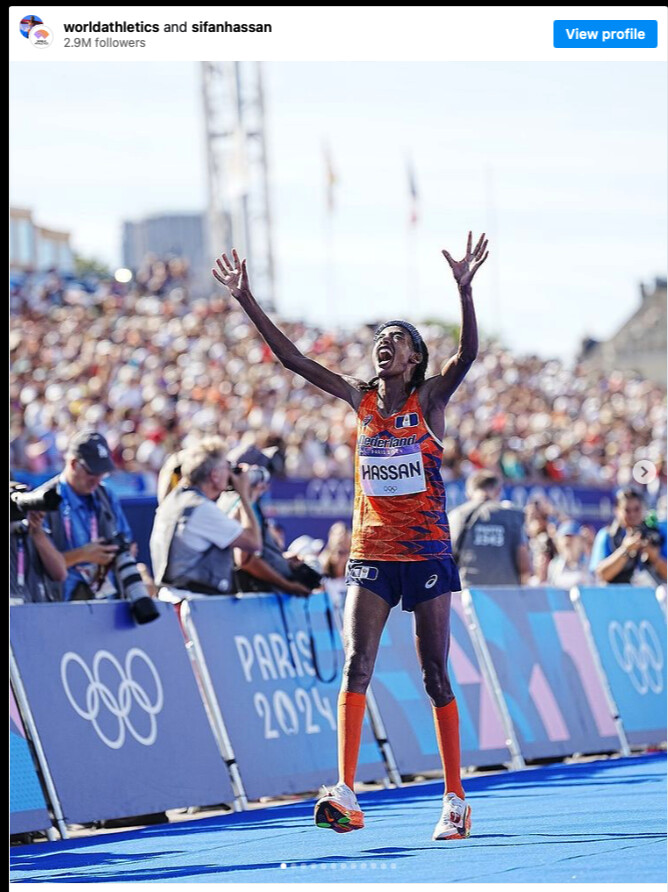
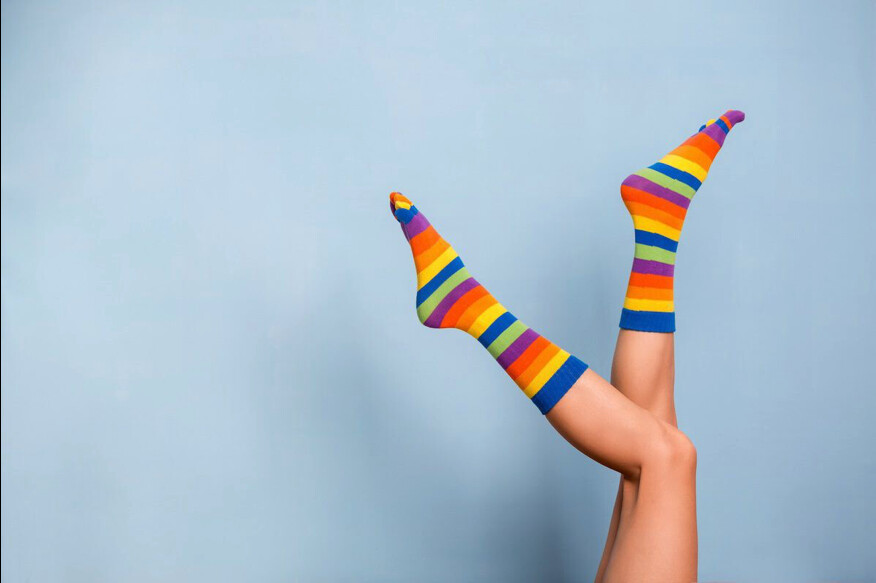
Studies suggest that compression socks really do promote blood circulation and reduce swelling in the legs. Whether you’re logging miles on the trail or pounding the pavement, compression can help prevent that dreaded heavy-leg feeling by keeping blood moving efficiently back to the heart, as recently reported in SELF magazine. Dr. Leada Malek, a San Fransisco-based sports physical therapist, notes that compression socks are particularly useful for runners dealing with recurring swelling or minor injuries like ankle sprains. By reducing fluid buildup, the socks help maintain freedom of movement, letting you run without the drag of swollen, tired legs.
Compression socks can also be helpful for runners who experience postural dizziness after intense effort. For runners with conditions like postural orthostatic tachycardia syndrome (POTS), which can cause lightheadedness when shifting from sitting to standing, the socks help push blood back to the brain and heart.
A calmer stomach on race day
If you’ve ever experienced a queasy stomach during a race, compression socks might help. Running can decrease blood flow to your gut, which leads to discomfort or even nausea. A study in the Journal of Strength and Conditioning Research suggests that compression socks can direct more blood from your legs to your GI tract, helping reduce digestive distress. By maintaining better blood circulation, you may find yourself more comfortable mid-race, with fewer interruptions from an unhappy stomach.
A boost for post-workout recovery
The role of compression socks in post-workout recovery is widely debated. Some research suggests that wearing compression garments can reduce markers for muscle damage. While the effects vary, many athletes report feeling less sore after wearing them. Even if muscle repair benefits are unclear, the stable, “hugging” sensation of compression might help you feel ready to move your body sooner.
Compression socks for travel and long races
Planning to run a far-off race? Compression socks might help keep you healthy by reducing your risk of deep vein thrombosis (DVT) on long flights. According to research, wearing compression socks during prolonged sitting can prevent blood clots by keeping blood flowing in the legs.
Research also suggests that wearing them during a race might reduce DVT risk for the flight home, as the pressure supports blood flow and circulation.
The takeaway
Compression socks may not shave seconds off your race time, but they do offer a variety of benefits, from easing leg swelling to calming a queasy stomach. And if they make you feel more confident on race day, that extra motivation could be all you need to push harder.
(11/09/2024) ⚡AMPby Running Magazine
Kenyans take action against gender-based violence
In the wake of the murders of Agnes Tirop and Rebecca Cheptegei by their intimate partners, Athletics Kenya launched a movement on Monday to fight back against gender-based violence (GBV). A new hotline was unveiled for athletes to confidentially report cases of GBV, while an engagement campaign moves across Kenya to encourage athletes to speak up and to raise awareness for financial exploitation.
Tirop, World Championships 10,000 bronze medalist, was murdered by her husband in 2021, giving rise to the creation of Tirop’s Angels, an organization fighting GBV. High-profile female athletes, however, continued to fall victim to men; in September 2024, Cheptegei, who ran the Paris 2024 marathon, died after reportedly being set on fire by her ex-partner.

Working in conjunction with the National Government Affirmative Action Fund (NGAAF), Athletics Kenya addresses how lack of communication has been a significant obstacle in the fight against GBV. The hotline will allow athletes to call for help when in danger of GBV, while a chatbot will enable them send an SOS.
“We will fight it the same way we are doing with doping.”
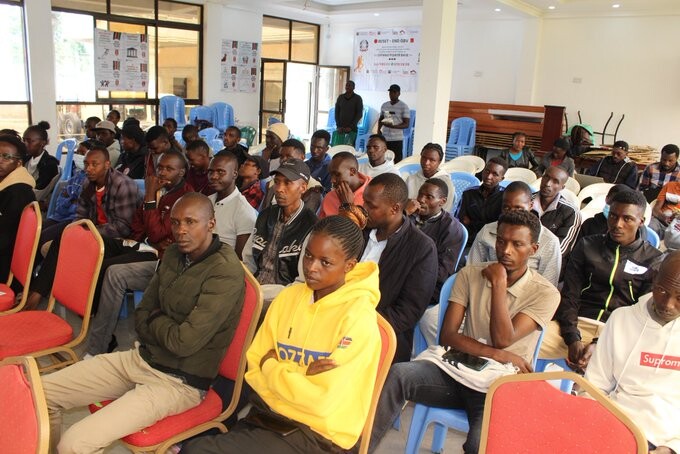
“GBV is totally unacceptable in our society as well as in athletics,” Athletic Kenya’s Chief Administrative Officer Susan Kamau said. “As Athletics Kenya, we are totally committed to eradicating GBV and we will fight it the same way we are doing with doping.” In 2023, the Kenyan government committed to rebuilding their anti-doping program and increased the frequency of random drug testing. Athletics Kenya hopes that a safe and confidential channel for reporting GBV incidents will encourage women and girls to speak up.
The awareness campaign, already in motion, has been moving across the country all week, hosting forums at athletics camps. The program allows runners to share their stories and suggestions to stop GBV, and features female leaders as speakers to educate athletes.
Raising awareness of financial exploitation, as well as GBV
High-profile athletes, including two-time 800m world champion and 2007 Olympic silver medallist, Janeth Jepkosgei, have also highlighted the connection between financial exploitation of athletes and GBV. “Be wary of predators who pretend to be coaches and get into a relationship with young athletes who are the same age as their daughters,” Jepkosgei said, speaking at Thursday’s forum in Kapsabet, Kenya.
Speaking at an earlier event, Lucy Kabuu, 2006 Commonwealth Games champion and two-time Olympian, emphasized the same message. Recently, the athlete has been defending herself in court against her ex-husband and coach, who is trying to claim her earnings. “When you start running and making money, be careful not to fall into the trap of unscrupulous coaches and managers,” Kabuu said. “You should buy properties in your name and not in any other person’s name. Get a financial adviser to help you invest wisely. Learn from me and what I am going through; do not wait to learn from another person.”
1997 World 10,000m champion Sally Barsosio echoed Kabul’s advice. Other successful runners that are actively raising awareness for GBV include seven-time World Marathon Major champion Mary Keitany, six-time World Marathon Major champion, two-time world champion and two-time Olympic silver medallist Catherine Ndereba, 2013 world champion, Diamond League champion and Olympic medallist Milcah Chemos and 2021 TCS New York City Marathon silver medallist, Olympian and founder of Tirop’s Angels, Viola Cheptoo.
(11/08/2024) ⚡AMPby Cameron Ormond
Olympic silver medalist Koki Ikeda suspended for doping
The 26-year-old Japanese race walker Koki Ikeda, one of the world's top competitors in race walking and a leading figure in his national team, has been provisionally suspended this week by the Athletics Integrity Unit (AIU), which has detected unusual data in his biological passport.
As required by World Athletics protocol, this preventive measure is applied in cases where irregular figures are found, even when no direct violation has occurred in an anti-doping test that identifies a specific banned substance. Ikeda will now need to account for the unusual data in his biological passport to avoid a definitive suspension.
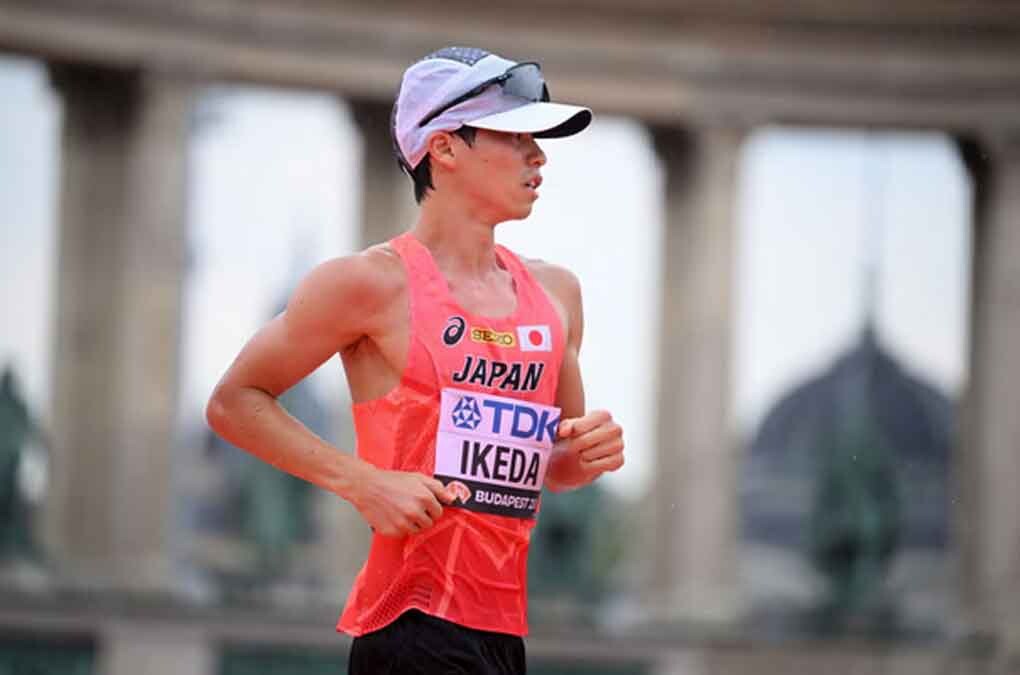
The Associated Press reported that Ikeda received the provisional ban for "suspected blood doping," quoting the AIU, which is based in Monaco. The anti-doping body stated on Friday that the issue relates to the "use of a prohibited substance/method." The biological passport can indicate markers of doping over time without an athlete testing positive for a banned substance. Investigators have not provided a timetable for the disciplinary case.
The race walker and the Japanese federation received this unfortunate news ahead of hosting their World Race Walking Championships in Tokyo in September 2025. Ikeda stated on Saturday that he is "completely bewildered" and pleaded his innocence. In a statement released to Japanese media, he expressed his intention to fight to clear his name. "For reasons that I know absolutely nothing about, I may not be able to compete in my next race, and I am utterly bewildered," he remarked.
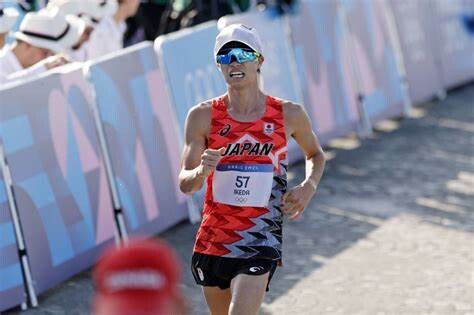
He also mentioned that he would "strive for the truth to come to light and for a fair result." "From here on, I would be very grateful for your understanding and support," he added. The disciplinary proceedings are now underway.
Ikeda was the Olympic silver medallist at the Tokyo 2020 Games and took silver at the 2022 World Championships in Oregon. This season, he achieved a second-place finish in the mixed relays at the World Team Championships in Antalya in April, as well as winning gold at the Japanese National Championships, which earned him direct qualification for Paris 2024, where he finished seventh in the 20-kilometre race. He concluded the year in October with a bronze medal in the 10,000-metre event in Yamaguchi.
(11/08/2024) ⚡AMPby Javier Carro
Ontario runner signs pro contract with Under Armour
On Thursday, Rosseau, Ont., native Gracelyn Larkin announced her contract with Under Armour’s pro running club, Dark Sky Distance, which is based in Flagstaff, Ariz. The 5,000m Canadian outdoor champion from 2022 is a recent graduate of Northern Arizona University (NAU), and formerly competed for the University of New Mexico (UNM) from 2019-2023.
Already located in Flagstaff following her graduation, Larkin will continue training at altitude under coaches Shayla Houlihan and Stephen Haas. The Canadian will be among former UNM teammate and Olympian Weini Kelati and 2022 New York City Marathon champion Sharon Lokedi, who also represent Under Armour.
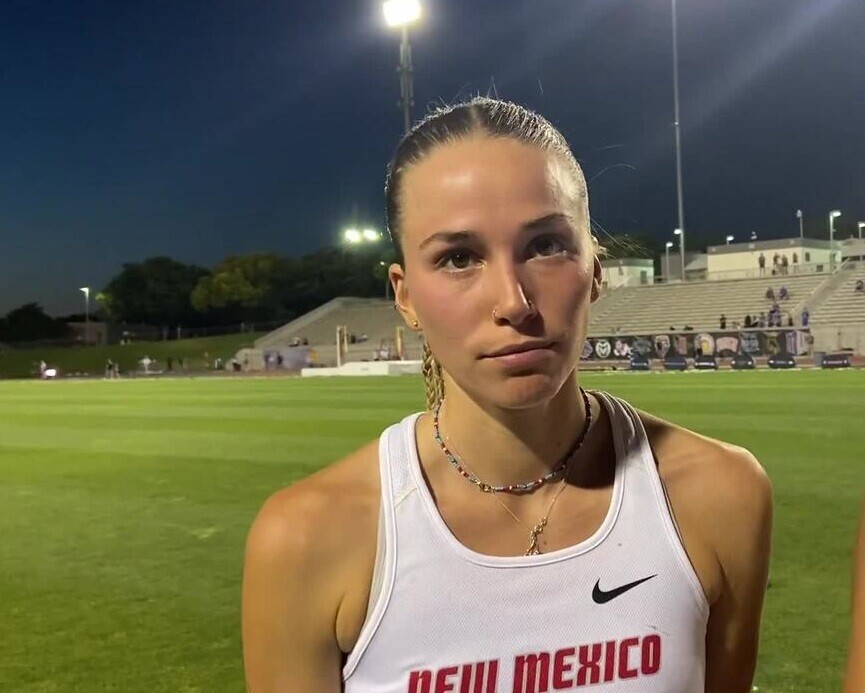
The 23-year-old boasts personal bests of 15:23.63 in the 5,000m and 32:32.61 in the 10,000m. A successful collegiate career saw Larkin earn All-American status seven times, before she went on to represent Canada in the 5,000m at the 2022 World Championships in Eugene, Ore.

Over the summer, Larkin chased a spot on the Canadian Olympic team. At the Harry Jerome Classic 5,000m in Burnaby, B.C., in June, she clocked 15:25.83 to claim fifth place in a quick race; the time was just two seconds off her personal best. Later that month, Larkin competed at the Canadian Olympic Track and Field Trials in Montreal, placing fourth in the women’s 5,000m final with a time of 15:36.41. The UNM graduate was less than three seconds behind the winner, Gabriela Debues-Stafford. Despite strong efforts, Larkin fell short of qualifying for Paris 2024.
“I’m very grateful to be joining such an amazing group of hard-working individuals,” Larkin said in the announcement post on Instagram. “Working with Under Armour is an amazing opportunity and I can’t wait to represent them over the upcoming years. I look forward to learning from my teammates and coaches while I develop as a professional athlete!”
(11/08/2024) ⚡AMPby Cameron Ormond
You’ve finished your marathon—now what?
Completing a marathon is no small feat. Whether you hit a personal best or navigated through a challenging day on the course, post-race recovery is key to ensuring you’re ready for your next running chapter. Montana DePasquale, a running coach based in Rhode Island, uses a science-based approach to guide her athletes. She has some essential tips to help you maximize recovery and get back on track.
Navigating the post-marathon blues
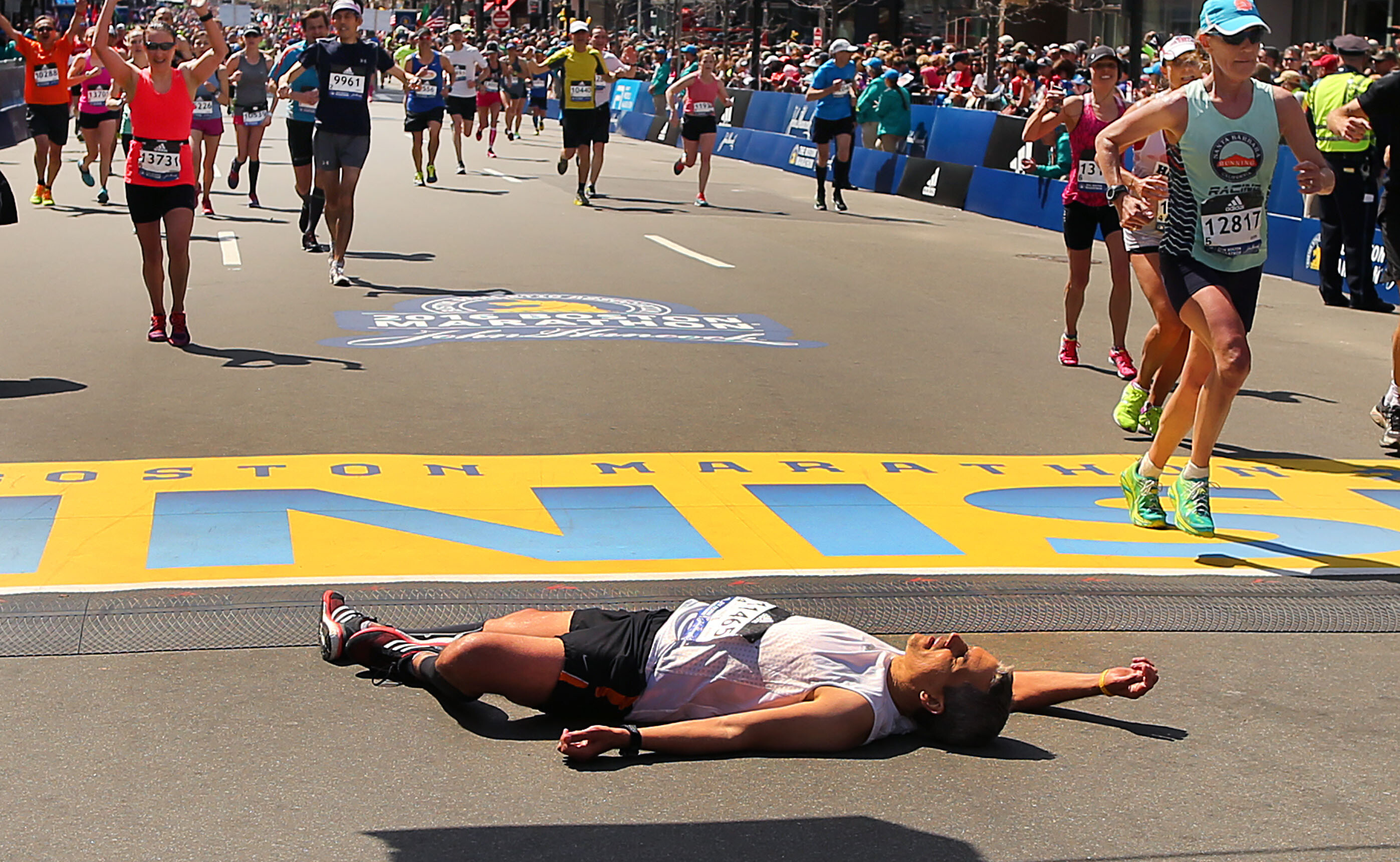
DePasquale notes that after months of structured training, it’s common for runners to feel a bit adrift once race day has come and gone. Without the usual daily training schedule, some runners even experience post-race blues. To keep the momentum going, she encourages her athletes to have a clear, structured plan for the first four weeks after their marathons. Knowing what to expect—and having recovery milestones—can ease that post-race transition. Note: if the post-race blues are feeling overwhelming or lasting longer than a week or two, take the time to check-in with your favourite medical professional. Self-care is an important part of recovery.
Reverse taper: easing back into running
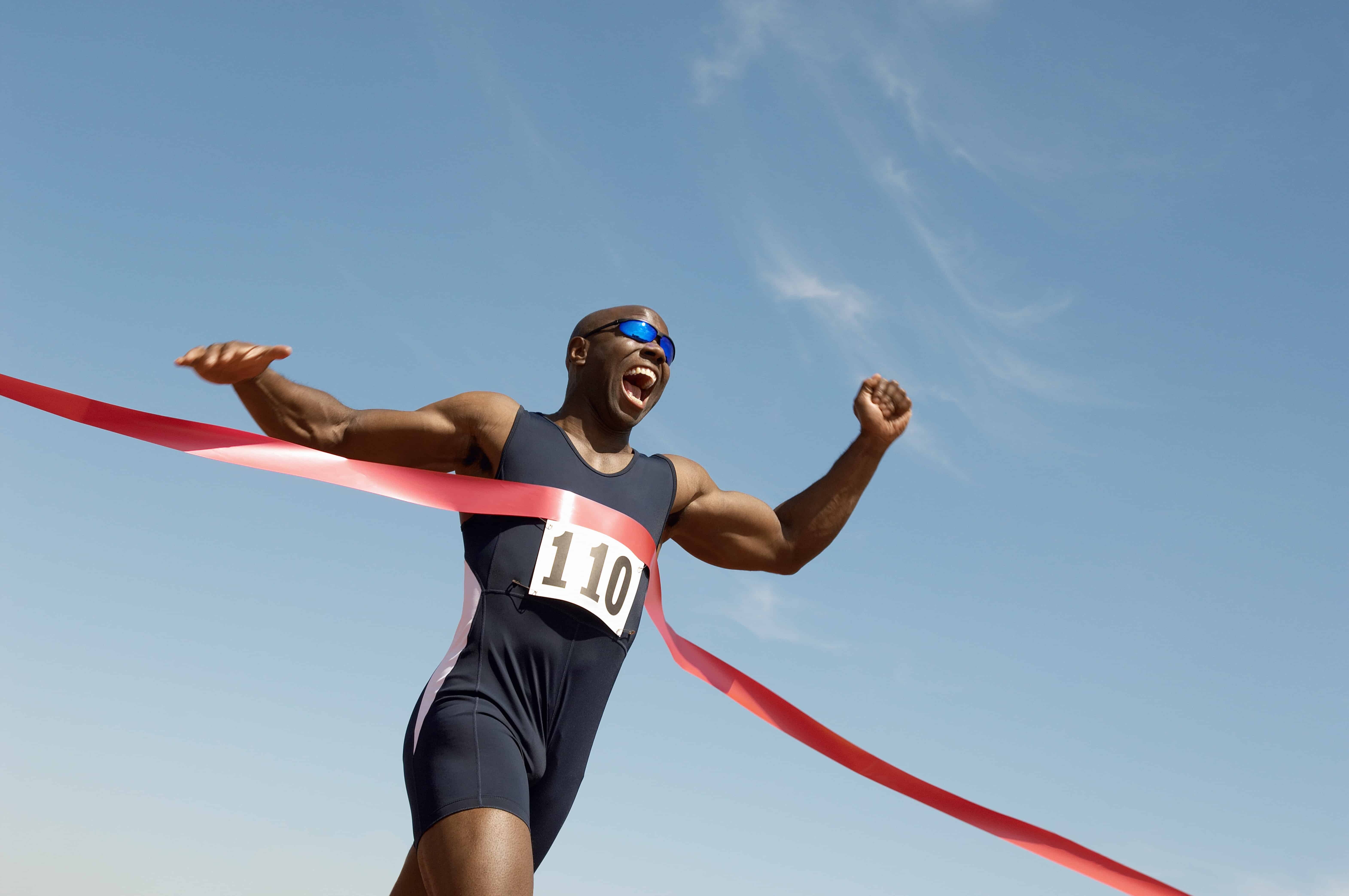
Depasquale advises starting with a “reverse taper” after 10-14 days of full rest. This gradual increase in running volume mirrors how you tapered before the marathon. Even if you’re feeling good, Depasquale cautions against jumping back in too quickly. “Feeling fine and/or no longer having muscle soreness is not a sign you are fully recovered from your marathon,” she explains. “26.2 miles is a big stress on the body, no matter how prepared for it you are.” A marathon places immense stress on your body, and even if you’re mentally ready to go, your muscles, tendons and cellular structures are still undergoing repair.
Embrace the easy pace
The first few runs back may feel harder than expected, but this isn’t due to lost fitness—your body is still healing on a deep level. “Running will likely feel hard in the three to four weeks post-marathon, and that is not because you have lost your fitness. It’s because your body is still recovering on a cellular level,” Depasquale says. She suggests that all post-marathon runs be kept at a relaxed, conversational pace. (Advanced runners may be able to introduce light speed work by the fourth week, but even then, it’s important to tread carefully.)
By giving your body time to fully bounce back, you’ll be setting yourself up for a stronger, healthier return to training.
(11/08/2024) ⚡AMPby Keeley Milne
'He made me eat cleaner & work harder' - Justin Gatlin on how Usain Bolt shaped him into becoming a better sprinter
Justin Gatlin has heaped praise on his long-time arch-nemesis Usain Bolt, thanking him for making him the athlete he ended up becoming after returning to the sport.
American sprint icon Justin Gatlin has revealed the profound impact Usain Bolt had on his career, acknowledging how the Jamaican legend pushed him to reach new heights.

Known for a rivalry that defined an era of sprinting, Gatlin and Bolt clashed in numerous unforgettable races, showcasing contrasts in style and personality. Yet, despite the fierce competition, Gatlin now reflects on their encounters with admiration, crediting Bolt for inspiring him to be his best.
“Competing against someone like him, he brought the best out of me,” Gatlin said on The Higher Perspective Talks.
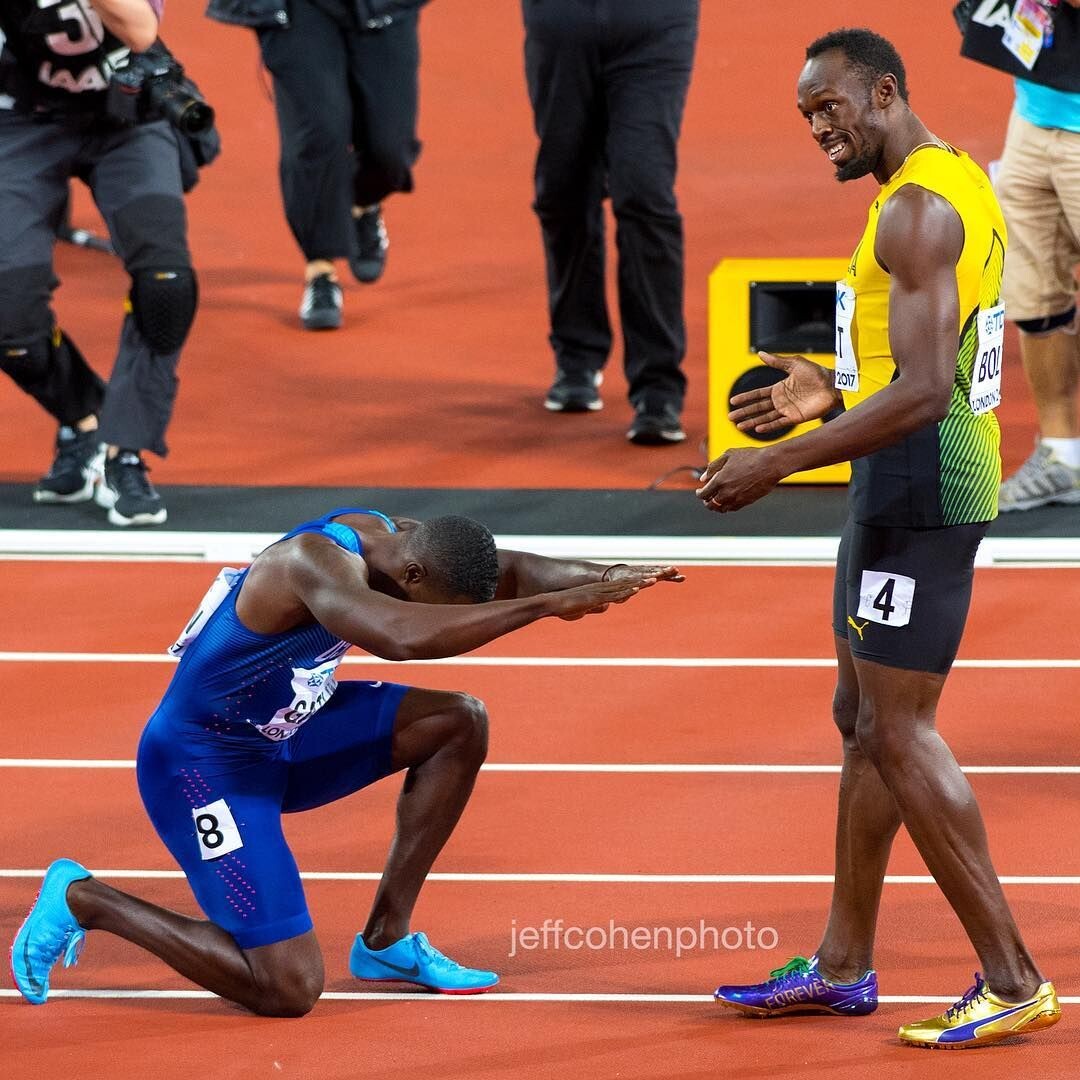
His comments came just over a week after Bolt himself recognized Gatlin as his toughest competitor. Gatlin expressed that Bolt’s presence on the track forced him to elevate his approach to training, nutrition, and overall athletic dedication.
“He made me wanna train harder. He made me wanna be a different athlete. He made me eat cleaner, work harder, compete harder because that was an athlete that represented a standard, one that I always wanted to get to,” Gatlin explained, underscoring the high benchmark Bolt set with his relentless speed and unwavering confidence.
Reflecting on their head-to-head races, Gatlin noted that he was always ready to face Bolt, eager to test himself against the reigning champion. “When I banged against him, I was ready any time. I wanted to race him every day if I could,” Gatlin shared. His words highlight not only the intensity of their rivalry but also the motivation he found in trying to match Bolt’s prowess.
Usain Bolt also had kind words for Gatlin during a recent appearance on John Obi Mikel’s Obi One podcast. “I think Justin Gatlin, I have to give my hats off to him,” Bolt said. “The last five, six years of my career, it was me and him every season. He kept me on my toes throughout, and I loved the competition.”
Bolt recalled a particularly memorable exchange when he saw a video of Gatlin confidently declaring his intent to win gold.
“I remember I’m just on Instagram scrolling, and someone sent me a video,” Bolt recounted. “He [Gatlin] was like, ‘Justin, I’m gonna win, don’t worry, and I’m going to wear the gold medal around my neck.’ And I’m like, ‘What? Alright, let’s go then.’”
Recognizing Gatlin’s fierce resolve, Bolt added, “Listen, Gatlin is going to show up. He is that guy in a Championship; no matter what is going on, he is going to show up.”
Their rivalry may have seen Bolt take the lion’s share of victories, but the respect they have for one another transcends competition.
As Gatlin reflects on his journey, it’s clear that Bolt’s influence left a lasting mark, inspiring him to push beyond his limits in pursuit of excellence. Their rivalry brought unparalleled excitement to the sport, and their mutual respect continues to exemplify the power of elite competition.
(11/08/2024) ⚡AMPby Mark Kinyanjui
French marathon record holder facing domestic violence charges
Morhad Amdouni, known for knocking over water bottles at the Tokyo Olympics, will be tried in court in February after allegedly attempting to strangle his wife.
French marathon record holder Morhad Amdouni has been reportedly summoned to appear before the Meaux criminal court in February for alleged domestic violence. Despite heated denials by the accused party, additional claims by his wife of sexual assault and rape are currently being investigated by French authorities.
The reported incident occurred after an argument broke out upon the partner learning of Amdouni’s infidelity; the victim claims her husband attempted to strangle her in front of their son. Amdouni was arrested at his Serris, France home on Sept. 18.
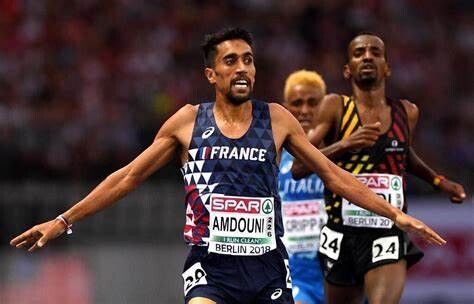
The father of two is facing charges of willful violence against his partner; the alleged assault reportedly left her unable to work for multiple days. The marathoner’s mother, brother and mistress underwent questioning regarding the domestic violence claim.
While no longer detained in custody, Amdouni has been placed under judicial supervision “for acts of domestic violence committed between September 2023 and September 2024,” as confirmed by the Meaux prosecutor’s office, until his court hearing, scheduled for Feb. 24, 2025. The prosecutor’s office is still investigating the victim’s further claims of sexual assault and rape.

L’Equipe reports that Amdouni confirmed the arrest and his upcoming summons. “Arguments between couples can happen,” he told L’Equipe. “But to the point where it gets to this point, that’s a lot. I want us to be able to resolve these delicate matters between adults.”
In 2018, Amdouni became the first French athlete in history to win the 10,000m title at the European Athletics Championships in Berlin. He set the national record of 2:03:47 at the Zurich Seville Marathon in February. He did not compete at the Paris Olympics due to injury.
A notorious athlete
Amdouni has a reputation in the running world; the 36-year-old gained negative attention after knocking over elites’ drinks bottles at a water station, leaving no drinks for the athletes behind him.
The French runner also hit headlines in 2019, after media channels published alleged conversations between him and a doping supplier from 2017.
(11/07/2024) ⚡AMPby Cameron Ormond
Tokyo Marathon runner-up banned for doping
Former Tokyo Marathon runner-up Tsehay Gemechu was banned for four years because of suspected blood doping, the Athletics Integrity Unit said Thursday (Friday in Manila).
The 25-year-old Ethiopian also was disqualified from all her results and prize money earned since March 2020, including second place in the elite-level Tokyo race in March 2023. Her run of just under 2 hours, 17 minutes had ranked No. 24 in the women's all-time list.
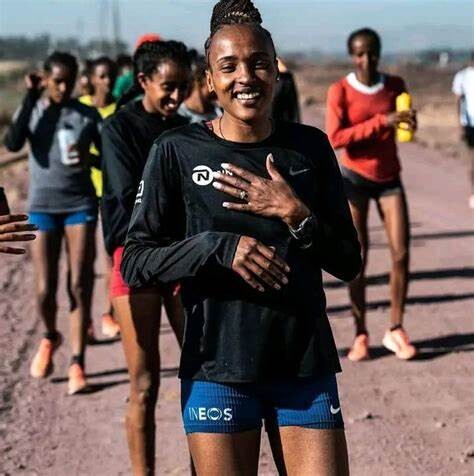
Gemechu also placed fourth over 5,000 meters at the 2019 world championships in Doha, Qatar, and ran in the 10,000 at the Tokyo Olympics held in 2021. She already was disqualified from that Olympics race for a lane violation. She did not finish the marathon at the 2023 worlds in Budapest, Hungary.
The AIU said Gemechu had suspicious blood values in her athlete biological passport. It can show indicators of doping over longer periods of time without the need for a positive test.
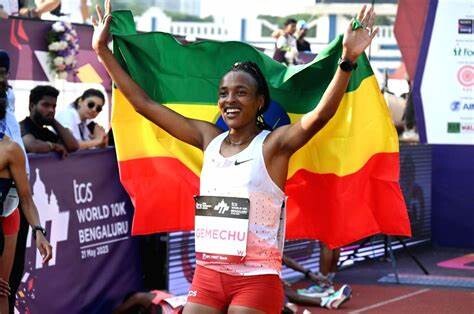
Gemechu gave 50 blood samples over a five-year period with those taken in March 2020 then April and May 2022 "indicative of blood manipulation," according to an independent doping tribunal's verdict.
She is banned until November 2027.
(11/07/2024) ⚡AMPby Associated Press
Tokyo Marathon
The Tokyo Marathon is a world-renowned annual marathon held in Tokyo, Japan. As one of the prestigious Abbott World Marathon Majors, it attracts elite and amateur runners from around the globe. The race holds World Athletics Platinum Label status, recognizing its high competitive standards, top-tier organization, and international appeal. Sponsored by Tokyo Metro, the Tokyo Marathon has grown into one...
more...Strong group of Dutch riders at Zevenheuvelenloop will be on the hunt for the Dutch record on the 15 kilometers
On Sunday November 17, a strong group of Dutch runners will be on the hunt for the Dutch record on the 15 kilometers. Mike Foppen from Nijmegen is going for the record in his hometown and will face competition from Richard Douma, Filmon Tesfu, Khalid Choukoud, Frank Futselaar and Gianluca Assorgia, among others. In the women's race, Olympians Diane van Es and Maureen Koster will start.
Battle for the Dutch recordMike Foppen and Richard Douma are the runners with the fastest times on the 15 kilometers behind their name. Foppen has a best time of 43:21 and Douma of 43:18. Filmon Tesfu starts as one of the favorites after his successful marathon debut in Amsterdam (2:10:58). Last year he trumped Foppen in the final sprint and finished as the fastest Dutchman. Khalid Choukoud is the Dutch record holder with his time of 43:13 from 2019 and is also competing. The Dutch men will face competition from Belgium from Koen Naert (personal best 43:37) and from Germany from Nils Voigt (personal best 43:18).
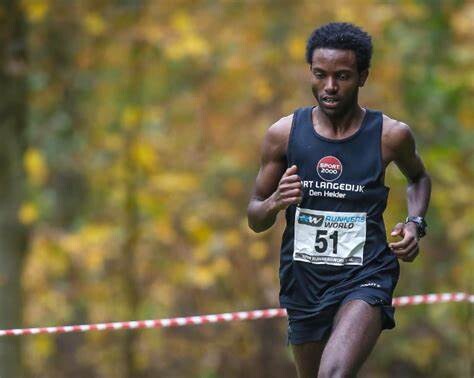
Four Dutch Olympians in the women'srace Training mates Diane van Es and Maureen Koster are competing for the title of fastest Dutchwoman. Van Es competed in the 10,000 meters in Paris and finished sixteenth at that distance. Two months before the Olympics, the 25-year-old runner won silver on the longest track distance at the European Athletics Championships. In 2022, Diane van Es was the fastest Dutch rider at the NN Zevenheuvelen in 47:57.
Maureen Koster also competed at the Olympics in Paris. She finished tenth in her heat in the 5,000 meters. In 2018, the 32-year-old athlete ran her best time on the 15 kilometers at the NN Zevenheuvelenloop: 49:04. Just like her teammate Van Es, Koster has a European Championship medal in her cabinet: silver in the 3,000 meters indoor in 2015.
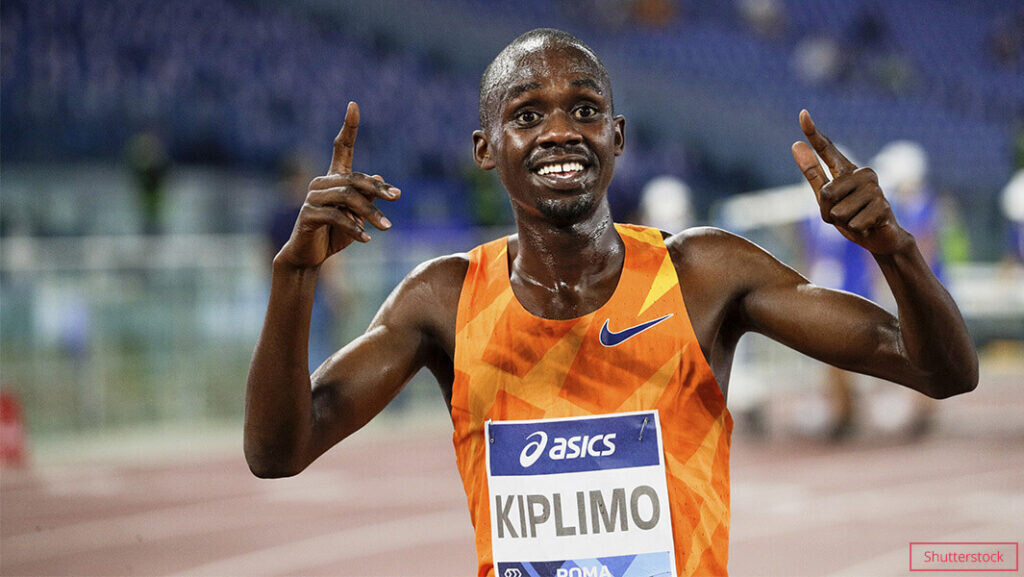
In addition to Van Es and Koster, Olympians Jill Holterman and Rachel Klamer will also be at the start. Holterman ran the Tokyo Marathon in 2021. Klamer has competed in the triathlon for the past four Olympic Games. In Tokyo, she achieved her best result with a fourth place.
TheUgandan athlete Jacob Kiplimo defends his title at the NN Zevenheuvelenloop. Last year, the 23-year-old athlete equalled the world record in the 15 kilometres in Nijmegen. This year he will compete with his half-brother Victor Kiplangat, reigning world champion in the marathon. In the women's race, European half marathon champion Karoline Bjerkeli Grøvdal is on the start list.
The 15 kilometres of the 39th NN Zevenheuvelenloop are sold out with 28,000 participants. With more than 10,000 registrations, the 10th Night of the Seven Hills has a record number of registrations.Below are the start lists of the 39th NN Zevenheuvelenloop.
(11/07/2024) ⚡AMPThe NN Zevenheuvelenloop
The NN Zevenheuvelenloop, or Seven Hills Run, is an annual 15-kilometer road race held in Nijmegen, Netherlands. Established in 1984 as a modest event with 500 male participants, it has evolved into one of Europe's premier running events, attracting over 25,000 runners in recent years. Renowned for its picturesque and undulating course, the Zevenheuvelenloop has been the stage for multiple...
more...Fukuoka International Marathon Elite Field Released
Fukuoka International Marathon is the first of this winter season's big selection races for the home soil team for next year's Tokyo World Championships, and the domestic field is a great one.
Kenya Sonota, 2:05:59 in Tokyo last year, and 2:06 men Yusuke Nishiyama, Yuya Yoshida, Kazuya Nishiyama and Daisuke Doi make up the main contenders to get a spot, with internationals Lemeck Too, Jie He, Bethwel Yegon, Vincent Raimoi, last year's winner Michael Githae, and Shaohui Yang perfectly positioned to add momentum to the shot at the 2:06:30 Worlds standard that they'll all be taking.

8 other Japanese men in the 2:07 to 2:09 range make it one of the most competitive Fukuoka editions in a long, long time.
Last year Githae outkicked Yang by 1 second to win 2:07:08 to 2:07:09, Yang with a Chinese NR that was broken a few months later by He in Wuxi. Chinese men's marathoning has momentum right now too, and it wouldn't be surprising to see either He or Yang become Fukuoka's first Chinese winner. Jianhua Peng, 2:09:59 last year in Seoul, and Bo Li, 2:11:23 in Nanchang, are also in the race.
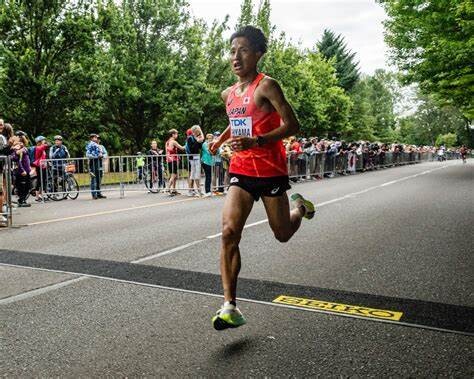
Fukuoka International Marathon Elite Field Highlights
Kenya Sonota (JR Higashi Nihon) - 2:05:59 (Tokyo 2023)
Lemeck Too (Kenya) - 2:06:29 (Rotterdam 2024)
Yusuke Nishiyama (Toyota) - 2:06:31 (Tokyo 2024)
Yuya Yoshida (GMO) - 2:06:37 (Osaka 2024)
Kazuya Nishiyama (Toyota) - 2:06:45 (Osaka 2023)
Daisuke Doi (Kurosaki Harima) - 2:06:54 (Osaka 2024)
Jie He (China) - 2:06:57 (Wuxi 2024)
Bethwel Yegon (Kenya) - 2:06:57 (Vienna 2023)
Vincent Raimoi (Kenya/Suzuki) - 2:07:01 (Fukuoka Int'l 2022)
Michael Githae (Kenya/Suzuki) - 2:07:08 (Fukuoka Int'l 2023)
Shaohui Yang (China) - 2:07:09 (Fukuoka Int'l 2023)
Koki Yoshioka (Kyudenko) - 2:07:28 (Osaka 2023)
Shin Kimura (Honda) - 2:07:34 (Tokyo 2024)
Derese Workneh (Ethiopia/Hiramatsu Byoin) - 2:07:58 (Beppu-Oita 2024)
Bedan Karoki (Kenya/Toyota) - 2:07:59 (Tokyo 2024)
Kazuya Azegami (Toyota) - 2:08:29 (Osaka 2023)
Kiyoshi Koga (Yasukawa Denki) - 2:08:30 (Beppu-Oita 2022)
Ryu Takaku (Yakult) - 2:08:38 (Fukuoka Int'l 2021)
Naoki Aiba (Chudenko) - 2:08:44 (Beppu-Oita 2022)
Kenta Murayama (Asahi Kasei) - 2:09:00 (Osaka 2024)
Kohei Futaoka (Chudenko) - 2:09:14 (Fukuoka Int'l 2021)
Jianhua Peng (China) - 2:09:59 (Seoul 2023)
Tesema Moges (Israel) - 2:10:31 (Rotterdam 2023)
Takumi Kumagai (Sumitomo Denko) - 2:10:41 (Fukuoka Int'l 2021)
Yusuke Tobimatsu (Hioki City Hall) - 2:10:47 (Hofu 2021)
Luka Musembi (Kenya/Tokyo T&F Assoc.) - 2:10:49 (Hokkaido 2022)
Asuka Tanaka (Runlife) - 2:11:09 (Tokyo 2022)
Bo Li (China) - 2:11:23 (Nanchang 2023)
Tadese Getahon (Israel) - debut - 1:00:47 (Copenhagen Half 2024)
(11/07/2024) ⚡AMPby Brett Larner
Fukuoka Marathon
The Fukuoka International Open Marathon Championship is one of the longest running races in Japan, it is alsoan international men’s marathon race established in 1947. The course record is held by Tsegaye Kebede of Ethiopia, running 2:05:18 in 2009. Frank Shorter won first straight years from 1971 to 1974. Derek Clayton set the World Record here in 1967 running 2:09:37. ...
more...Influencer banned from New York City Marathon for life over 'selfish' act
A running influencer has been slapped with a lifetime ban for competing in the New York City Marathon while flanked by 'two unauthorized people riding the course on electric bicycles,' according to race organizers.
Matt Choi, who posts videos of himself running and offering training tips on Instagram, was disqualified from the race and his time of 2:57:15 has been vacated after his performance across the five boroughs on Sunday.

'After a review and due to violations of World Athletics rules, and New York Road Runners' Code of Conduct and Rules of Competition, NYRR has disqualified Matt Choi from the 2024 TCS New York City Marathon and removed him from the results,' the nonprofit, which organizes New York races, said in a statement. 'He has been banned from any future NYRR races.'
'E-bikes don't belong in races,' he wrote on Instagram. 'No excuses. I was selfish & take full accountability of my actions. I apologize to all the runners impacted. I accept my DQ & lifetime ban from @nyrr. Never again.'

Choi admitted in a self-shot Instagram video that he had his brother and a videographer following him around the course on Sunday.
'I was selfish on Sunday,' he told his followers, while admitting that the bikes prevented some other runners from accessing water stations.
A native of Austin, Texas, Choi was among the 55,000 finishers at the marathon on Sunday, finishing nearly an hour after the winner, Abdi Nageeye of the Netherlands.
Choi was a football player at Division I Monmouth University in New Jersey before working as a personal trainer.
He gained some notoriety on Instagram during the pandemic, which helped him attract several sponsors. However, one sponsors, a training app known as Runna, has announced that is cutting ties with Choi.
For his part, Choi has made it clear that the decision to run with videographers was his and he wasn't encouraged to do so by any sponsor.
(11/06/2024) ⚡AMPby Alex Raskin
TCS New York City Marathon
The first New York City Marathon, organized in 1970 by Fred Lebow and Vince Chiappetta, was held entirely in Central Park. Of 127 entrants, only 55 men finished; the sole female entrant dropped out due to illness. Winners were given inexpensive wristwatches and recycled baseball and bowling trophies. The entry fee was $1 and the total event budget...
more...British Olympian Jodie Williams retires from athletics
British Olympian Jodie Williams has announced her retirement from athletics.
Williams, 31, competed at three Olympic Games and was part of Team GB's bronze medal-winning women's 4x400m relay team at Paris 2024.
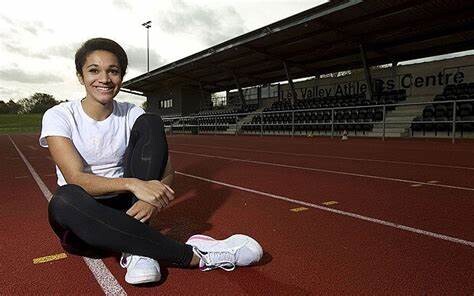
Among her individual honours, Williams won European and Commonwealth 200m silvers among nine major international medals at senior level.
"Dear track and field, the time has come for us to part ways," Williams posted on social media.

You allowed me to achieve my childhood dreams and have taken me from an awkward little girl with no confidence to a just as awkward but much more confident woman."
Williams specialised in the 200m and is the sixth-fastest British woman over that distance, with the 22.46 seconds she clocked for European silver in 2014.
Later in her career she also had success in the 400m, winning Commonwealth bronze in Birmingham in 2022.
She earned her first global medal as a member of the women's 4x400m team in Paris, competing in the heats before Victoria Ohuruogu, Laviai Nielsen, Nicole Yeargin and Amber Anning finished behind the United States and the Netherlands in the final.
(11/06/2024) ⚡AMPby BBC News
Record-breaking teen sprinter Gout Gout is set to train alongside Noah Lyles
Gout Gout recently signed with Adidas and will have the opportunity to train alongside world champion Noah Lyles, gaining valuable mentorship as he continues his path to the top.
After inking a lucrative deal with leading German athletic apparel and footwear corporation Adidas, Gout Gout will now have a chance to train with triple world champion Noah Lyles.
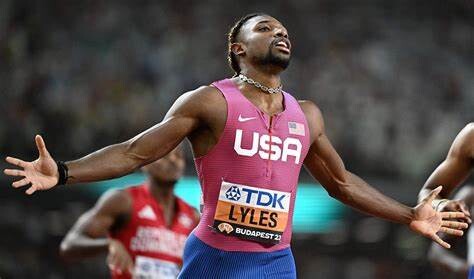
Gout Gout’s manager James Templeton noted that it is a great opportunity for the youngster to interact with Noah Lyles and get to know more about sprinting as he looks to chat his own path to the top.
James Templeton is optimistic that Noah Lyles will be open to teaching Gout Gout a lot, noting that he believes the reigning Olympic 100m champion is a great personality to be around.
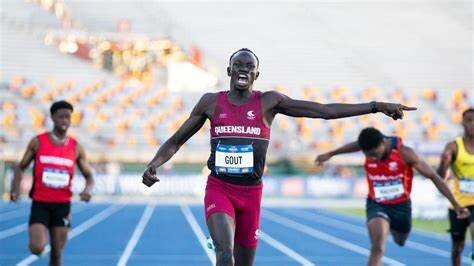
Noah Lyles is also an Adidas athlete and earlier this year, the American sprint king extended his contract until the 2028 Olympic Games in Los Angeles. Noah Lyles’ contract with Adidas is considered the richest in track and field since Usain Bolt's deal with Puma.
"We have the opportunity to go to Florida and join the training group of Noah Lyles and coach Lance Brauman (Lyles’ coach). There are about 16 or 18 top sprinters there,” James Templeton told ABC News.
"We'll be heading over for two or three weeks. That'll be a great opportunity, a wonderful educational experience. I haven't heard from Noah, but he's a great guy and I'm sure he'll be happy to take the younger guy under his wing a little bit."
Meanwhile, Gout Gout has been very impressive in his races and since 2022, he has proven to be unstoppable, running crazy times and making headlines. Gout Gout was named the holder of the Australian Under-16 100m and 200m records at the age of 14.
The following year, Gout Gout managed to break the Australian Under-18 men’s 200m record after running 20.87 seconds. He claimed top honors at the Australian Junior Athletics Championships in Brisbane.
In 2024, Gout Gout has been on top of the world with his crazy times and superb form. He started his season with a personal best time of 10.29 seconds to claim the win in the U-18 Boys 100m at the Queensland Athletics Championships.
Gout Gout then won the Australian U20 100m title in a time of 10.48 seconds in Adelaide before heading to the World Athletics U20 Championships in Lima, Peru. In Peru, the Australian youngster won a silver medal in the 200m.
He recently signed with Adidas and then proceeded to the Queensland All-Schools Championships, clocking a time of 20.29 seconds in the heats of the 200m to showcase his authority once again.
(11/06/2024) ⚡AMPby Abigael Wafula
Morgan Beadlescomb Withdraws From Manchester Road Race
Just hours after Manchester Road Race officials announced that Morgan Beadlescomb was set to defend his title, the elite runner withdrew from the 2024 field.
Race officials said Beadlescomb had committed to compete in Manchester several weeks ago, and his entry was announced by race organizers Monday. He notified the Manchester Road Race Committee later on Monday about his decision not to compete in this year's event.
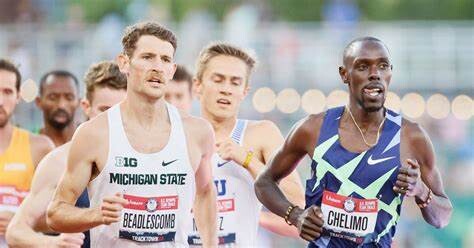
The 26-year-old Beadlescomb ran in the USATF 5-Kilometer Championship in New York City on Saturday and finished in 10th place. He won that race in 2023.
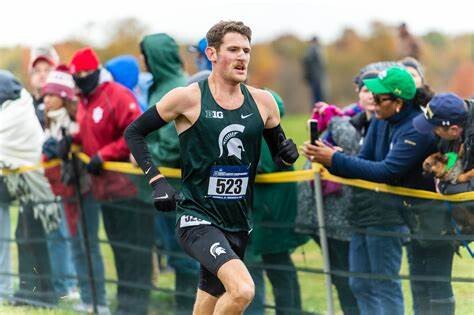
"We've been informed that Morgan consulted with his coach after Saturday's performance at the national 5-K race, and they decided that he would not be able to compete at the required level to give a good showing in Manchester," said Dr, Tris Carta, the longtime president of the Manchester Road Race. "We’ll certainly miss having him with us this Thanksgiving, and we hope that he’ll be back here in the near future."
Beadlescomb, an All-American runner at Michigan State University, won the 2023 MRR in a close race with runner-up Conner Mantz. A year earlier, he finished a close second here behind Mantz, who set the MRR course record of 21:04. Beadlescomb recorded 21:05, the second fastest time ever run on the Manchester course.
(11/06/2024) ⚡AMPby Chris Dehnel
Manchester Road Race
The Manchester Road race is one of New England’s oldest and most popular road races. The 86th Manchester Road Race will be held on Thanksgiving Day. It starts and finishes on Main Street, in front of St. James Church. The Connecticut Sports Writers’ Alliance recently honored the Manchester Road Race. The CSWA, which is comprised of sports journalists and broadcasters...
more...Eliud Kipchoge at 40: Records broken, medals won, history made…what more is left for marathon GOAT?
Marathon legend Eliud Kipchoge turns 40 on Tuesday and as he celebrates his landmark birthday, Pulse Sports rolls back the years in a career filled with many highs and some all-time lows.
They say life begins at 40 but for Kipchoge, he has been living the dream since his 20s.
Kipchoge turns 40 on Tuesday, November 5 and as he begins a new chapter in his life, the last two decades have been marked with remarkable success on track and roads.
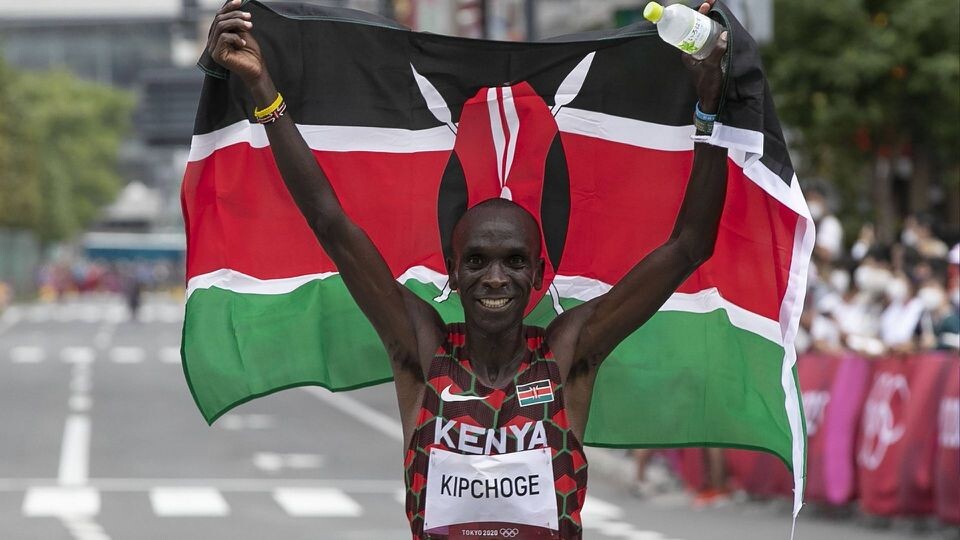
The two-time Olympics champion is the undisputed greatest marathoner of all-time, having won 15 of the 20 marathons he has participated in since he made the transition to from track to road in 2013.
Kipchoge has also won gold in Cross-Country, after claiming a junior title in 2003, the same year he won 5,000m gold at the World Championships in Paris.
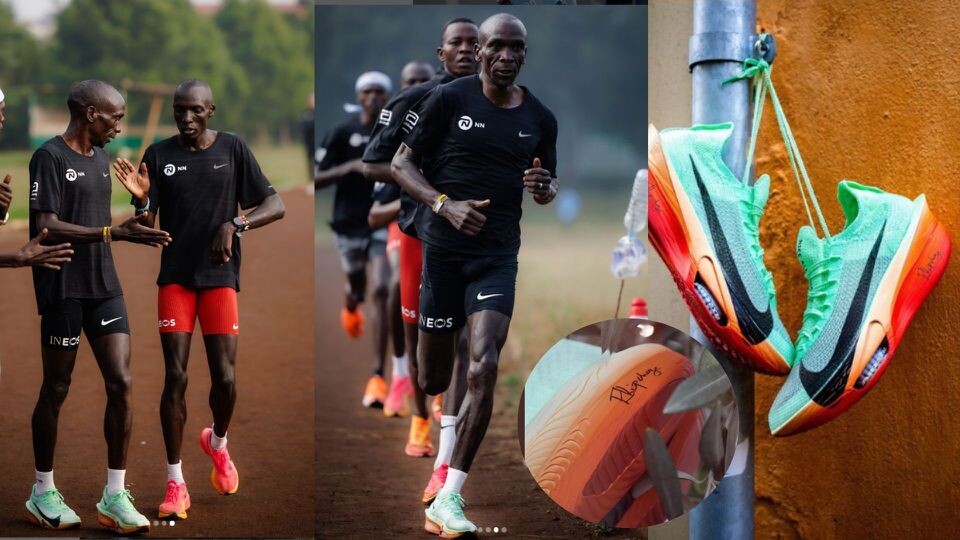
However, his years on track were not as storied as what he has achieved in marathons.
Major marathon success
In marathons, he has won five titles in Berlin, where he also broke two world records, while he has been to London five times and won on four occasions.
From the six major marathons (Tokyo, Boston, London, Berlin, Chicago, and New York), Kipchoge has been to five of them, with only New York where he is yet to run. He has won at four of them with only Boston proving tough after a sixth-place finish last year.
History maker
When the history of marathons is written, Kipchoge’s name will hog most of the chapters as he has made running a global phenomenon.
His ‘No human is Limited’ mantra has made everyone get encouraged not just to run but to succeed in their professions while he is the first man to run a marathon under two hours.
While it was not a competitive race, Kipchoge’s INEOS 1:59 Challenge in October 2019 proved that it is possible to clock under two hours in 42km, having run 1:59:40 in Vienna.
World records broken
Kipchoge was running in Vienna one year after breaking his first marathon record, having clocked 2:01:39 in Berlin in September of the previous year.
He had shaved off an astonishing 1 minute and 18 seconds from the 2:02:57 set by Kenyan compatriot Dennis Kimetto at the same venue four years earlier, proving that a sub-2:02 was possible.
That was his third win in Berlin and on his fourth appearance in the German capital, he lowered his own world record, running 2:01:09. His record lasted one year before compatriot Kelvin Kiptum broke it in Chicago last year (2:00:35) but the GOAT had already made his mark.
Role model to rivals & youngsters
Throughout his career, Kipchoge’s biggest strength has been how he kept up with younger and hungrier runners who were looking to dethrone him from the throne.
The veteran has never backed away from a challenge, even if there was an emerging threat, and most of the time, he came out on top.
Kipchoge sets an example for runners by the way he lives his life, how disciplined he is, his strict training regime and how keenly he follows his diet.
It is no wonder he has rarely suffered injuries in his long career, which draws parallels with football superstar Cristiano Ronaldo, who has enjoyed a long largely injury-free career due to how he looks after himself.
Bouncing back from setbacks
Kipchoge’s other strength is how he deals with disappointment. He does not let a bad race or bad words put him down.
Like every other athlete, he has suffered losses but always comes back strong. His failed attempt to break sub-2-hour mark in Monza in 2017 did not see him lose hope as he returned two years later and did it in Vienna, while finishing eighth in London in 2020 was answered back with Olympics, Berlin and Tokyo Marathon wins, with a world record in between.
After a sixth place in Boston in April 2023, he was on the winner’s podium in Berlin five months later, showing how resilient he is.
Even when many said he was finished after 10th place in Tokyo, he still came back to feature at the Paris Olympics and while he was not successful, he has not let it put him down.
Dealing with hate & cyberbullying
The year 2024 has thrown Kipchoge into a whole new territory, as a man who was so loved in Kenya quickly turned into a figure of hate in his own country.
It started in October 2023 when he took time before congratulating Kiptum for breaking his world record. It elicited vile comments on social media and it reached a whole new level when the world record holder died in February.
Kipchoge received abuses and threats that left him fearing for his life and that of his family, having been accused of having a hand in the death, and to his shock, even those whom he thought were friends and colleagues felt the same towards him.
He, however, took it on the chin and went about his business, featuring in two races this year although it is not known if it might have affected his performance.
What does the future hold?
Kipchoge’s strong mentality has seen him bounce back from all these setbacks and as he celebrates his 40th birthday, he is back in camp training for his next race.
A number of runners have shown that it is still possible to do it in their 40s and knowing Kipchoge, he must be backing himself to defy age and continue making marathon history.
Happy birthday, Eliud.
(11/05/2024) ⚡AMPby Joel Omotto












